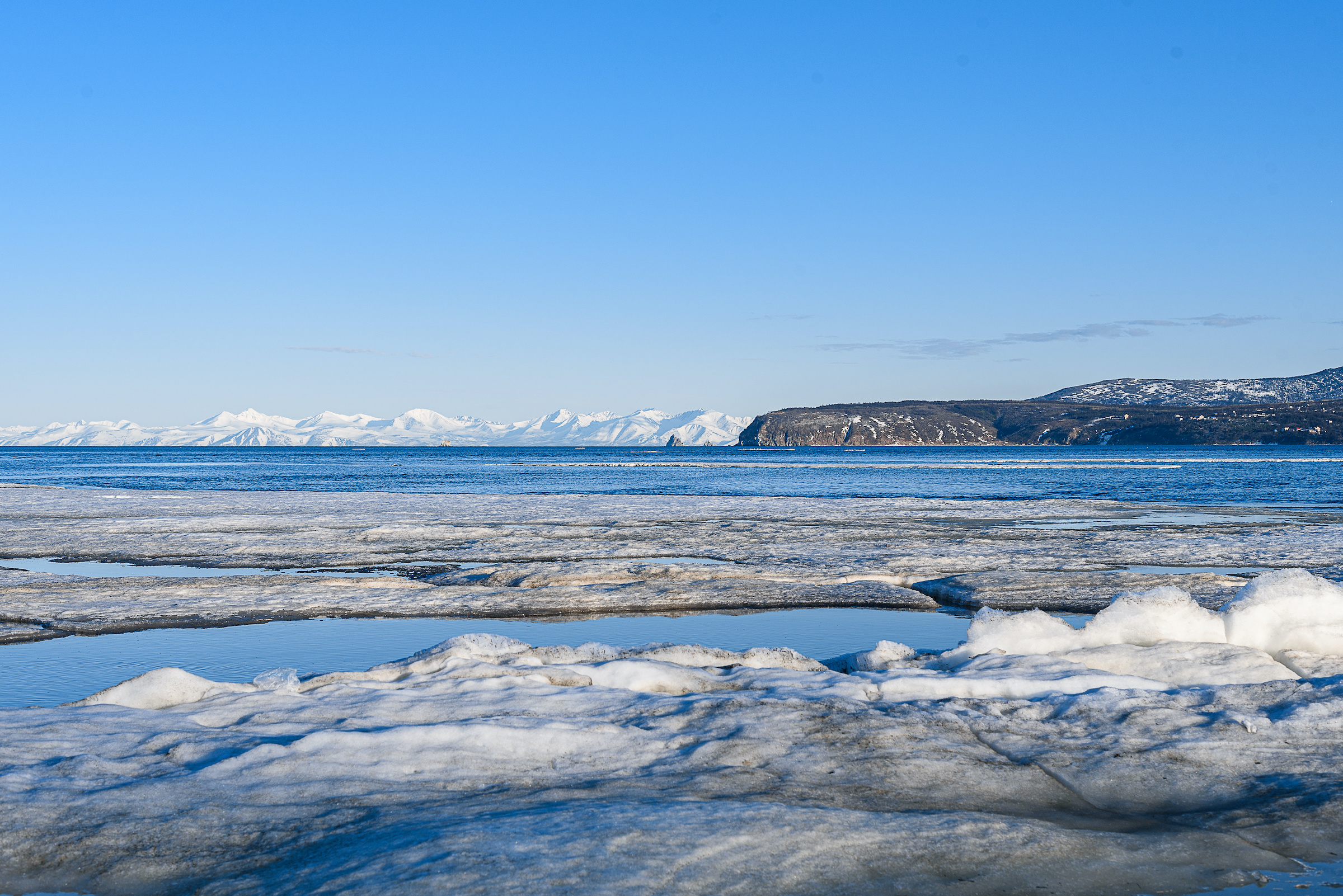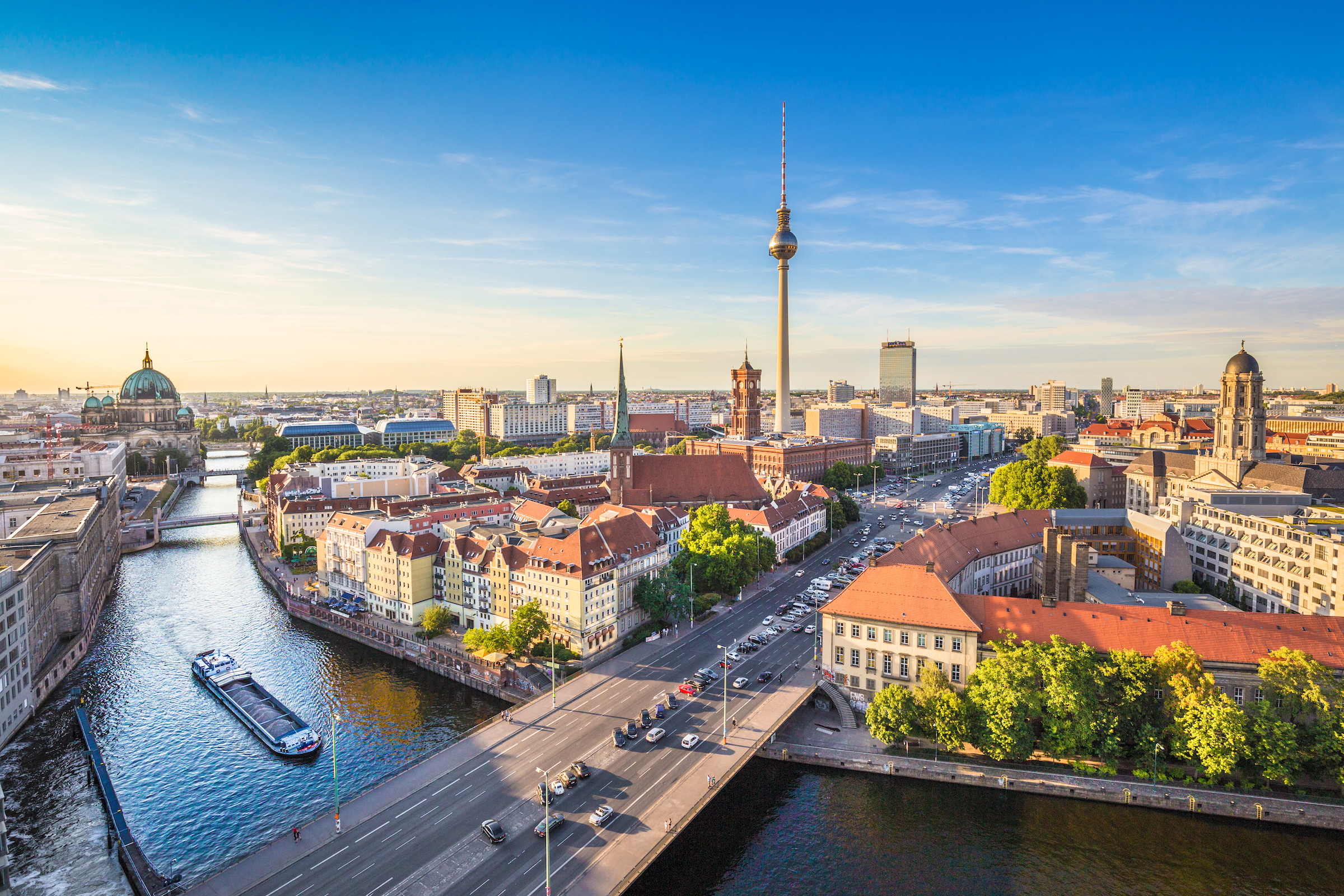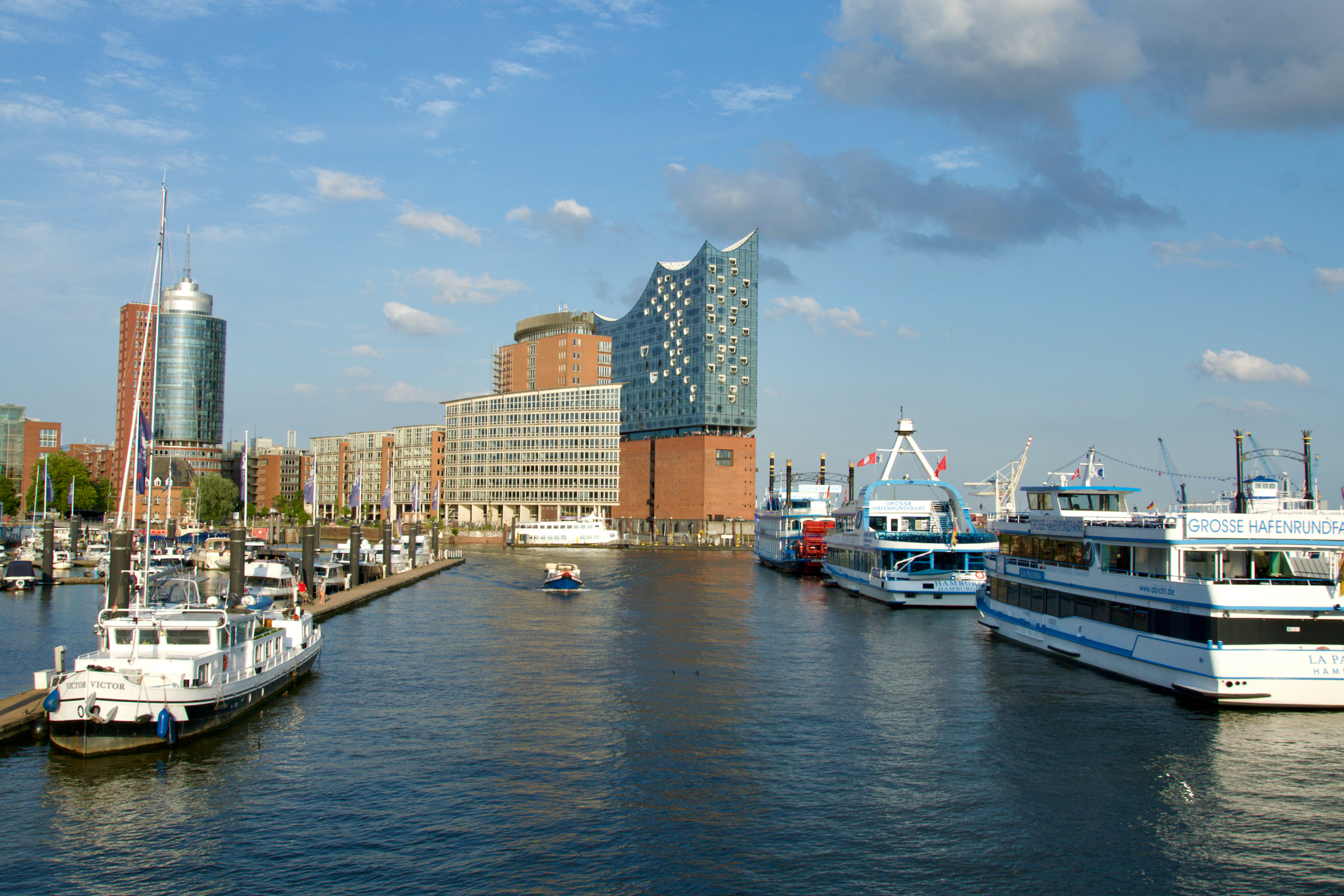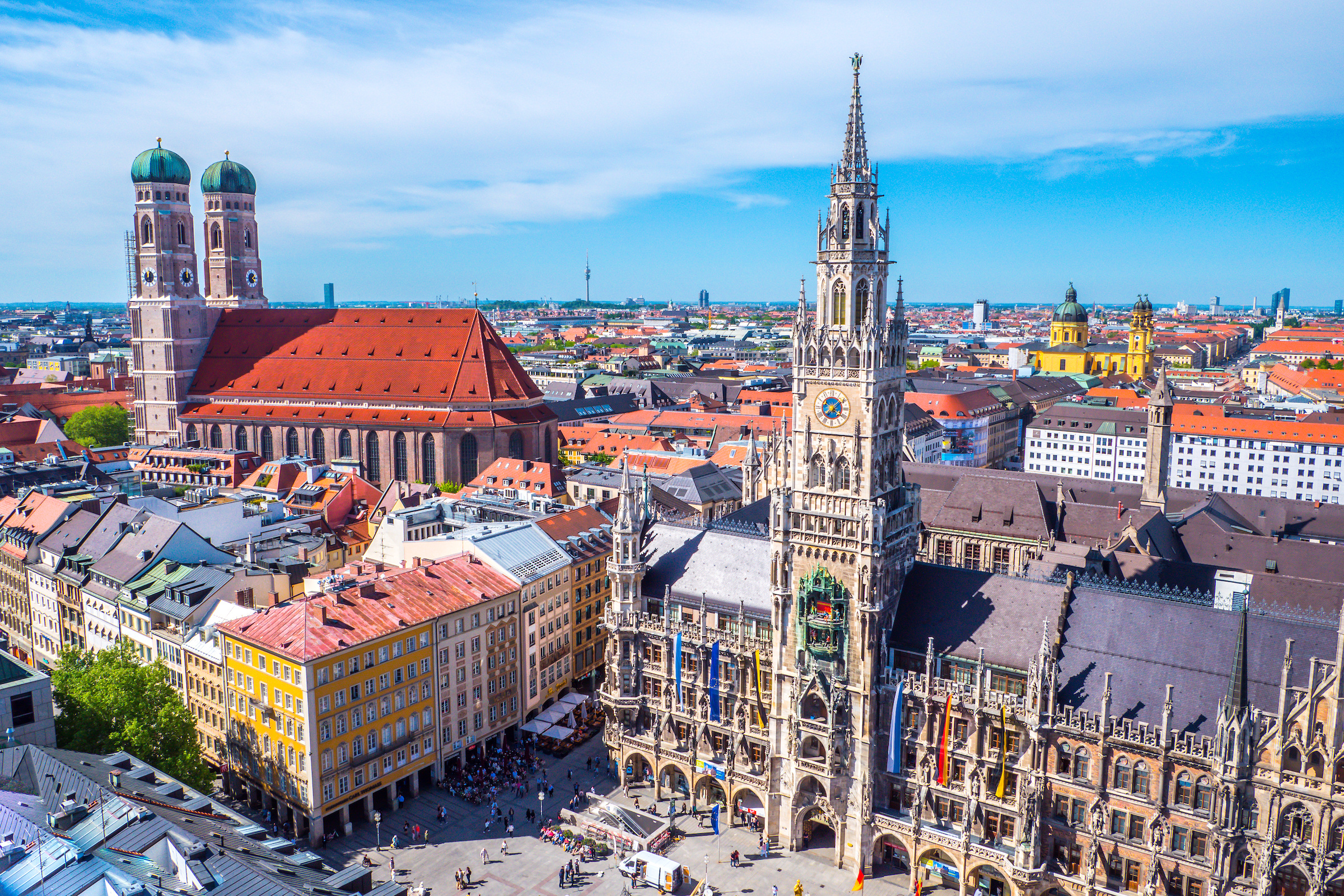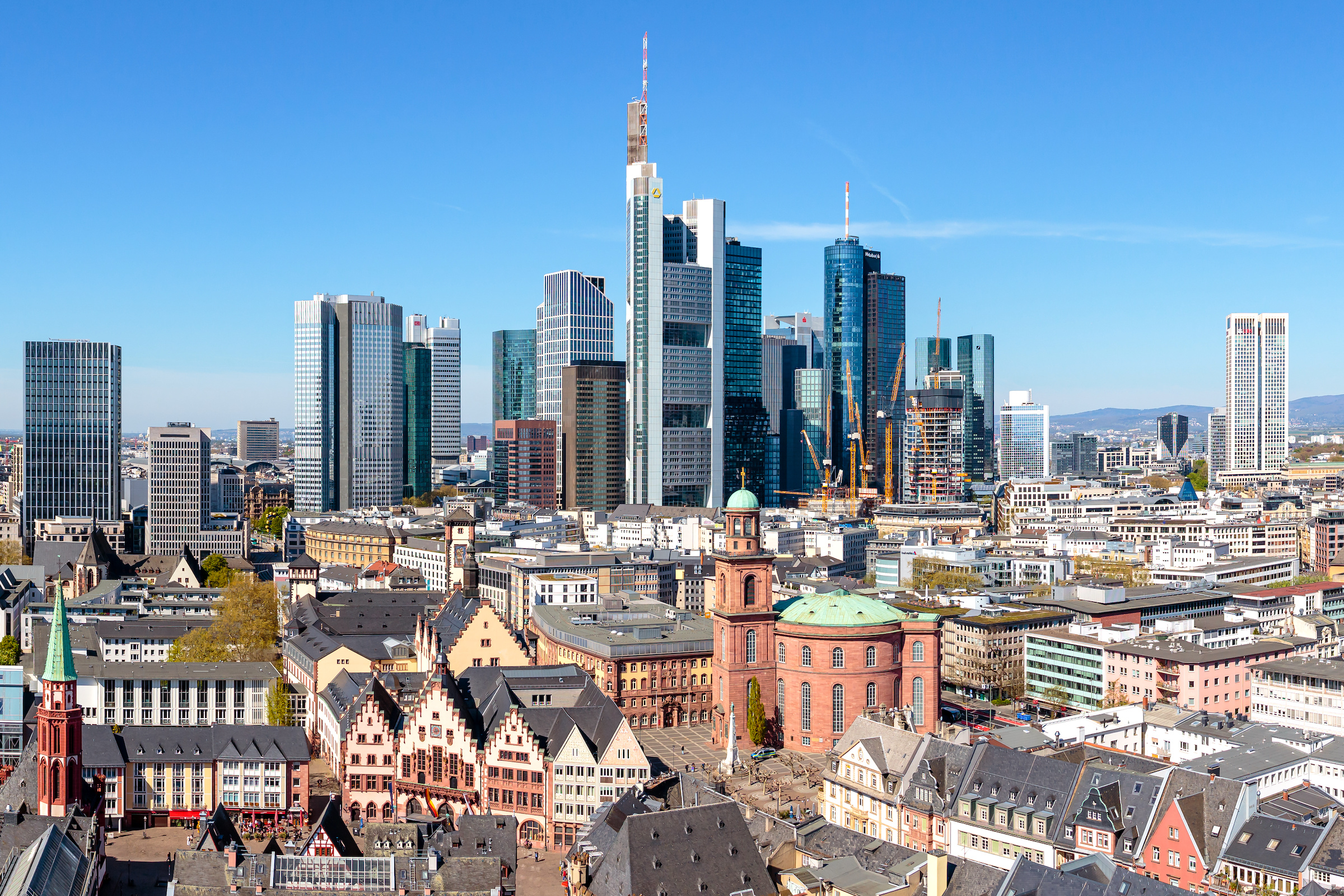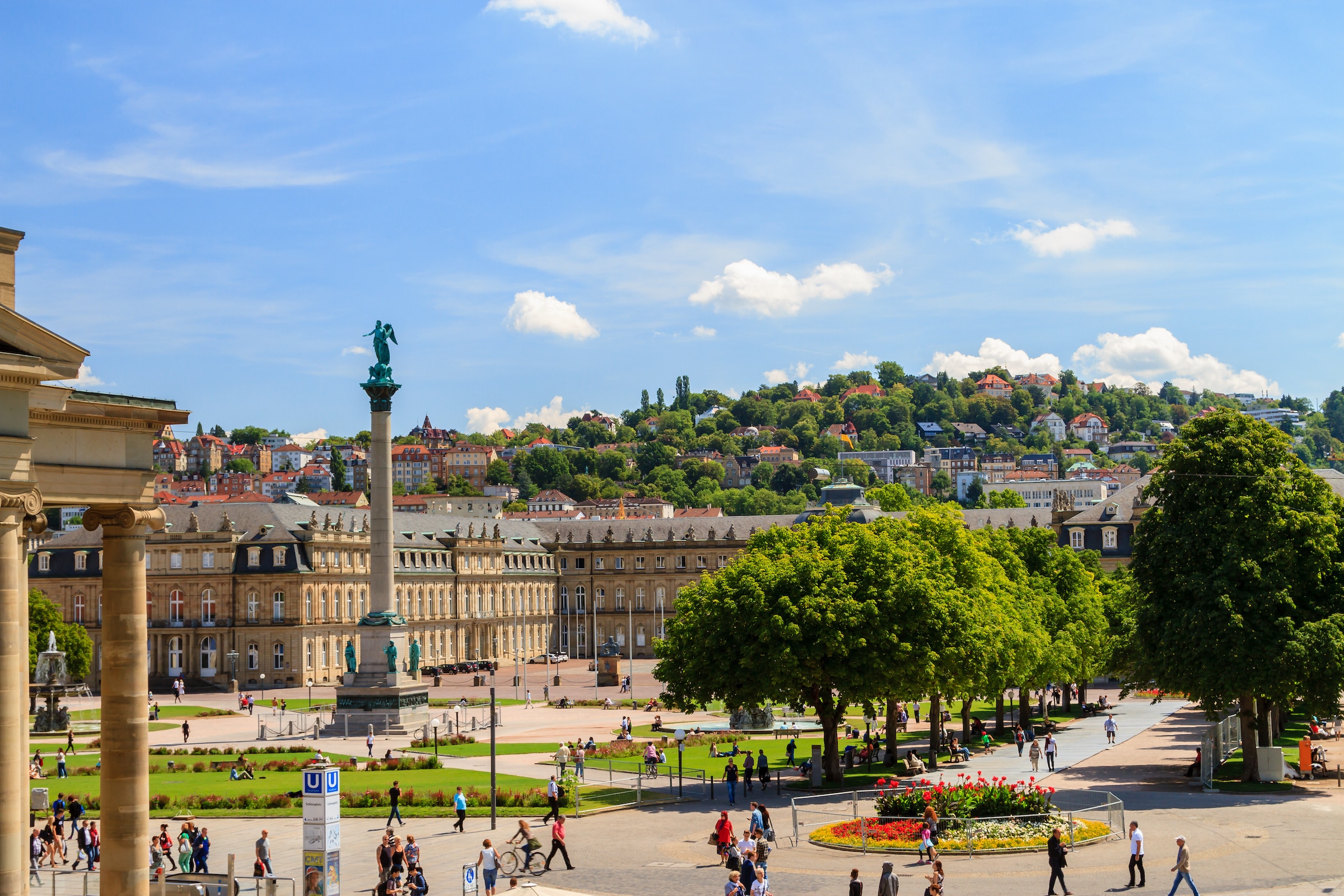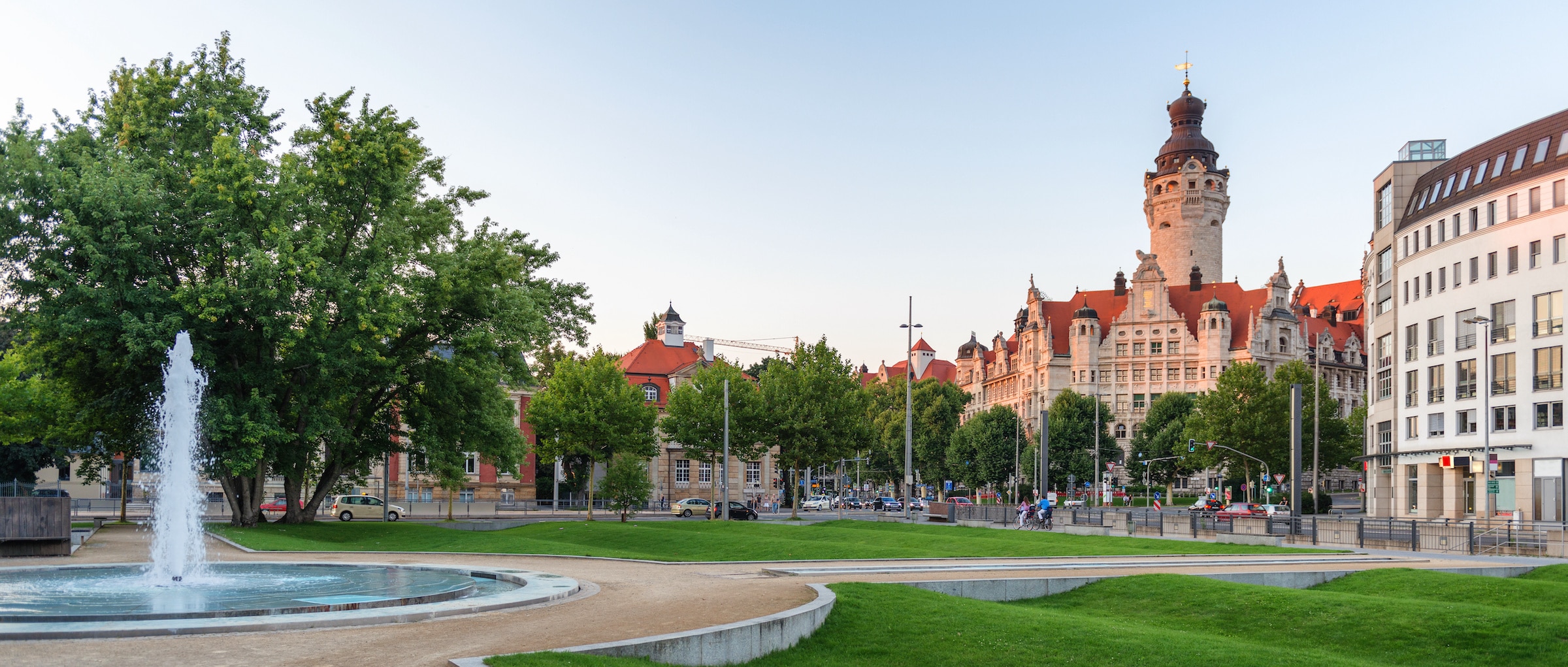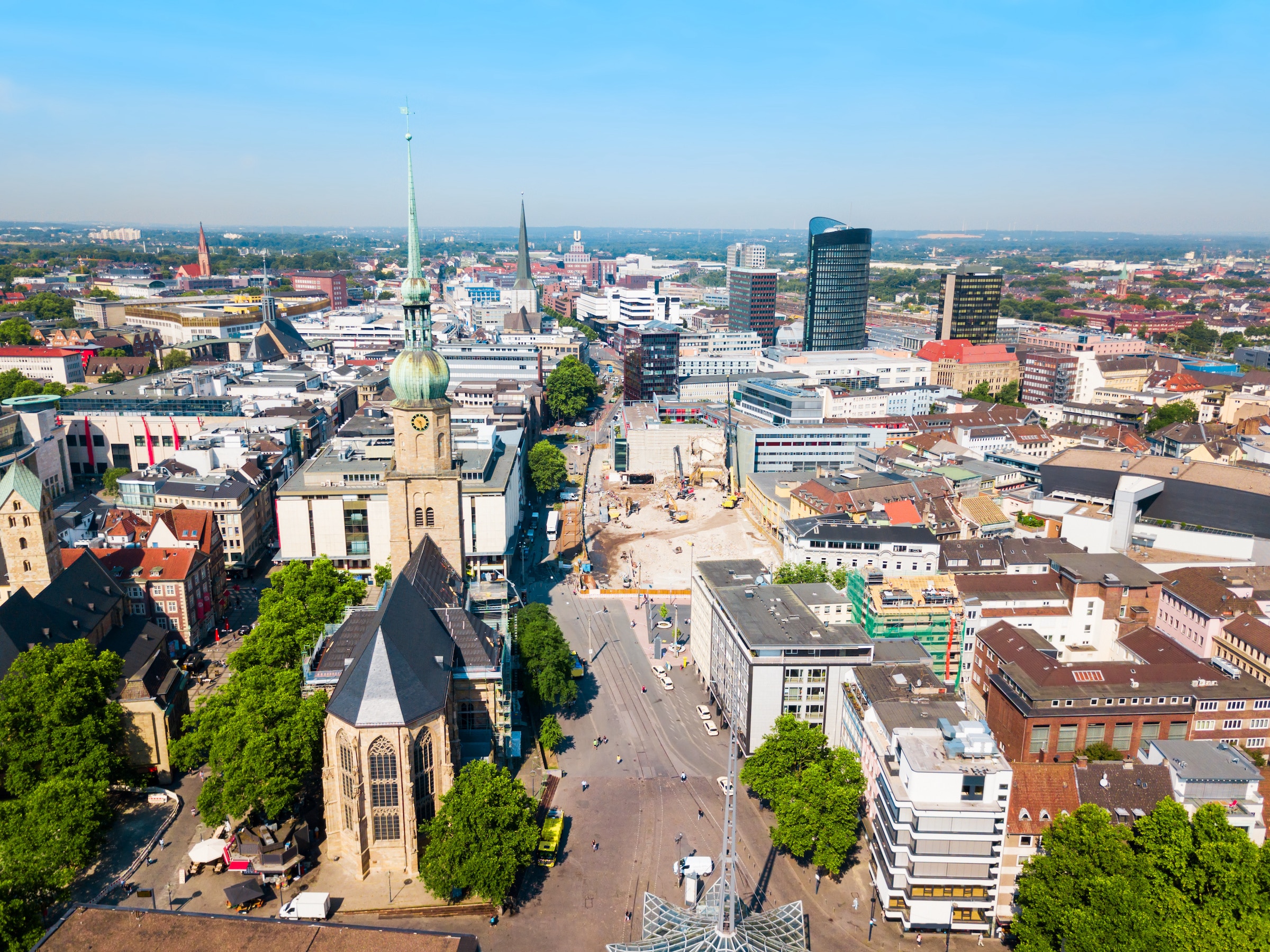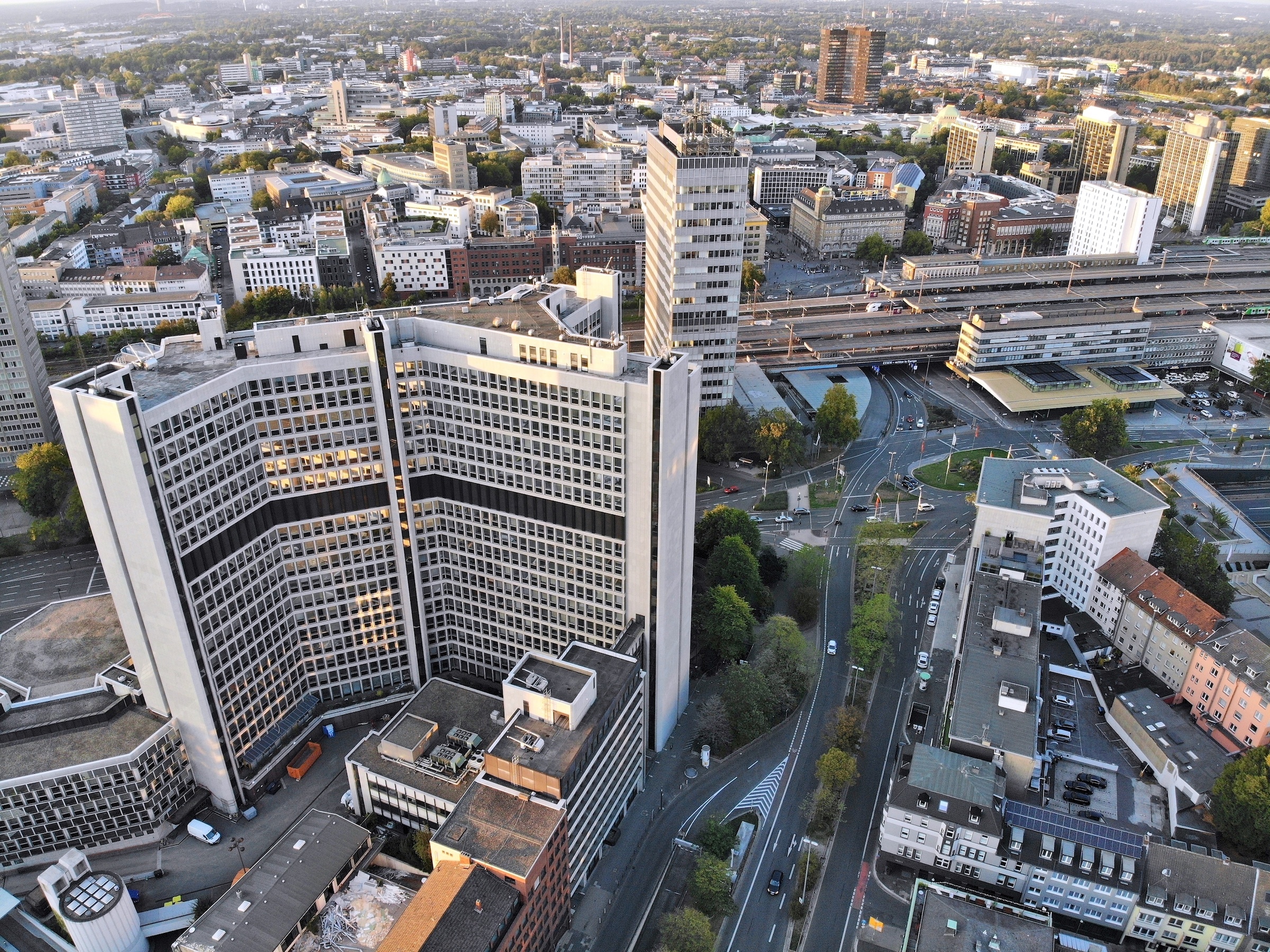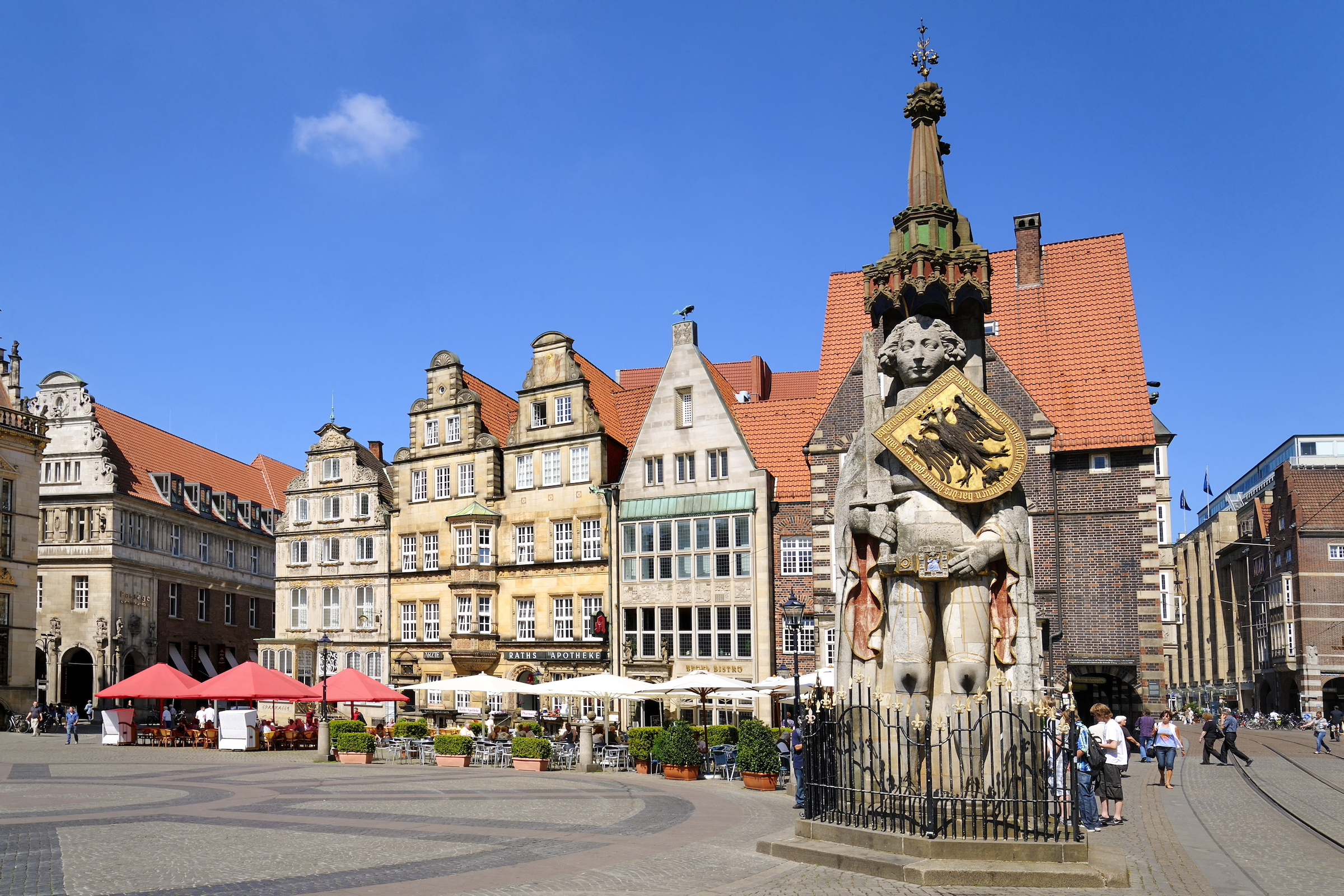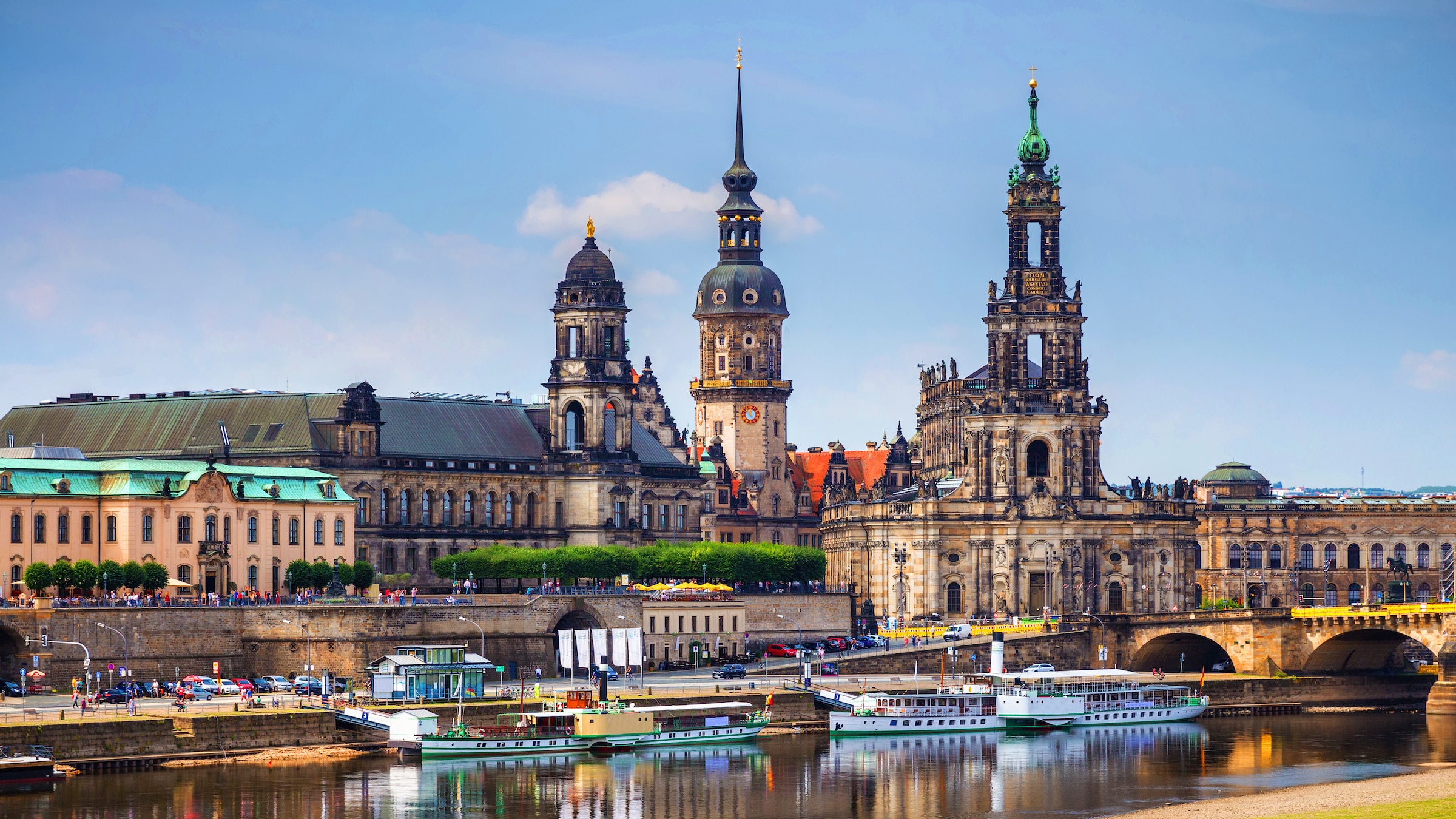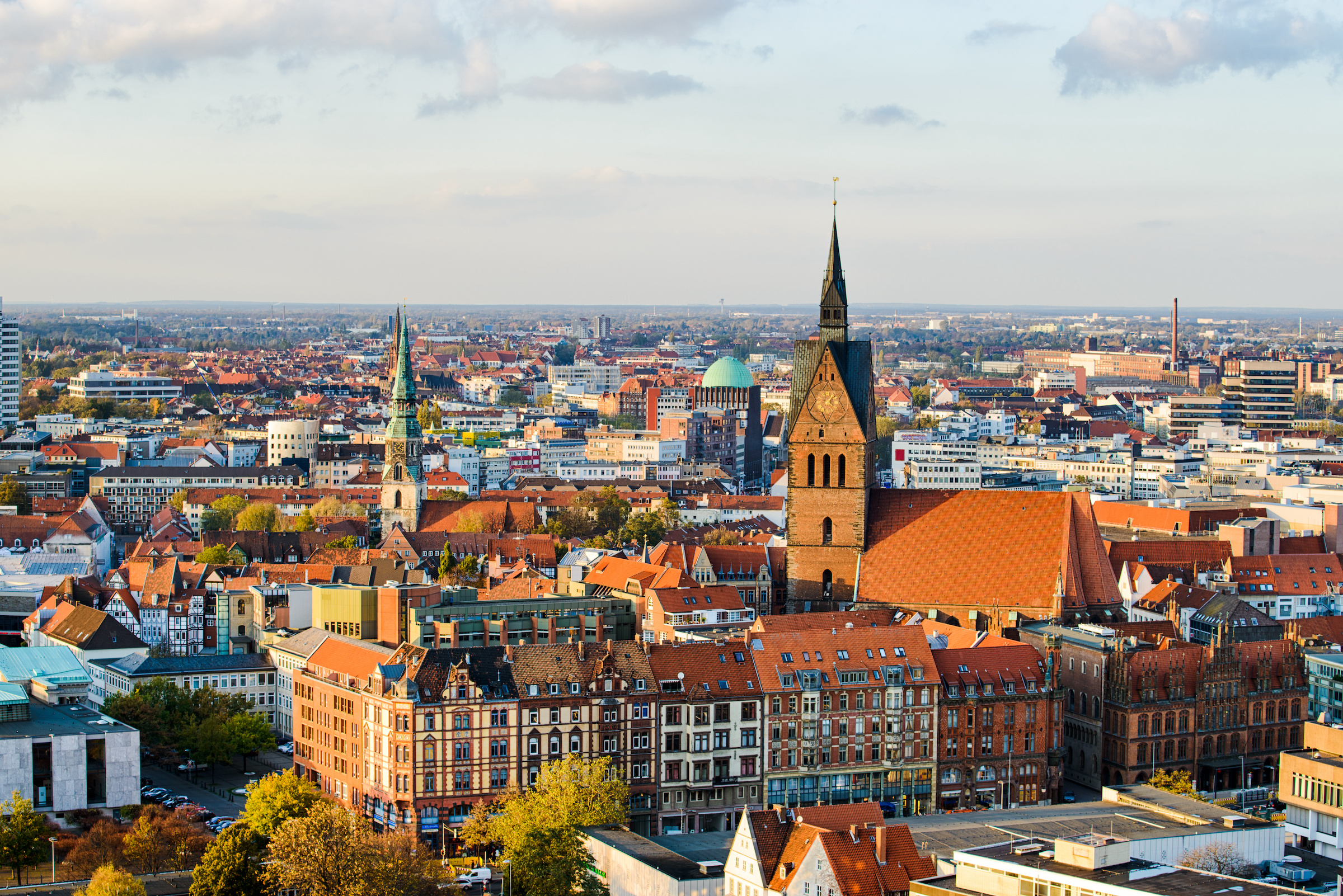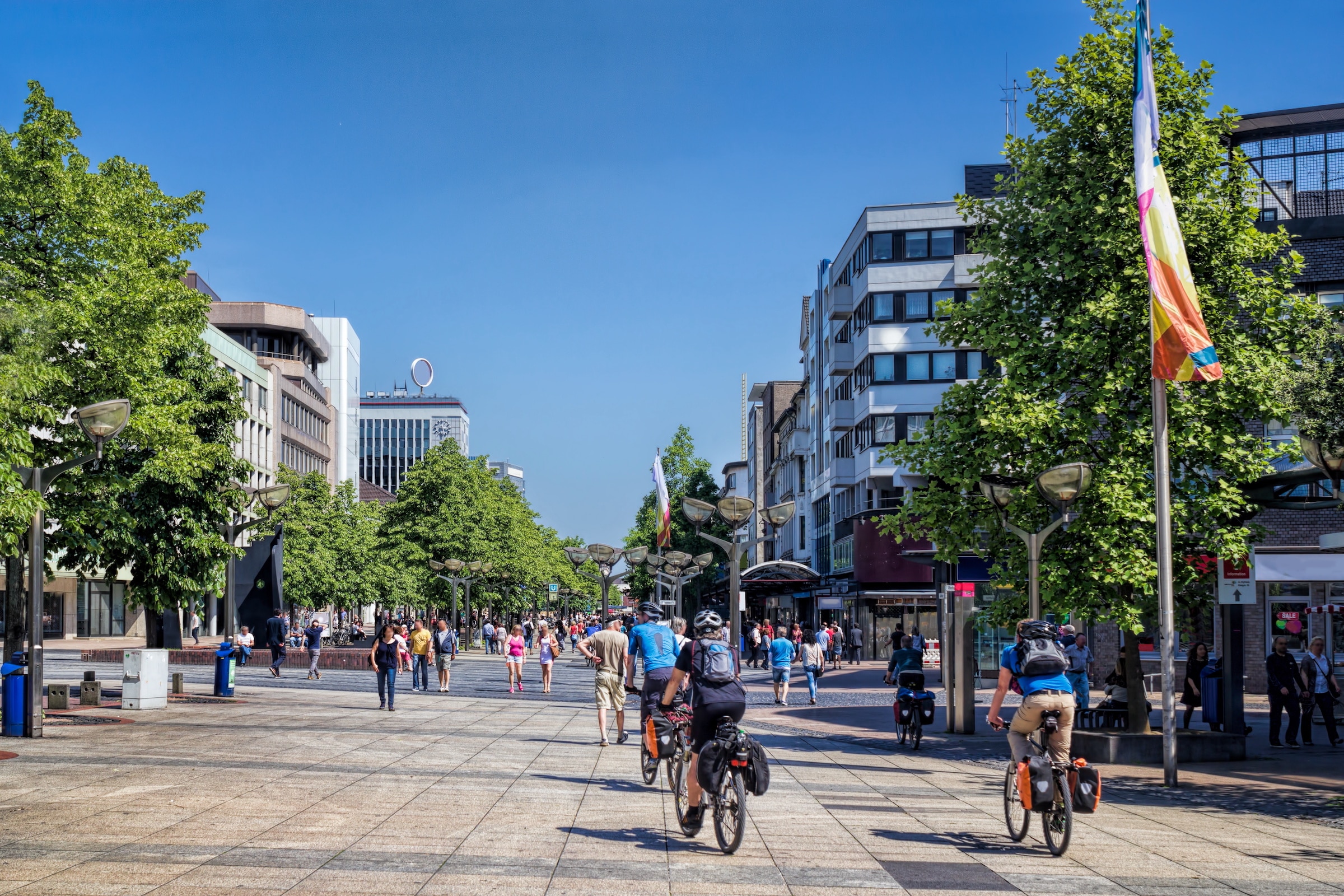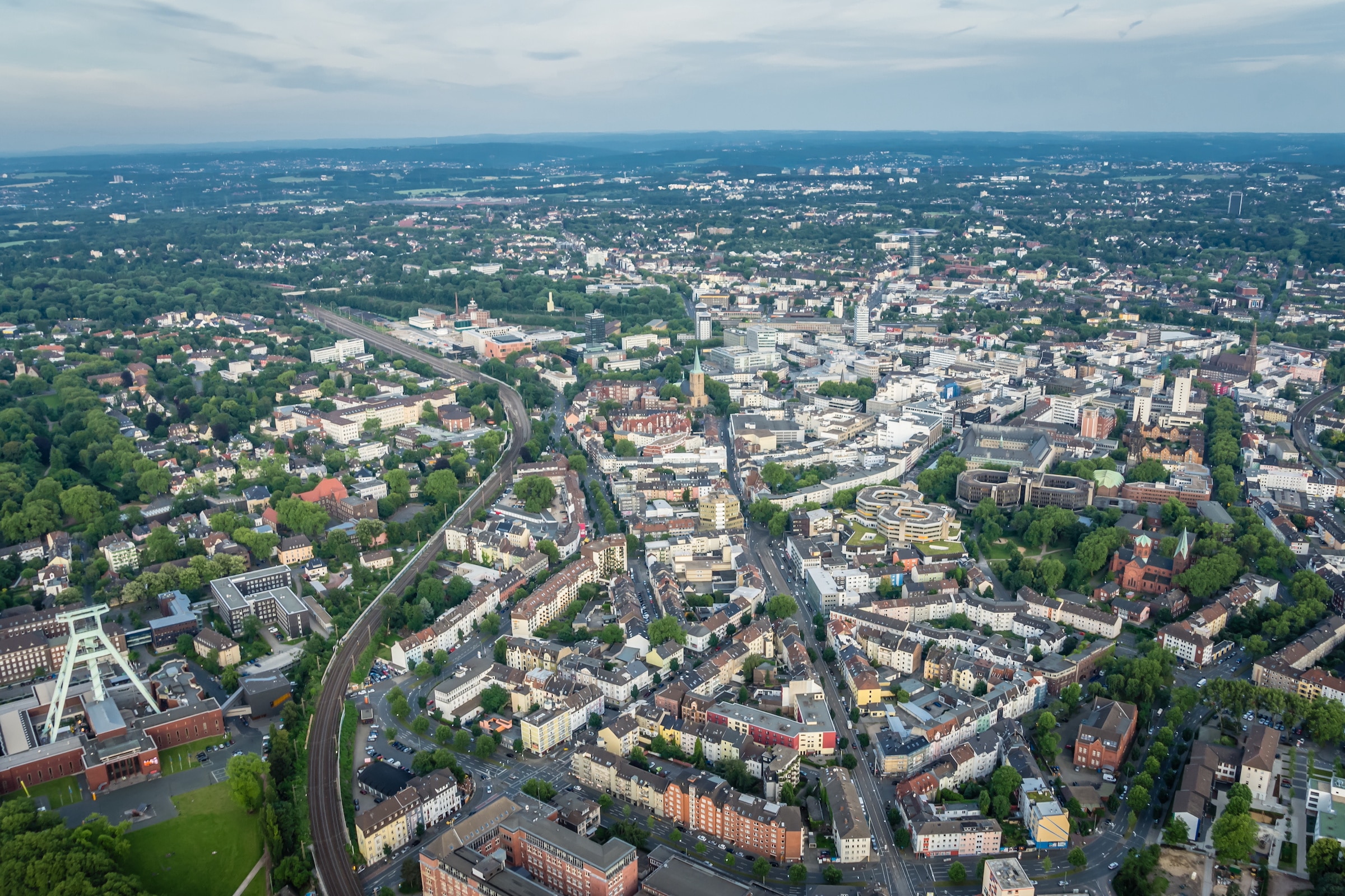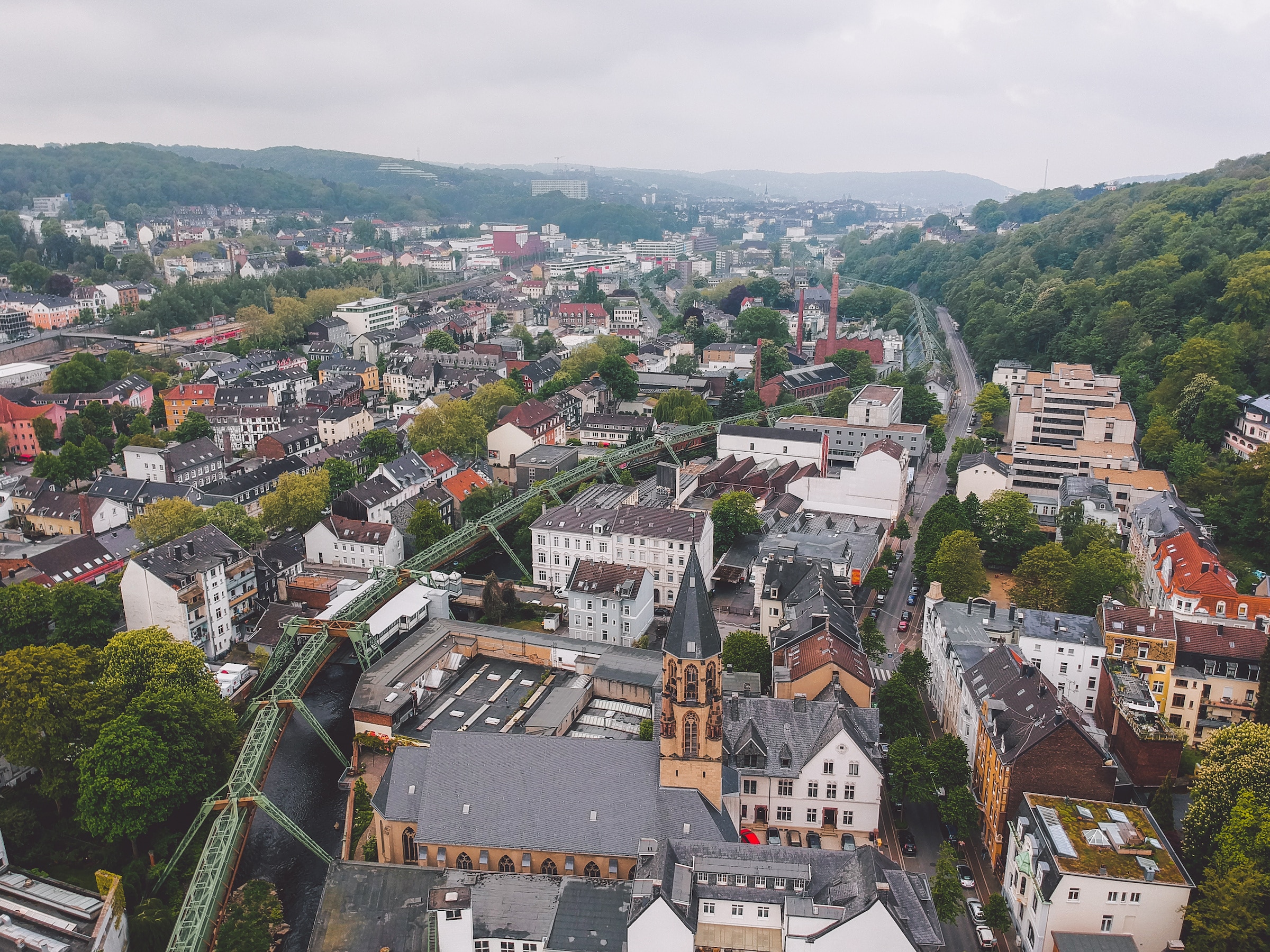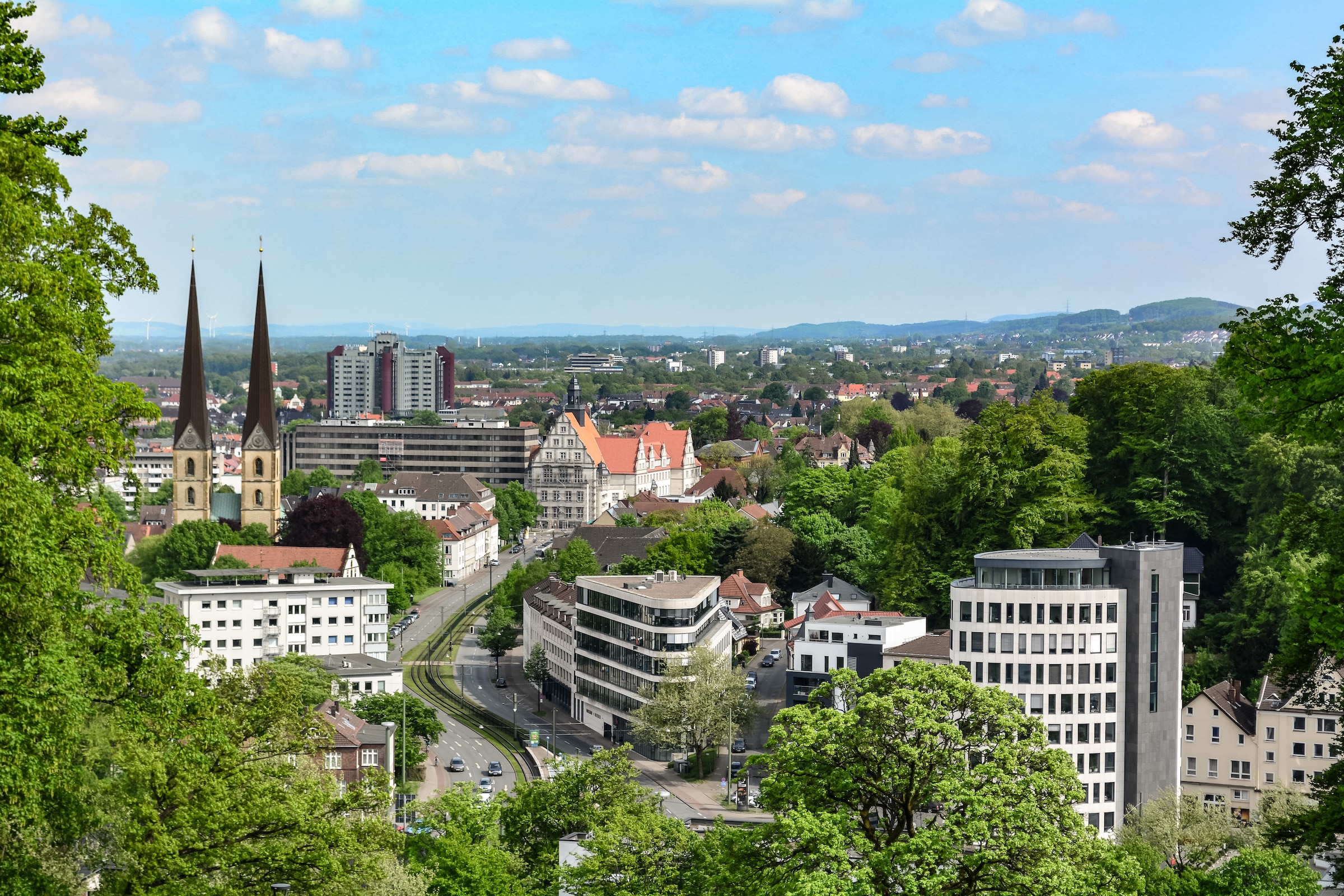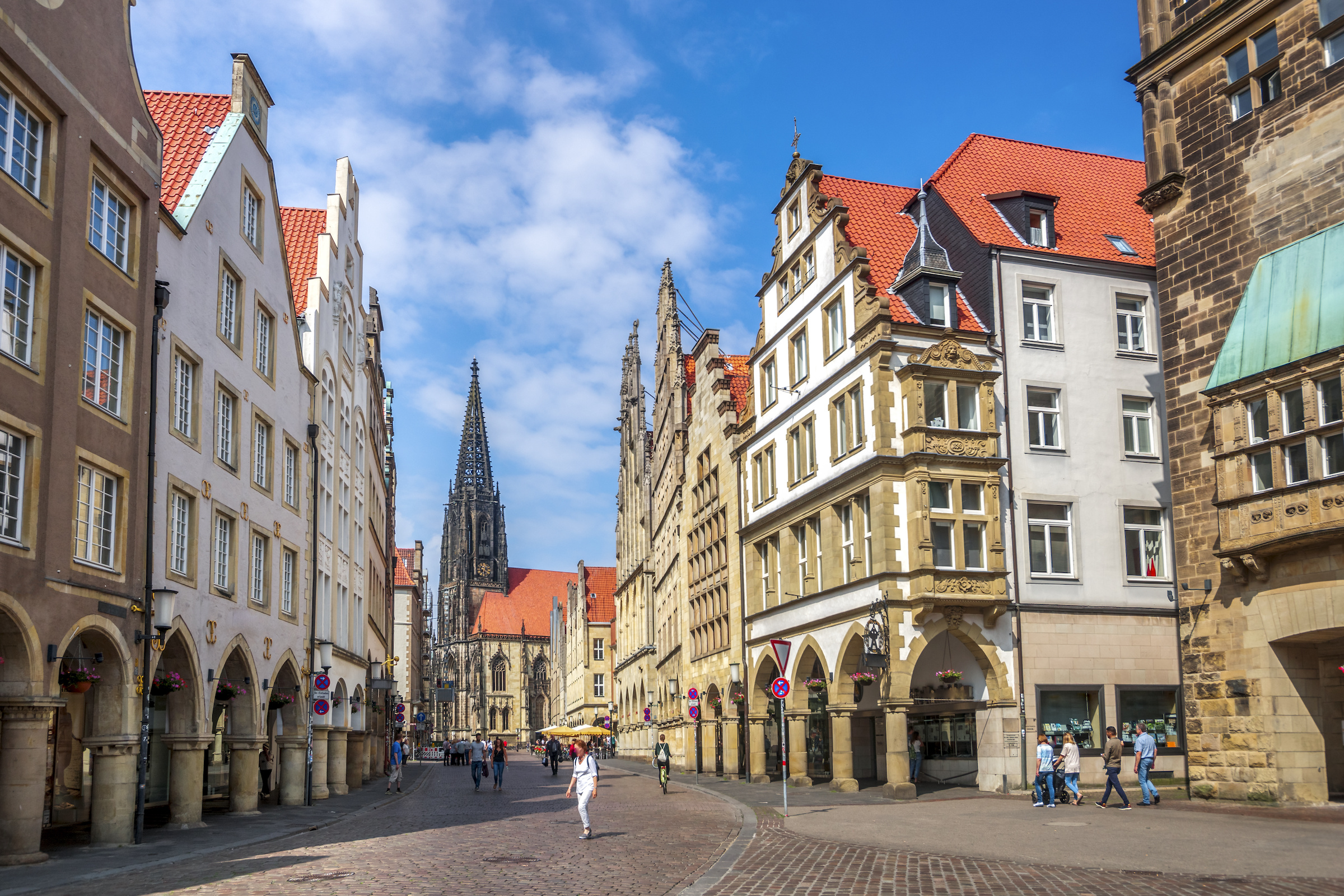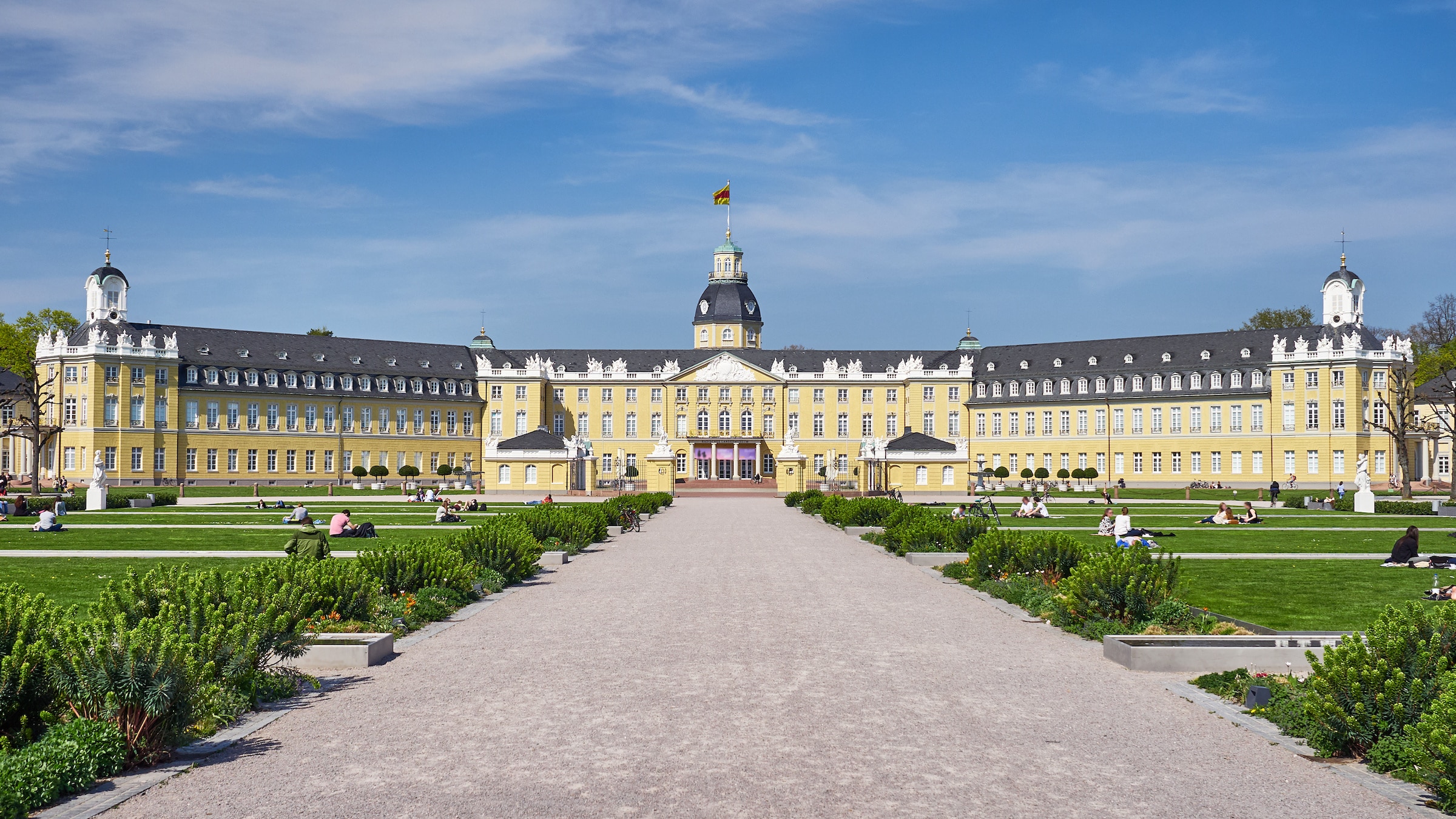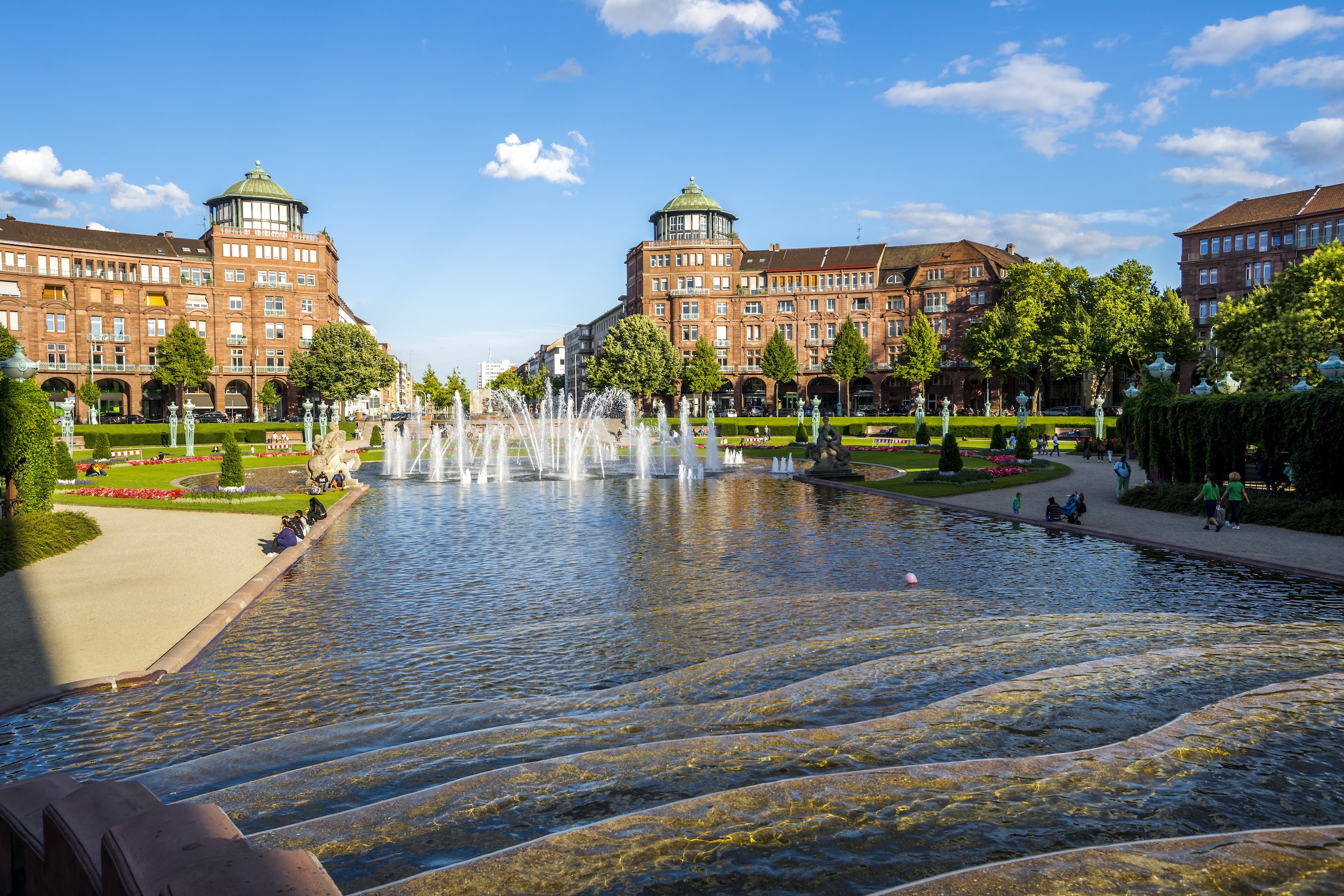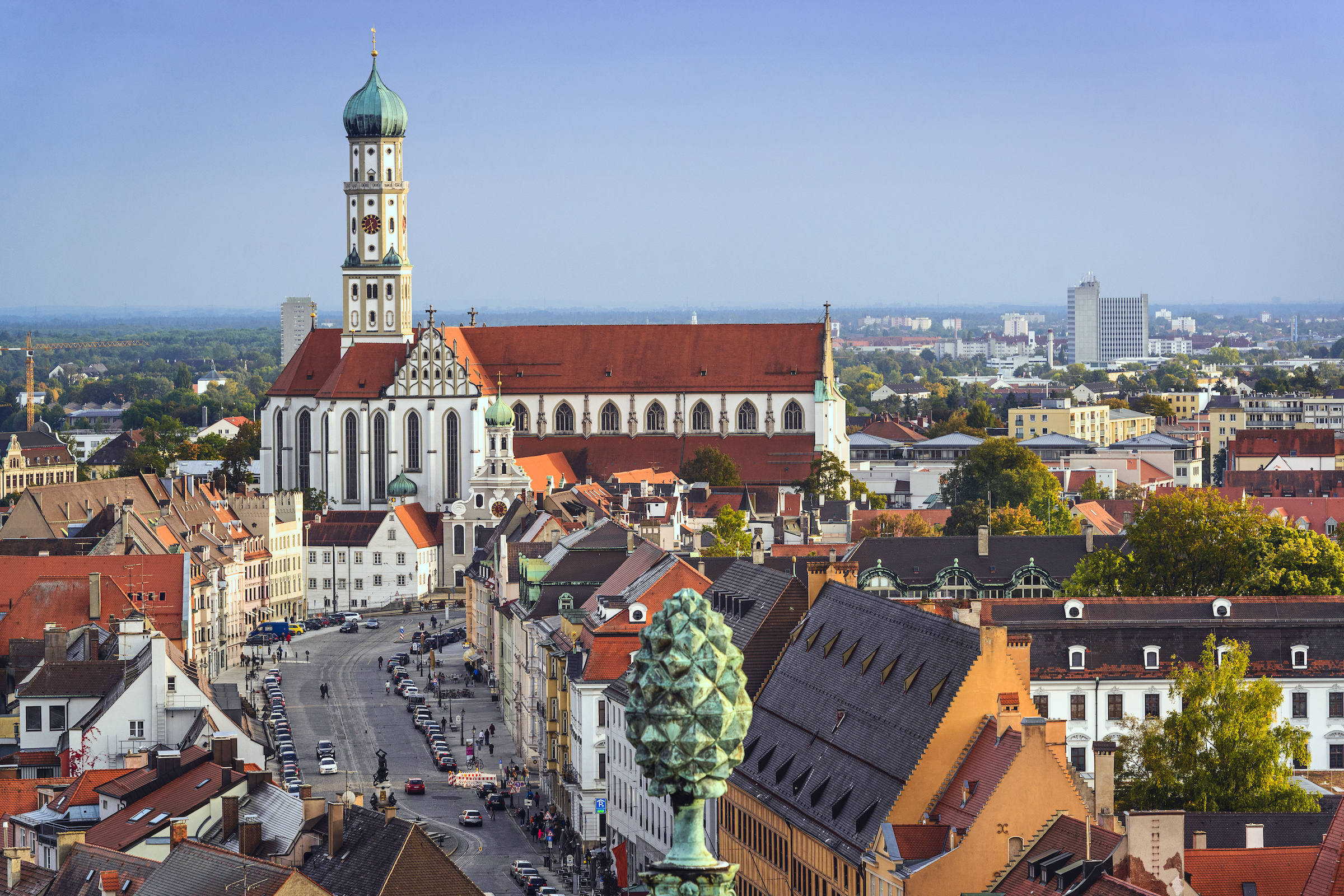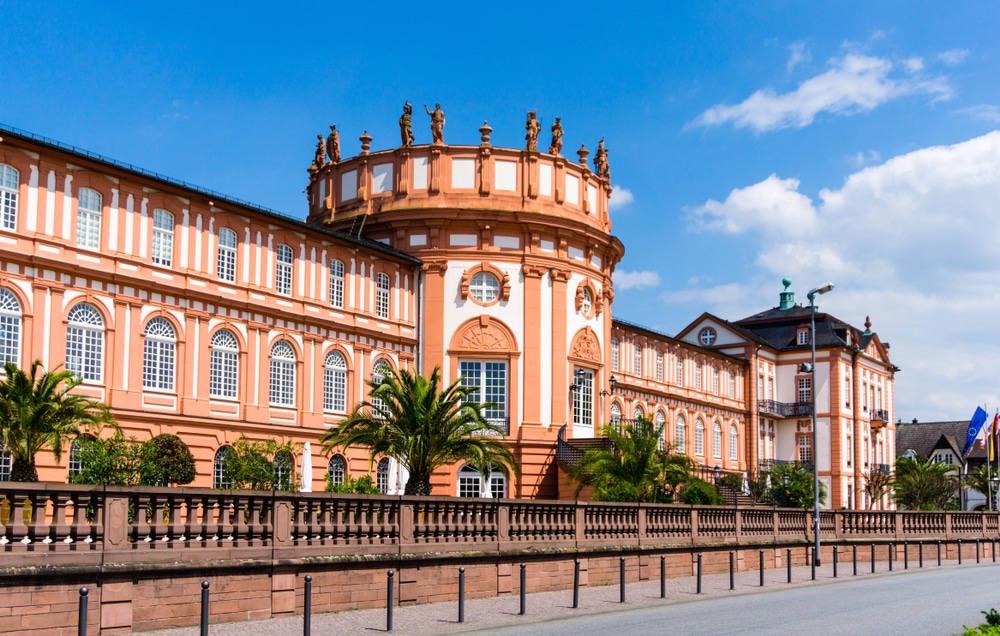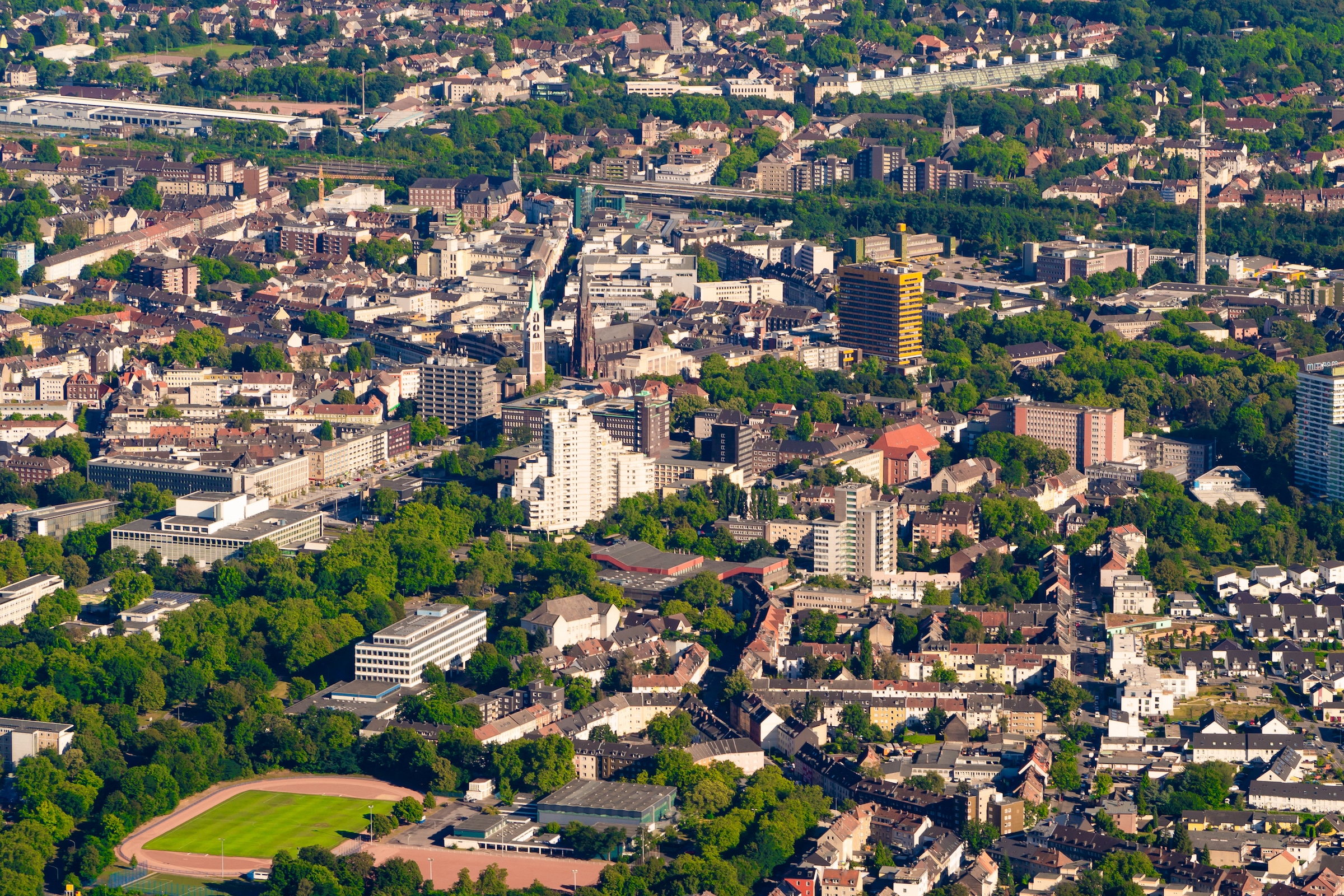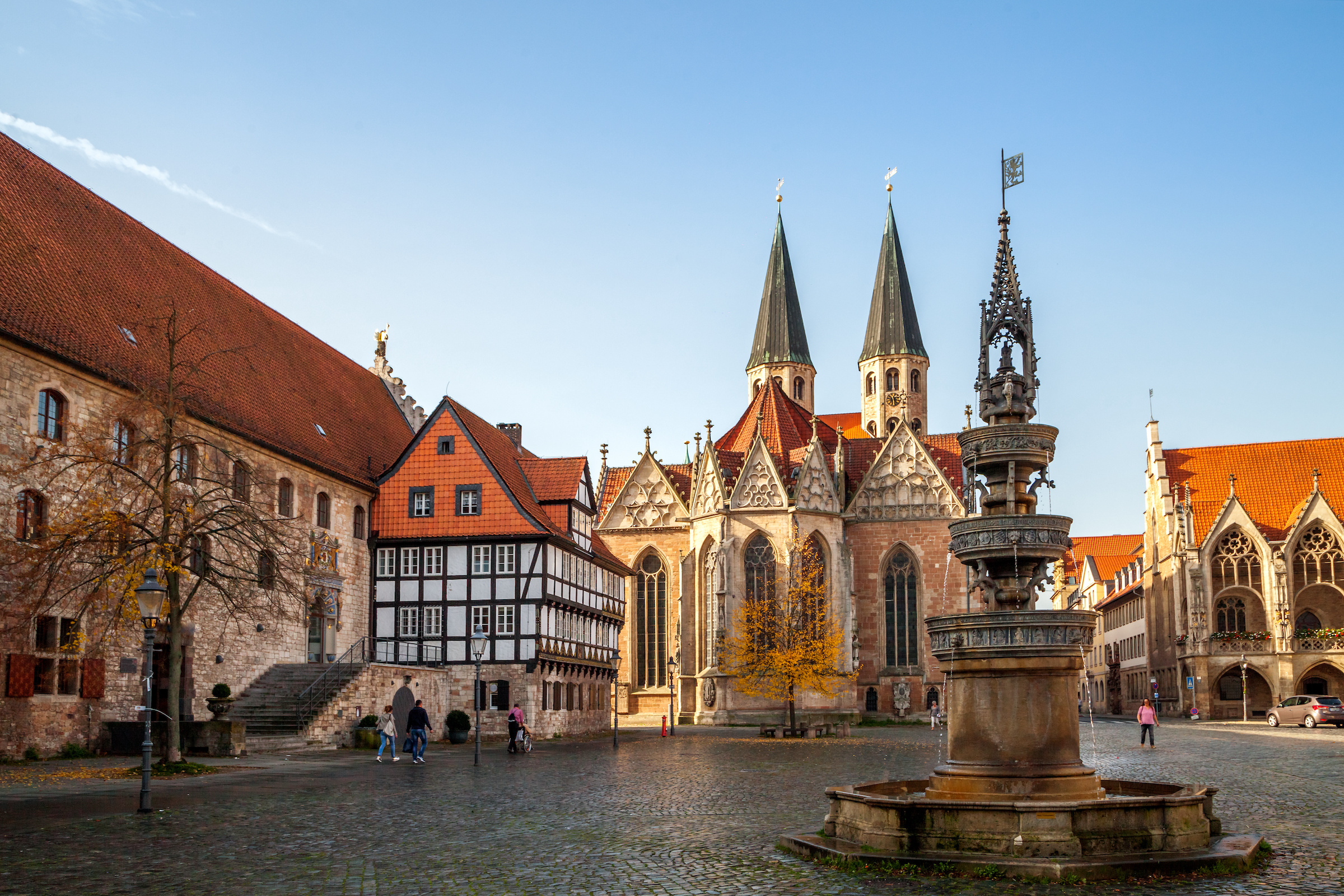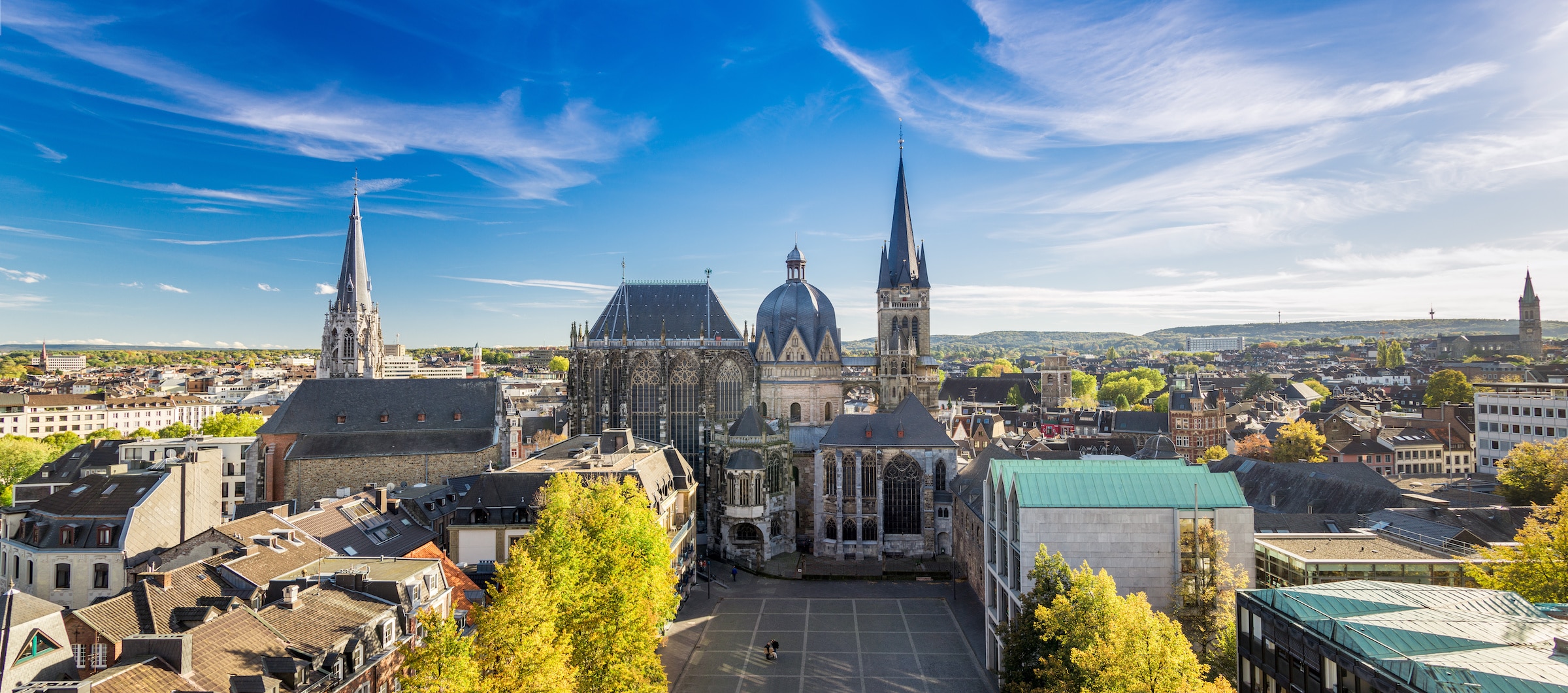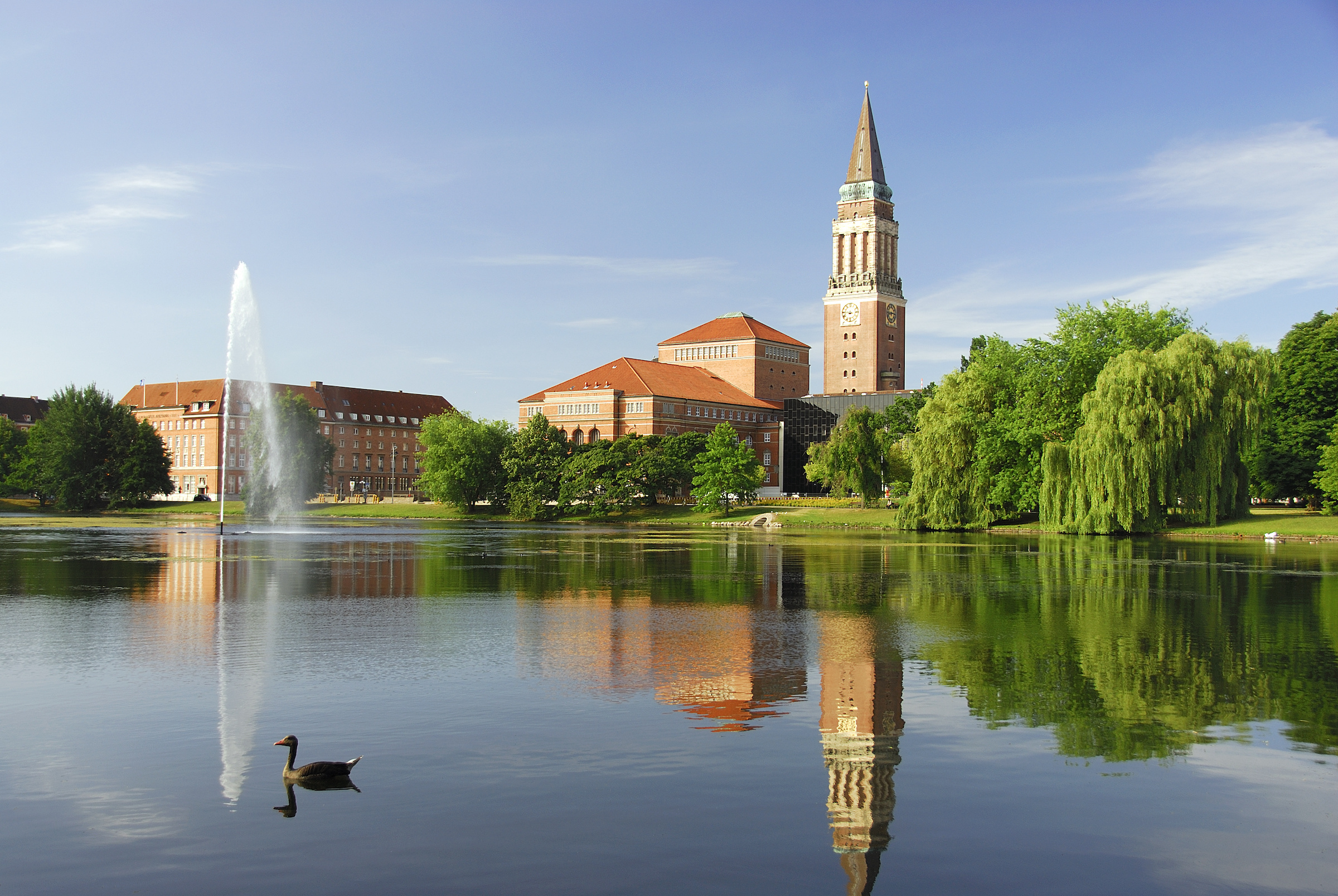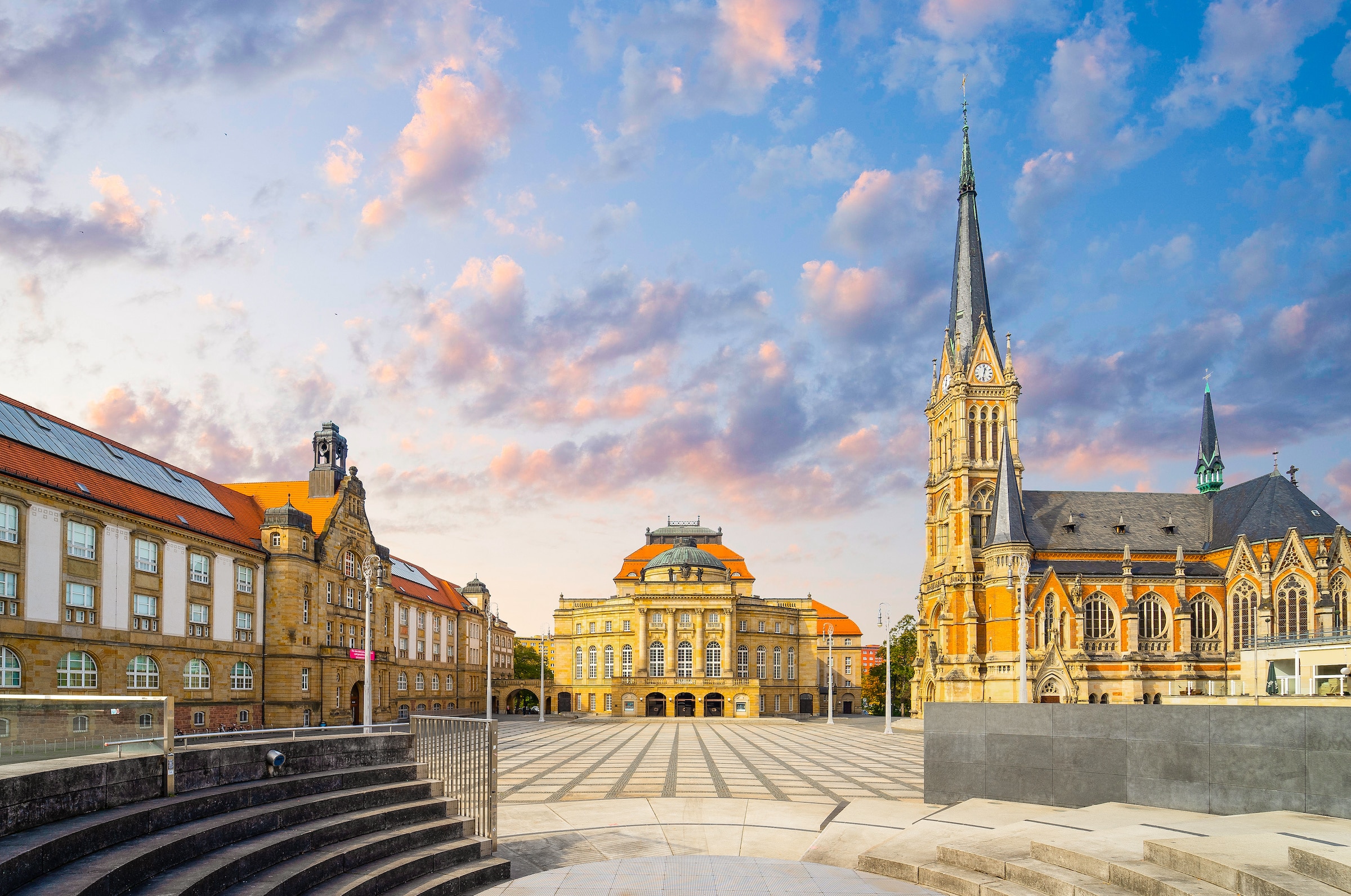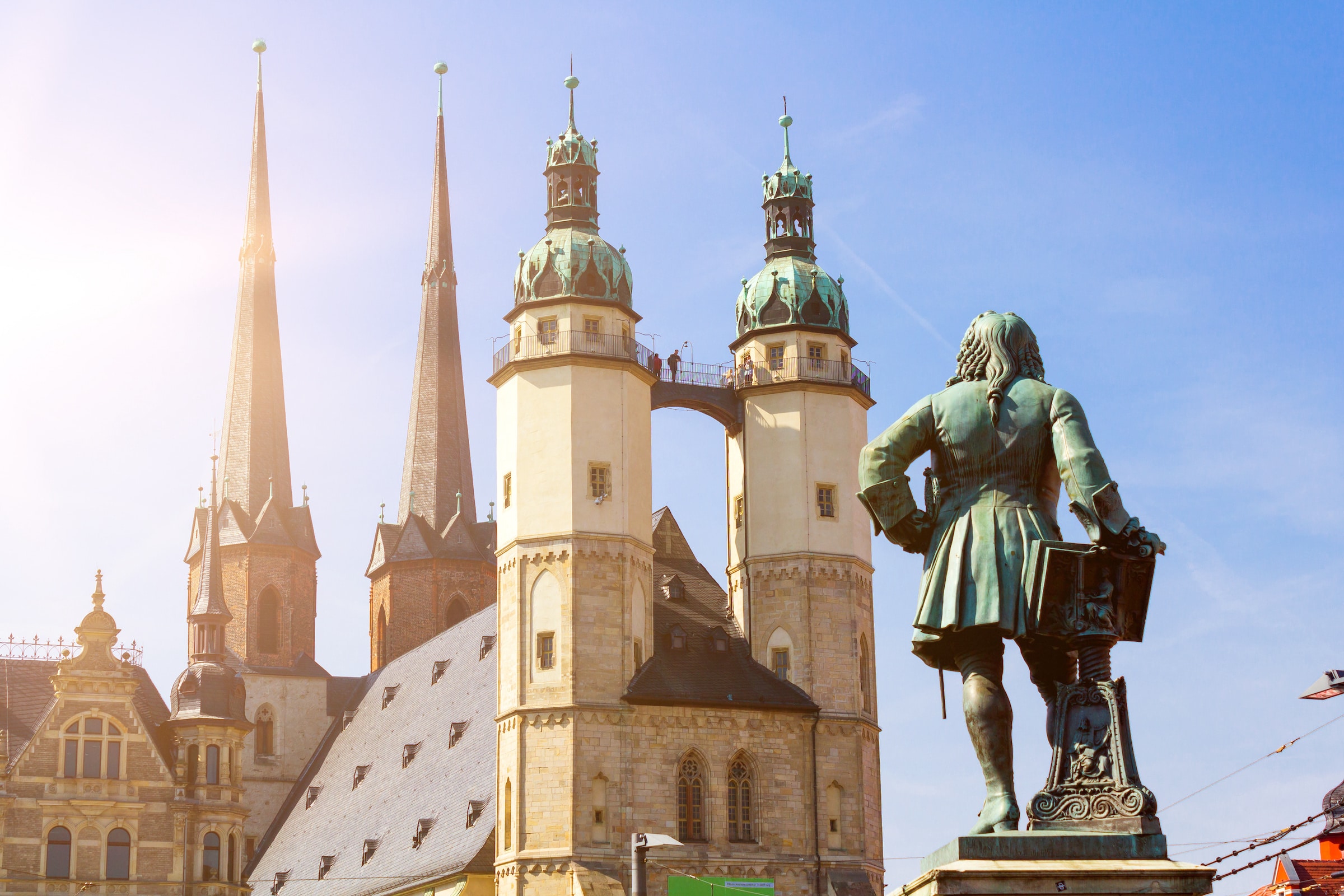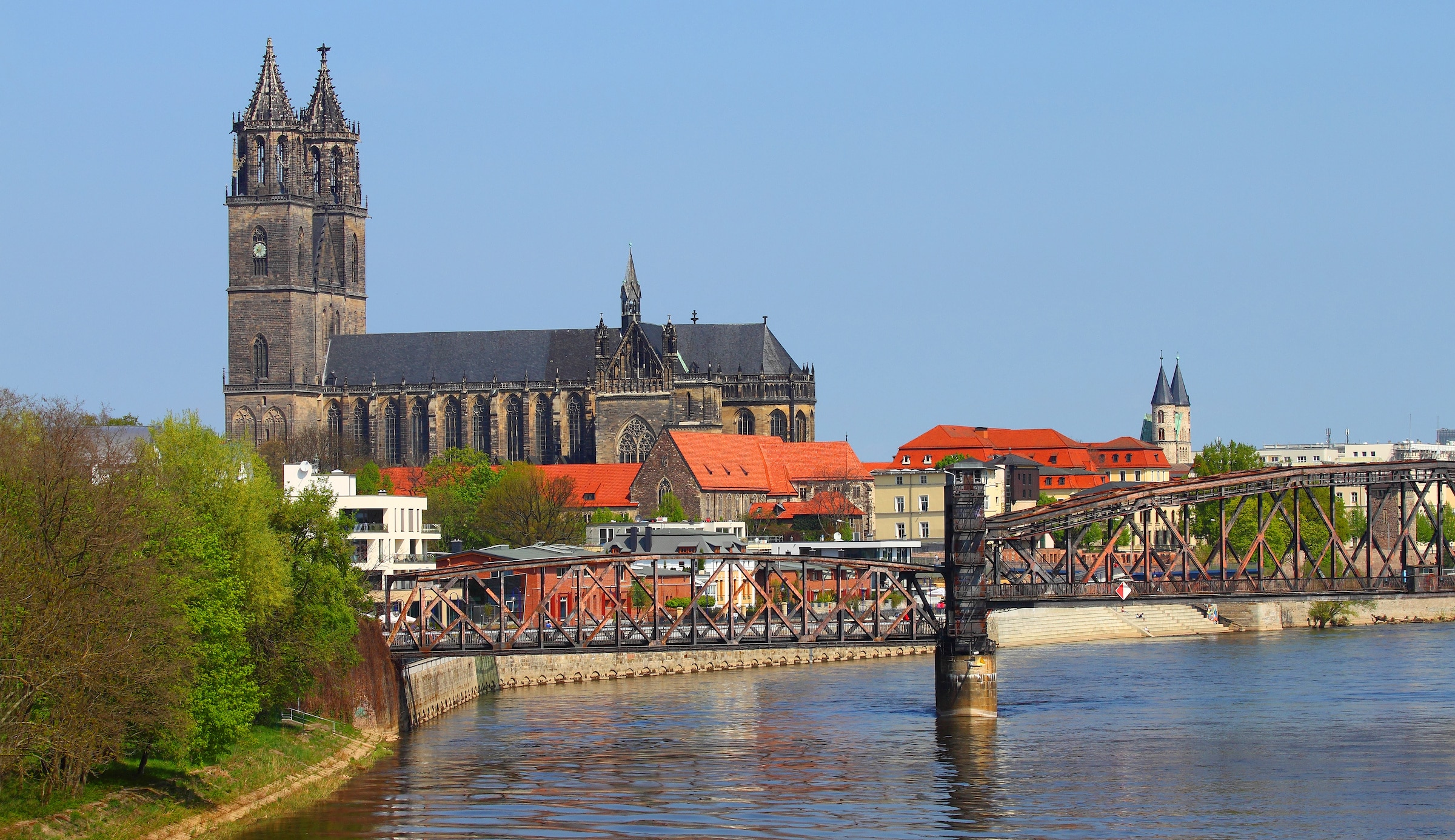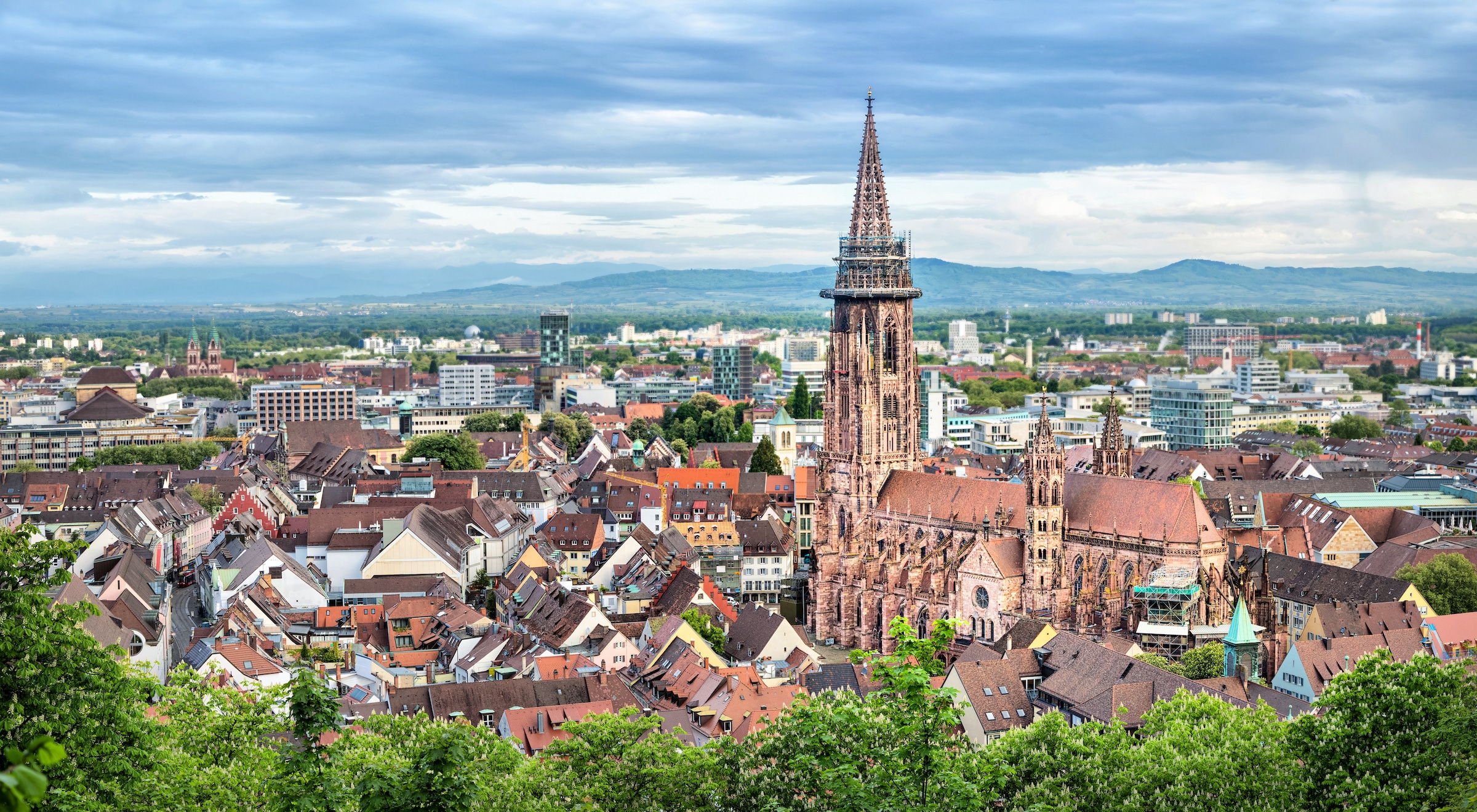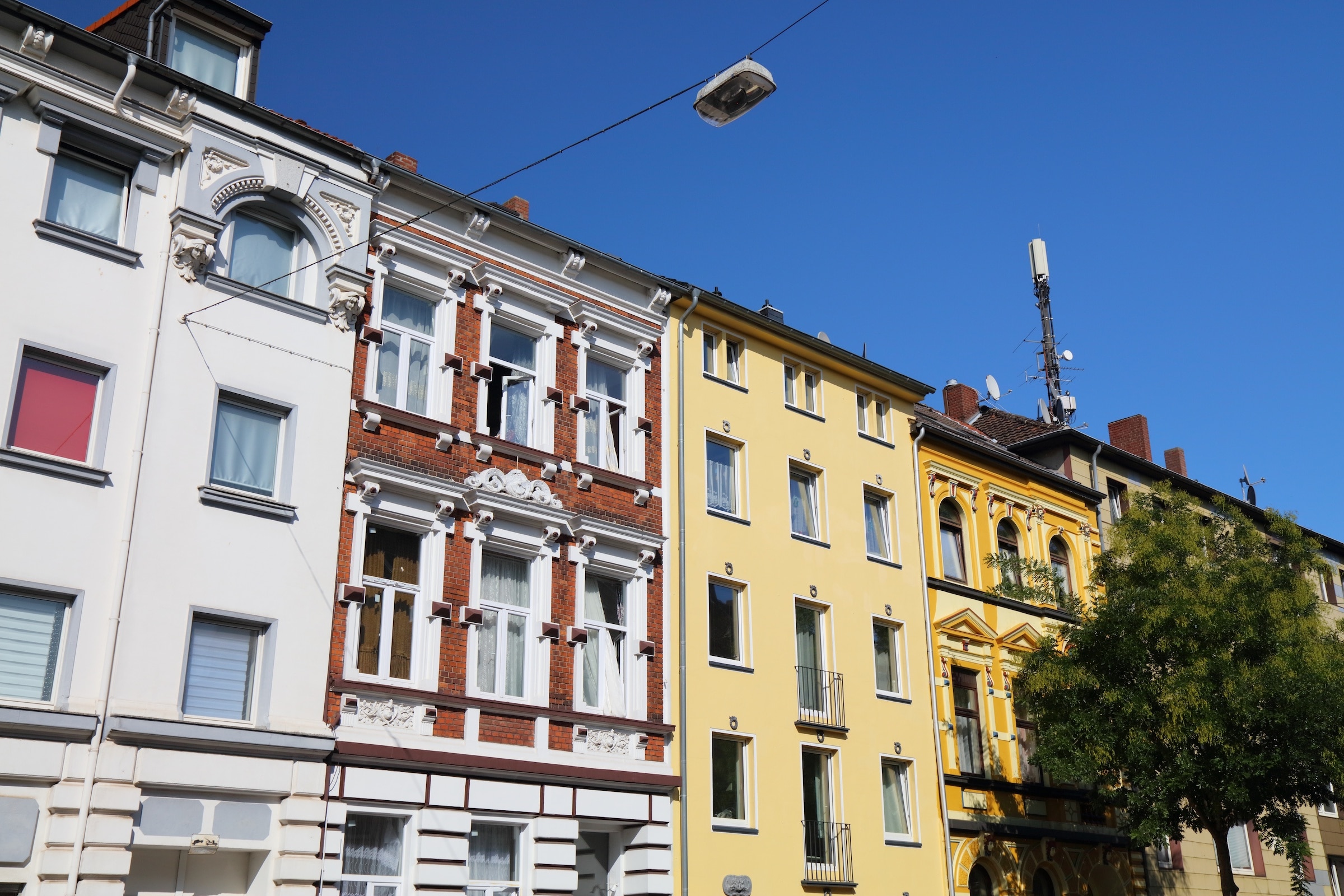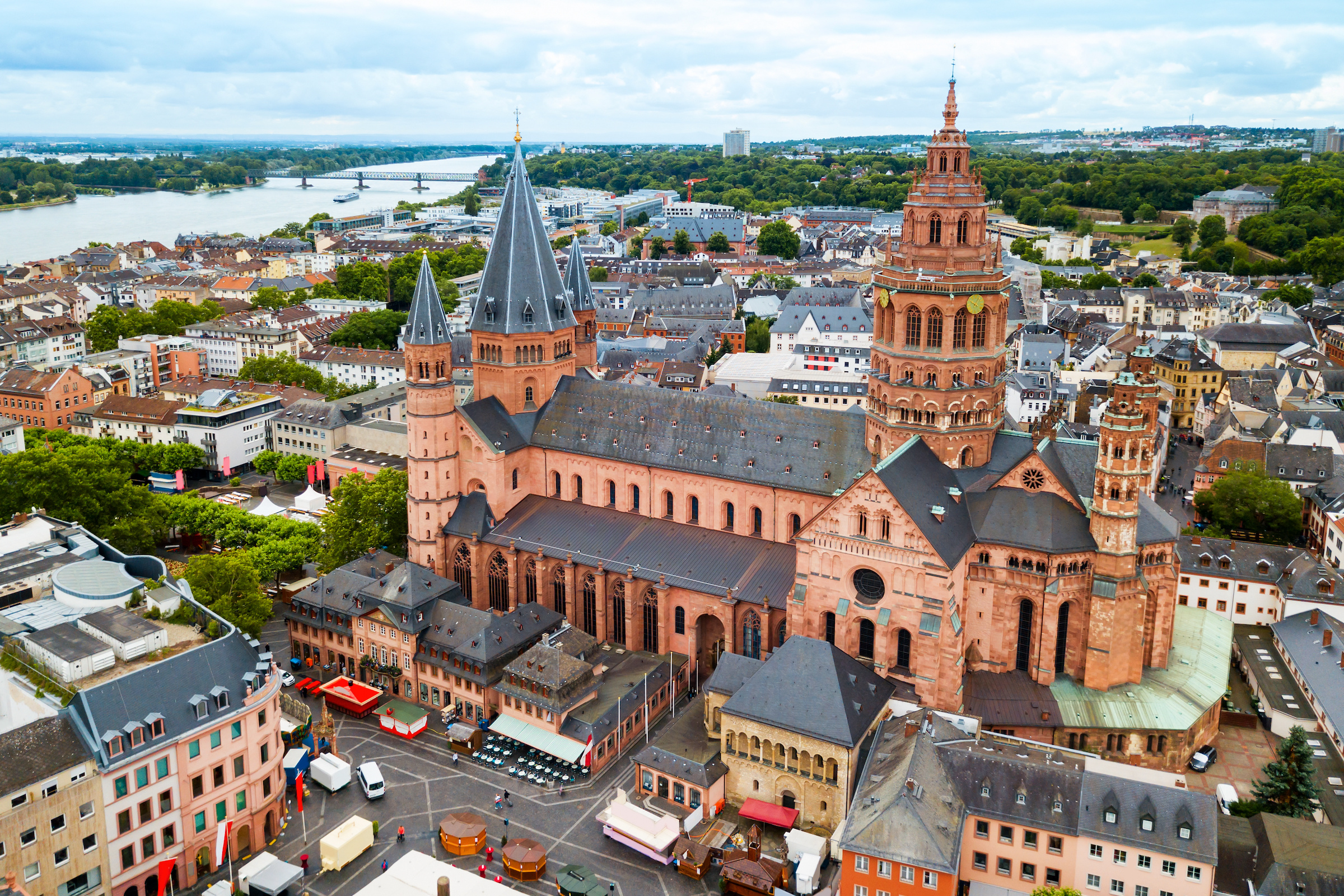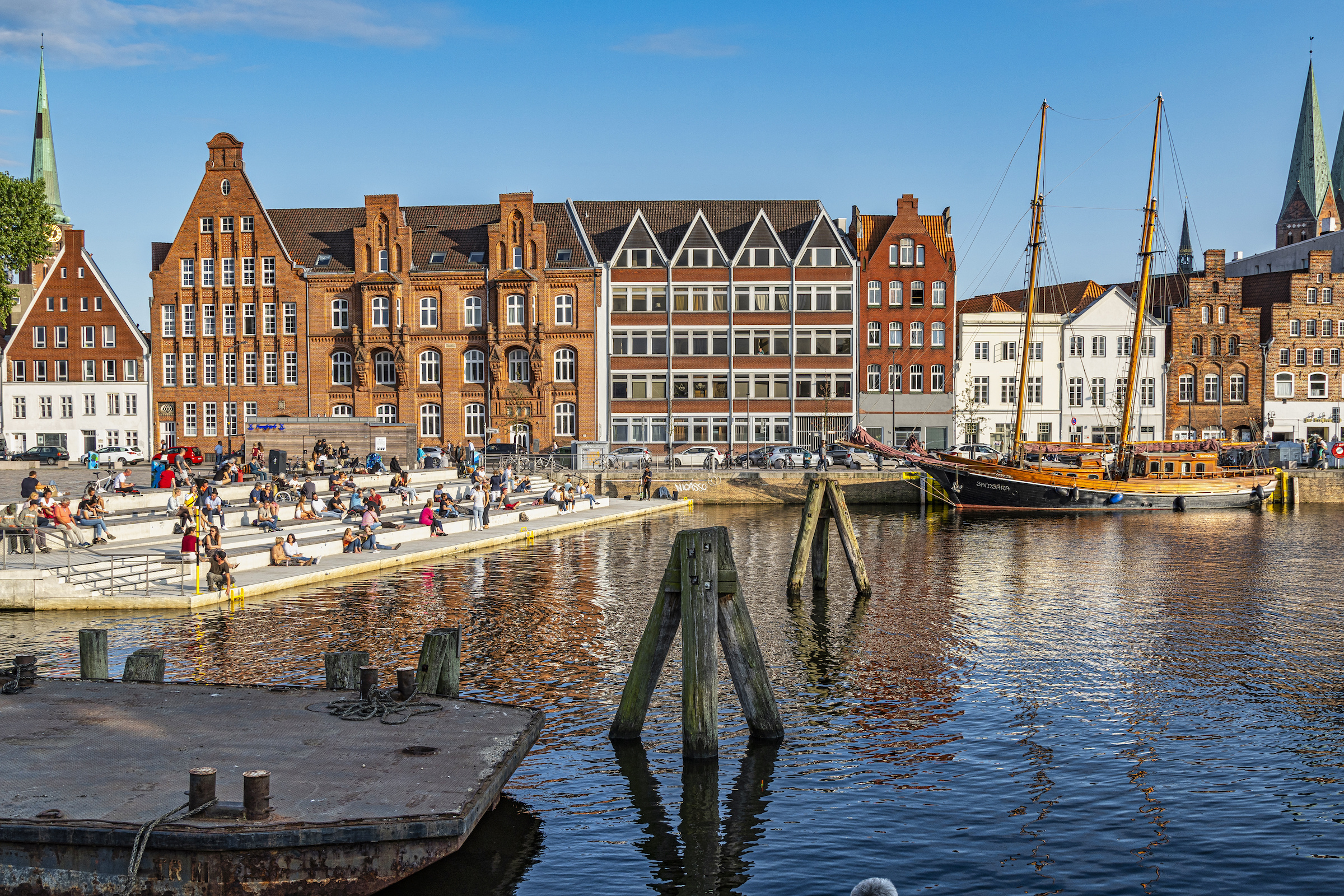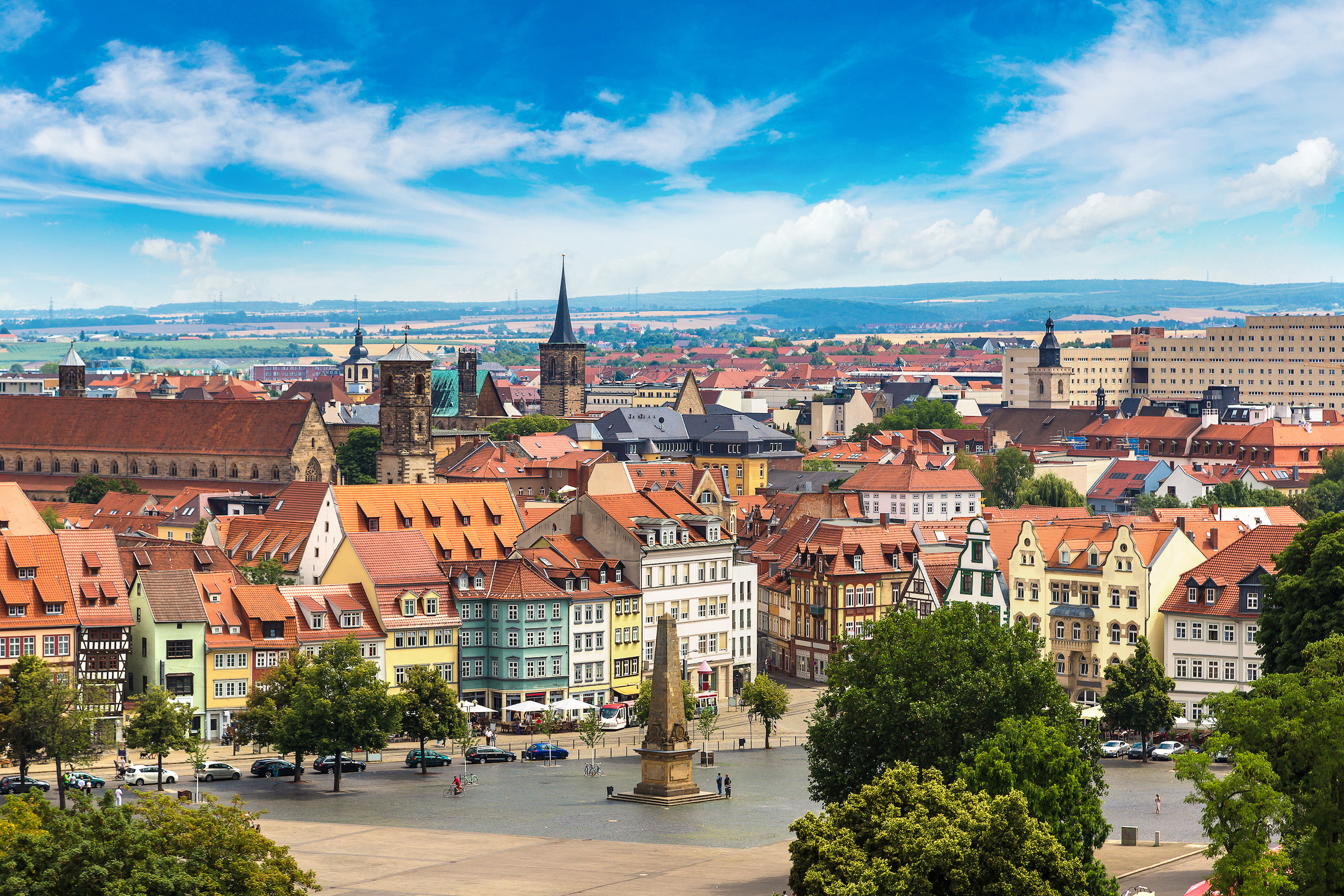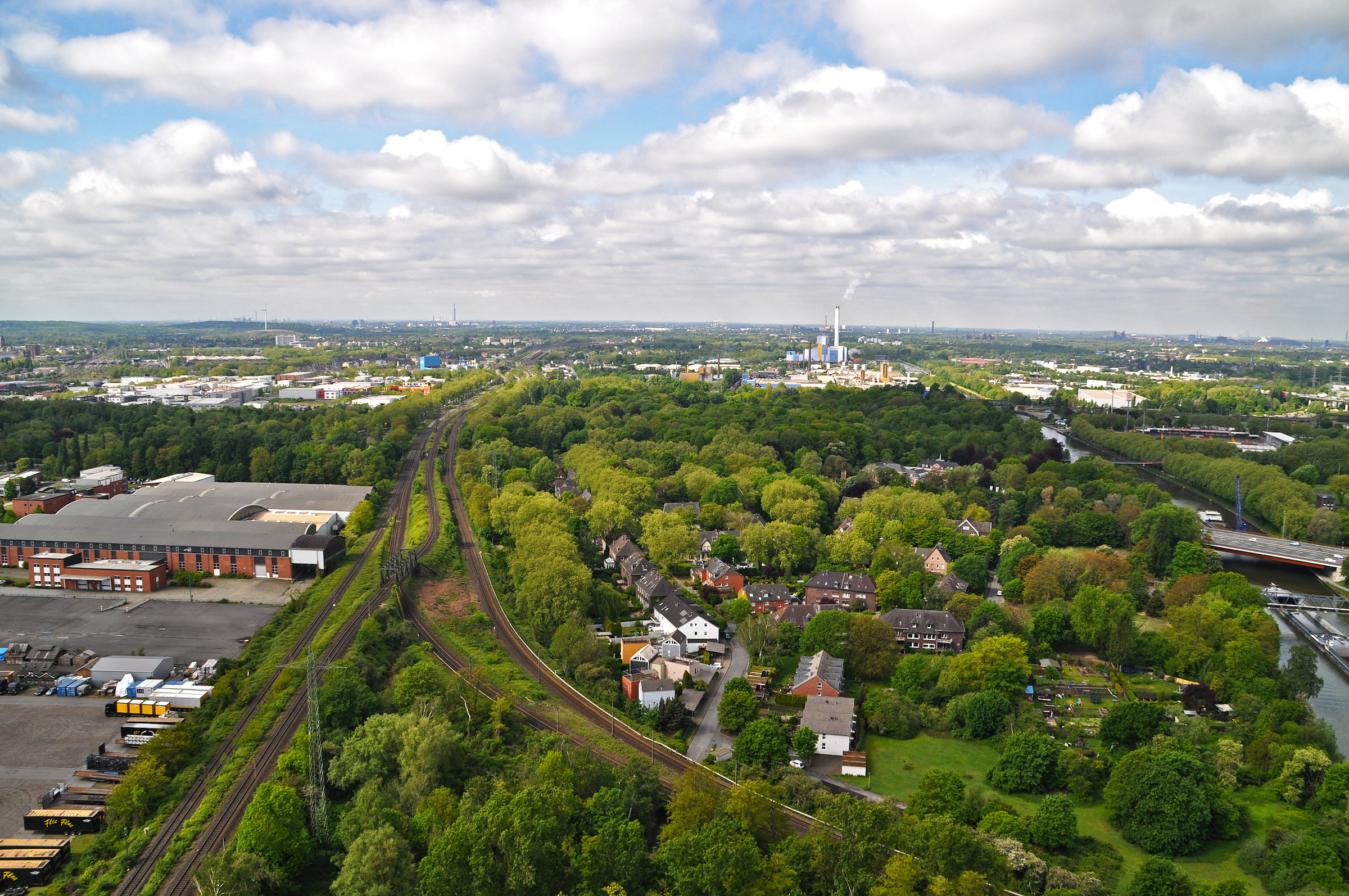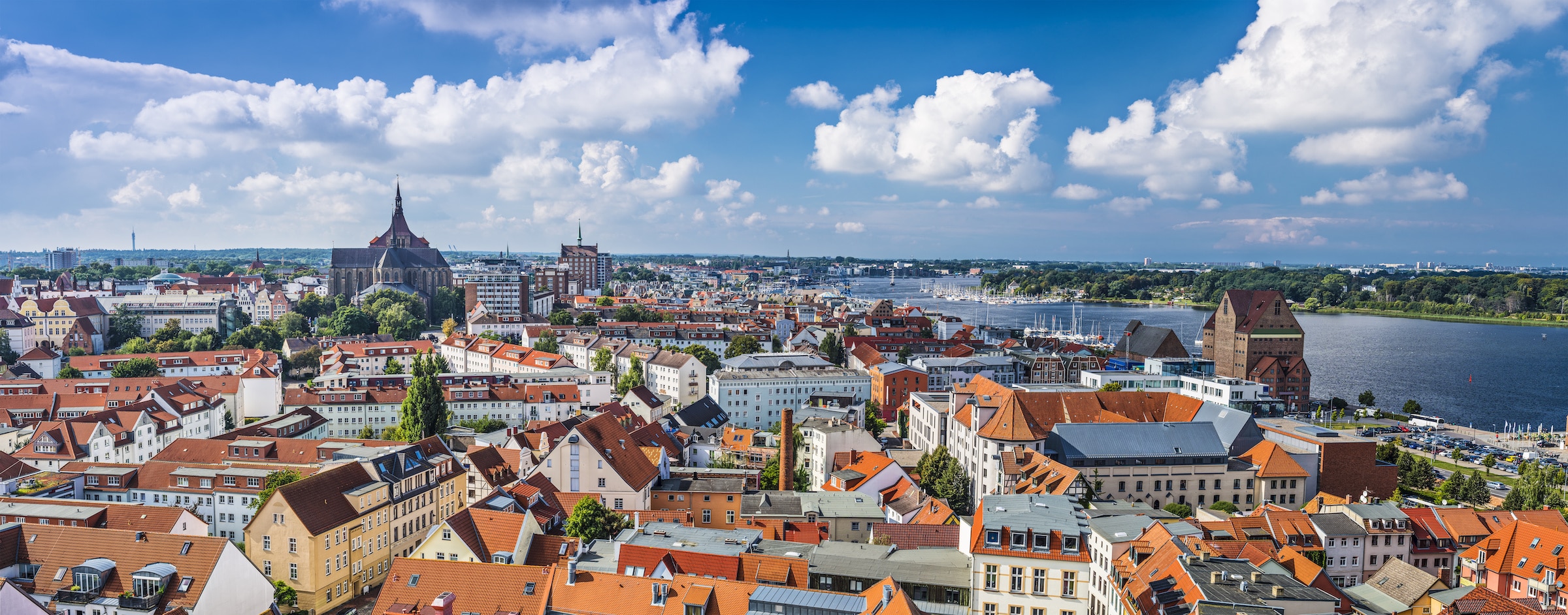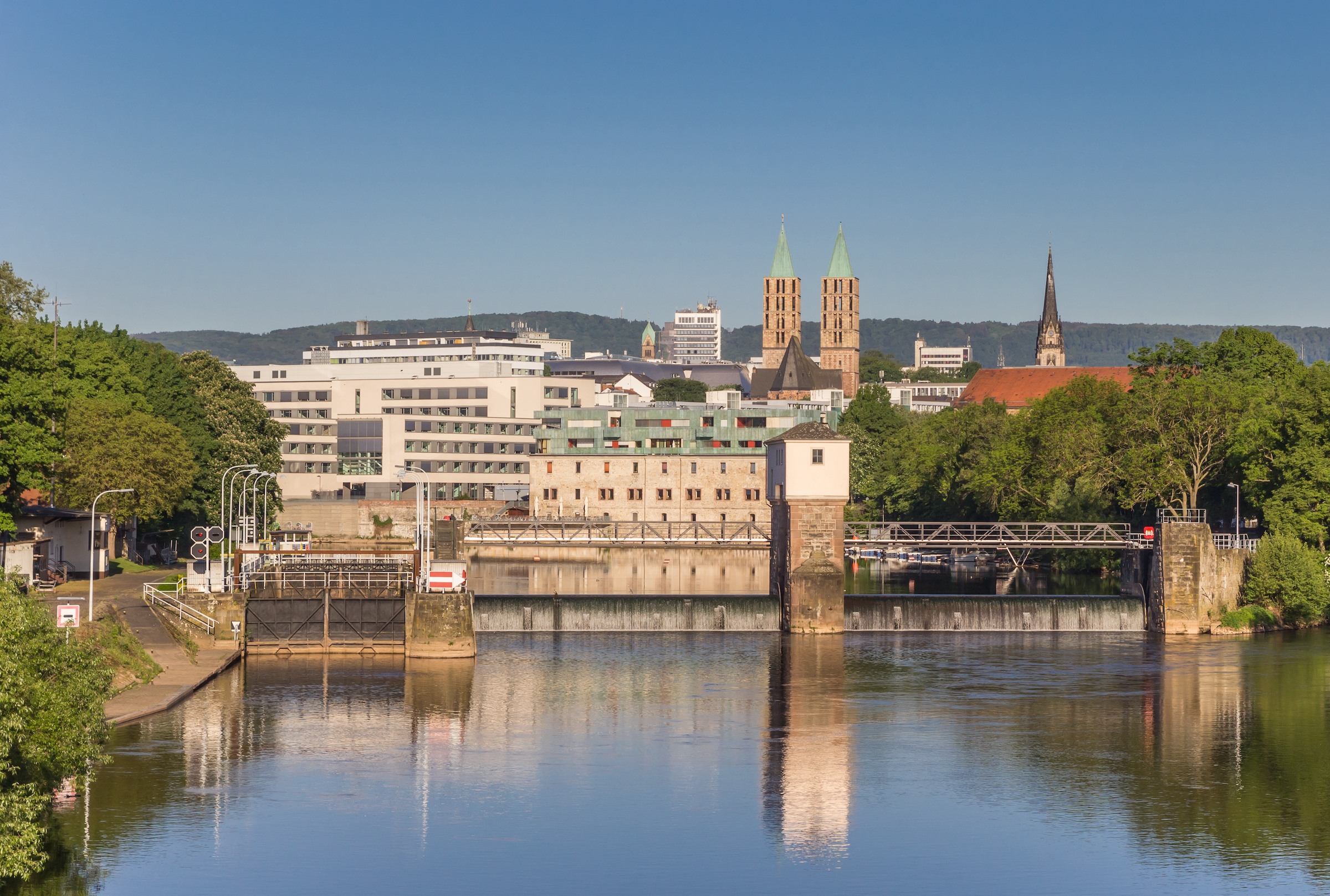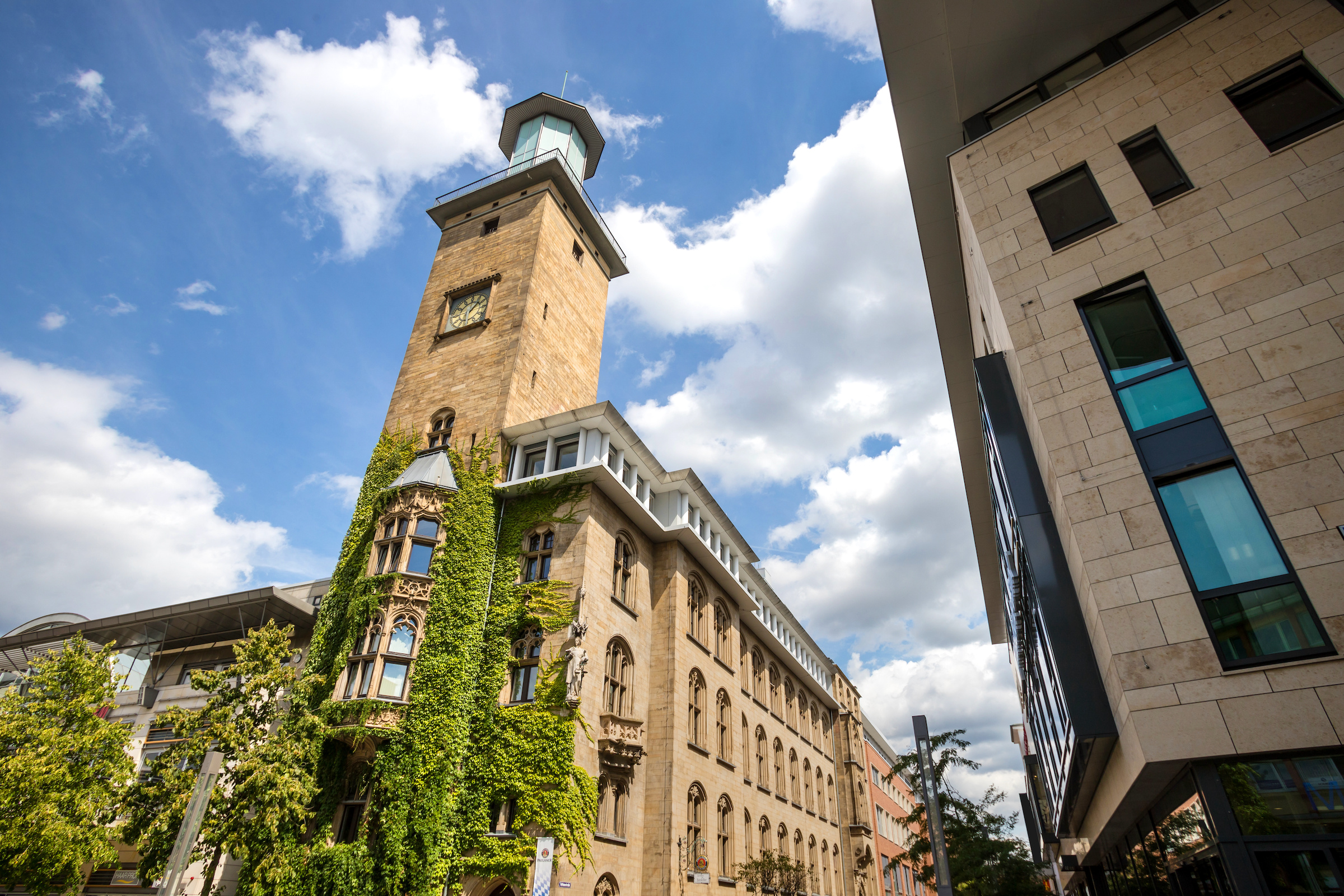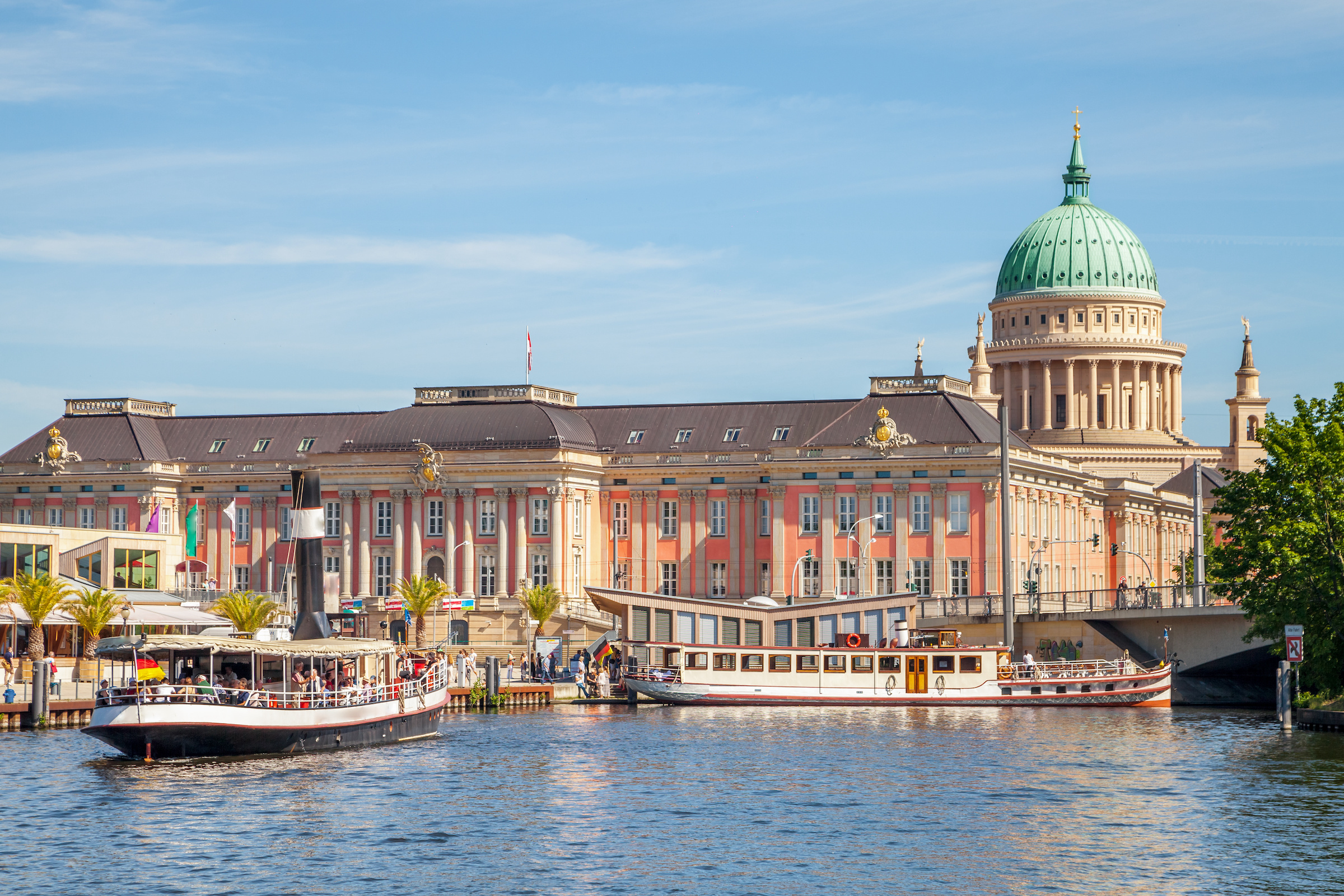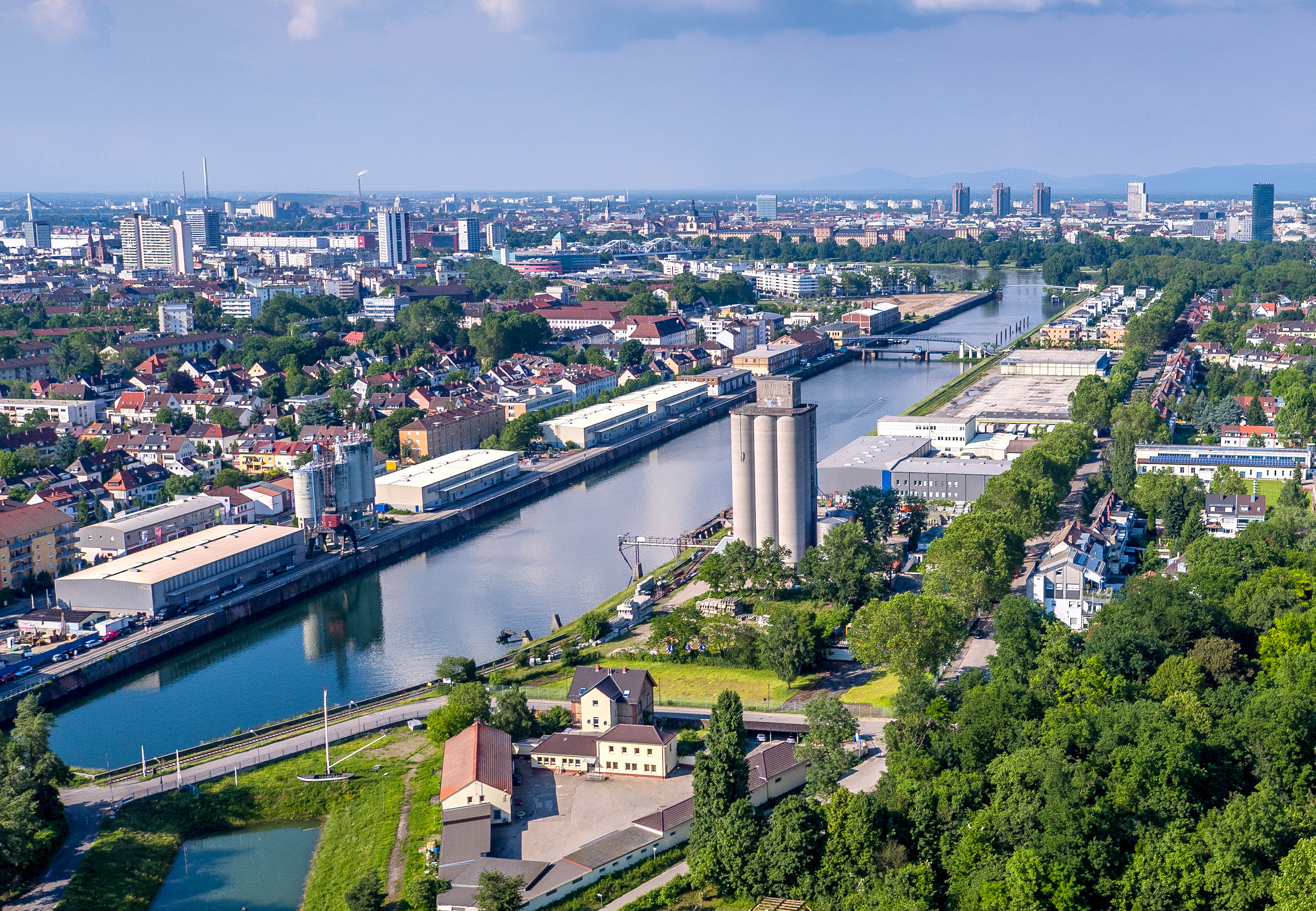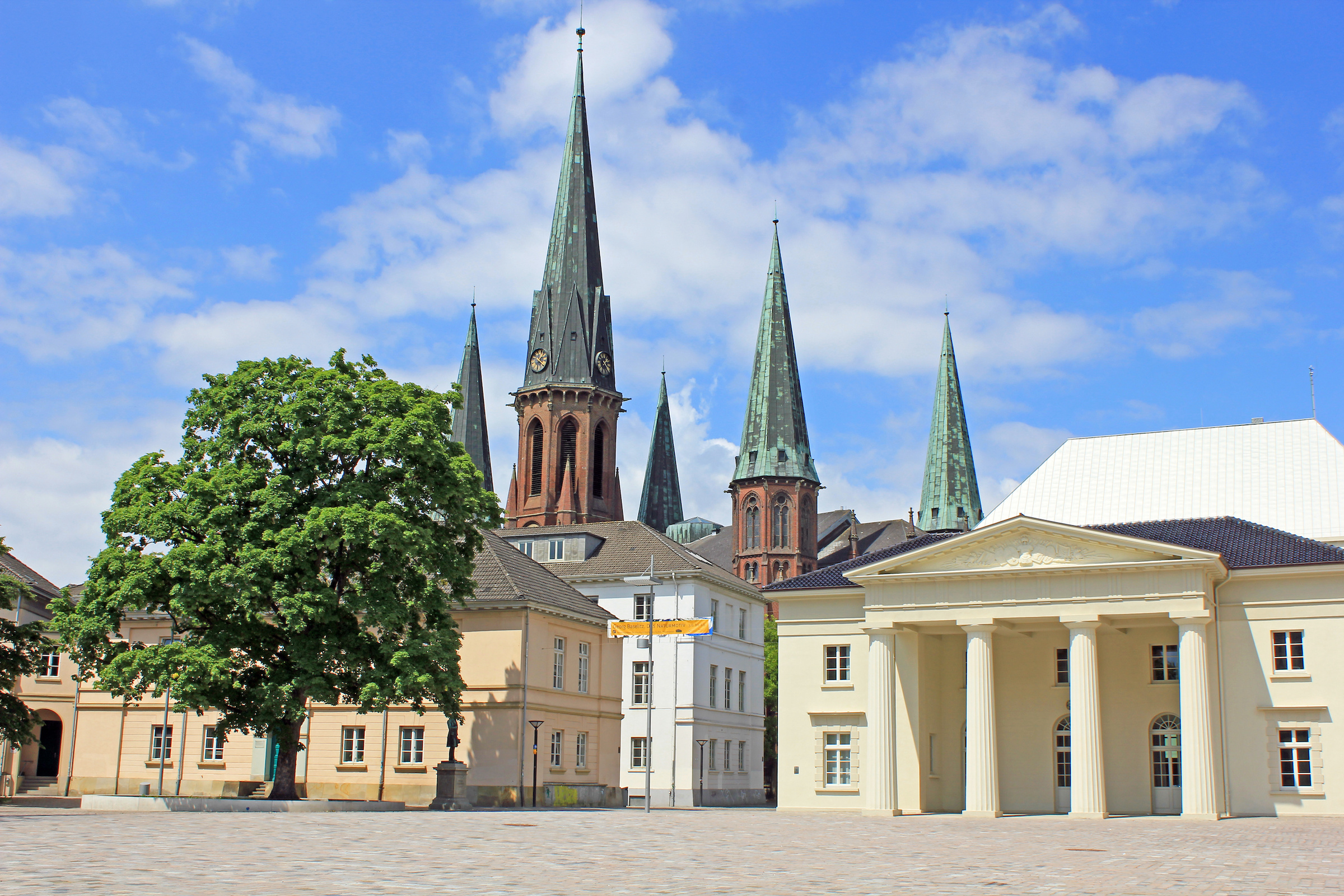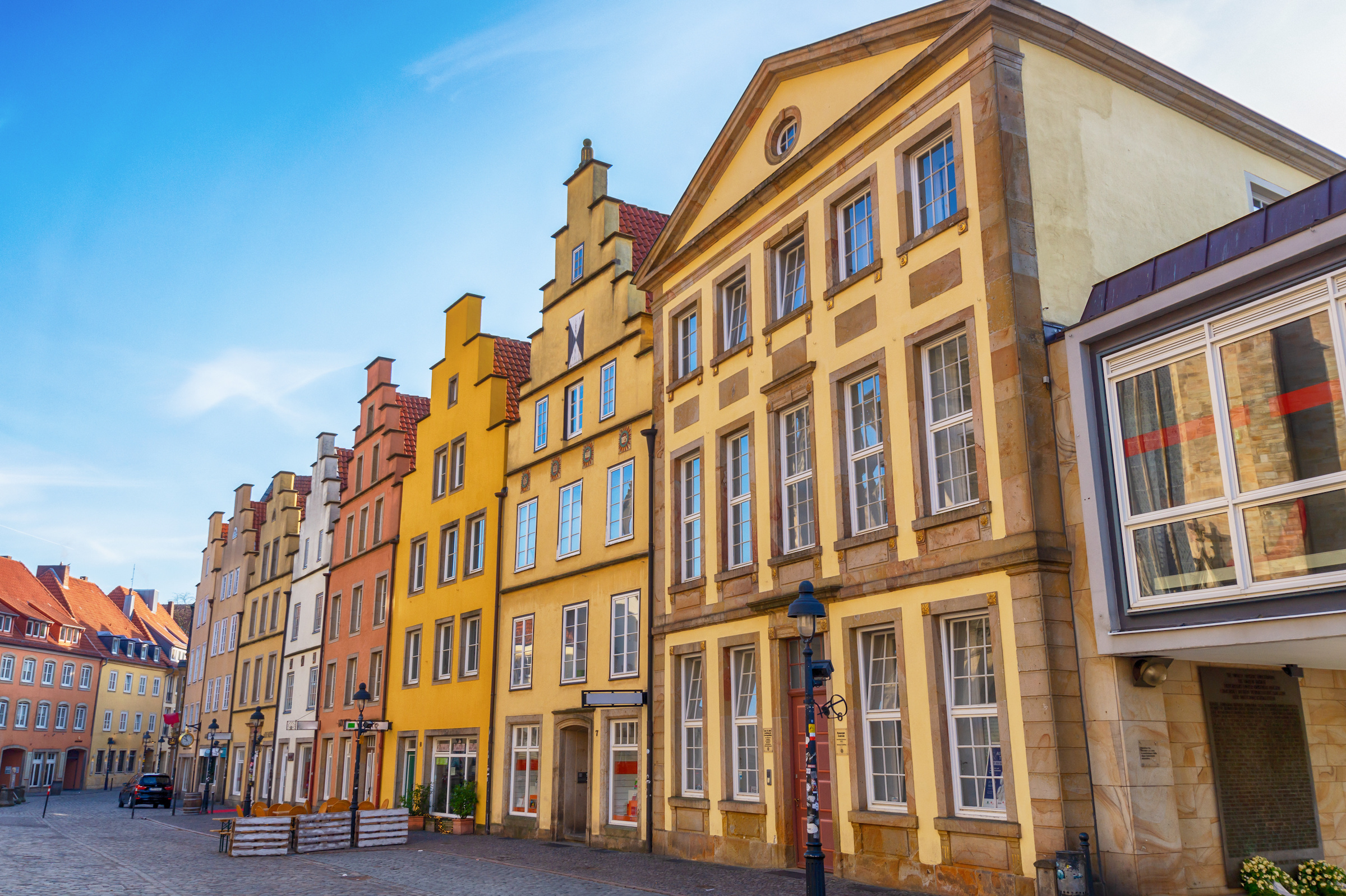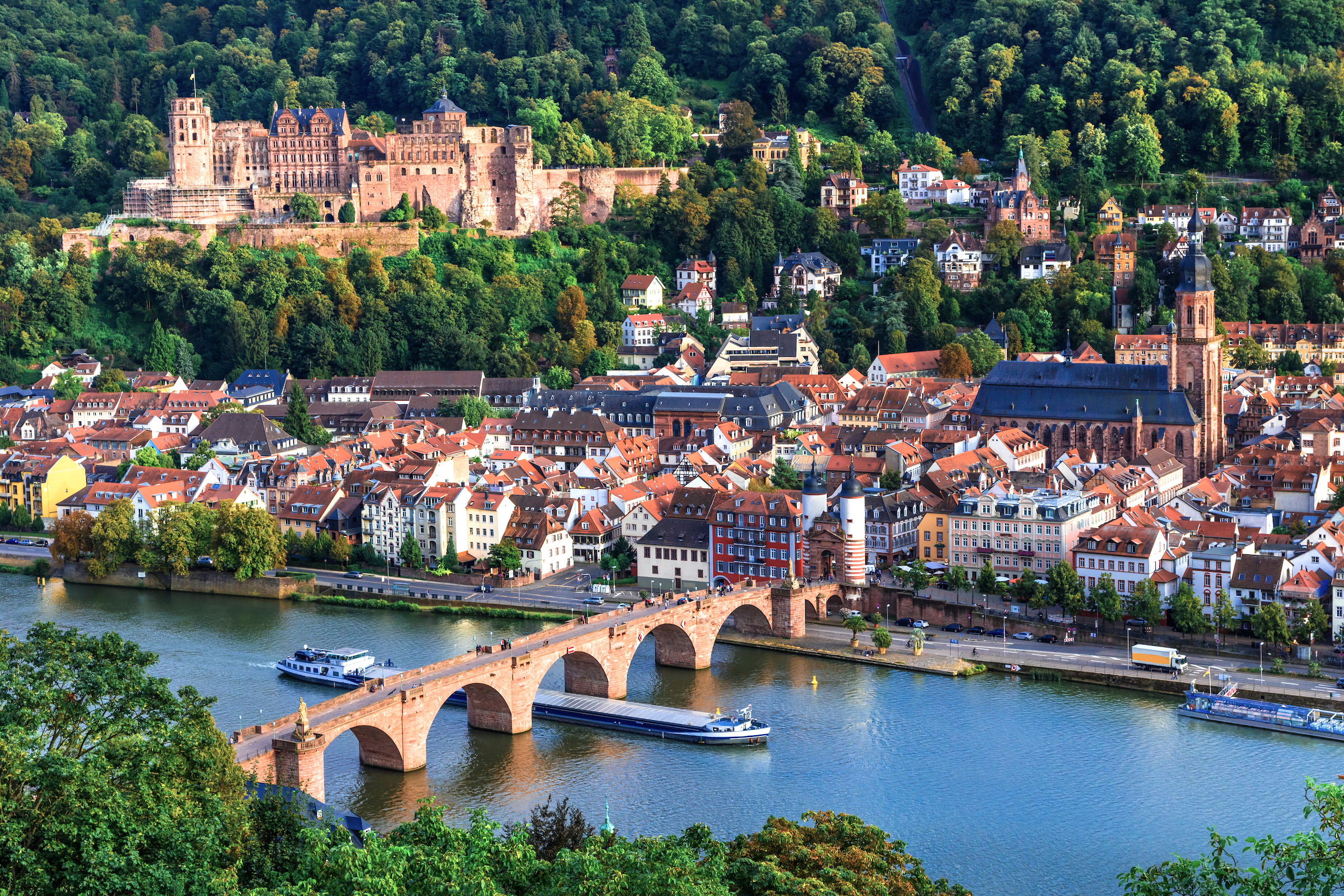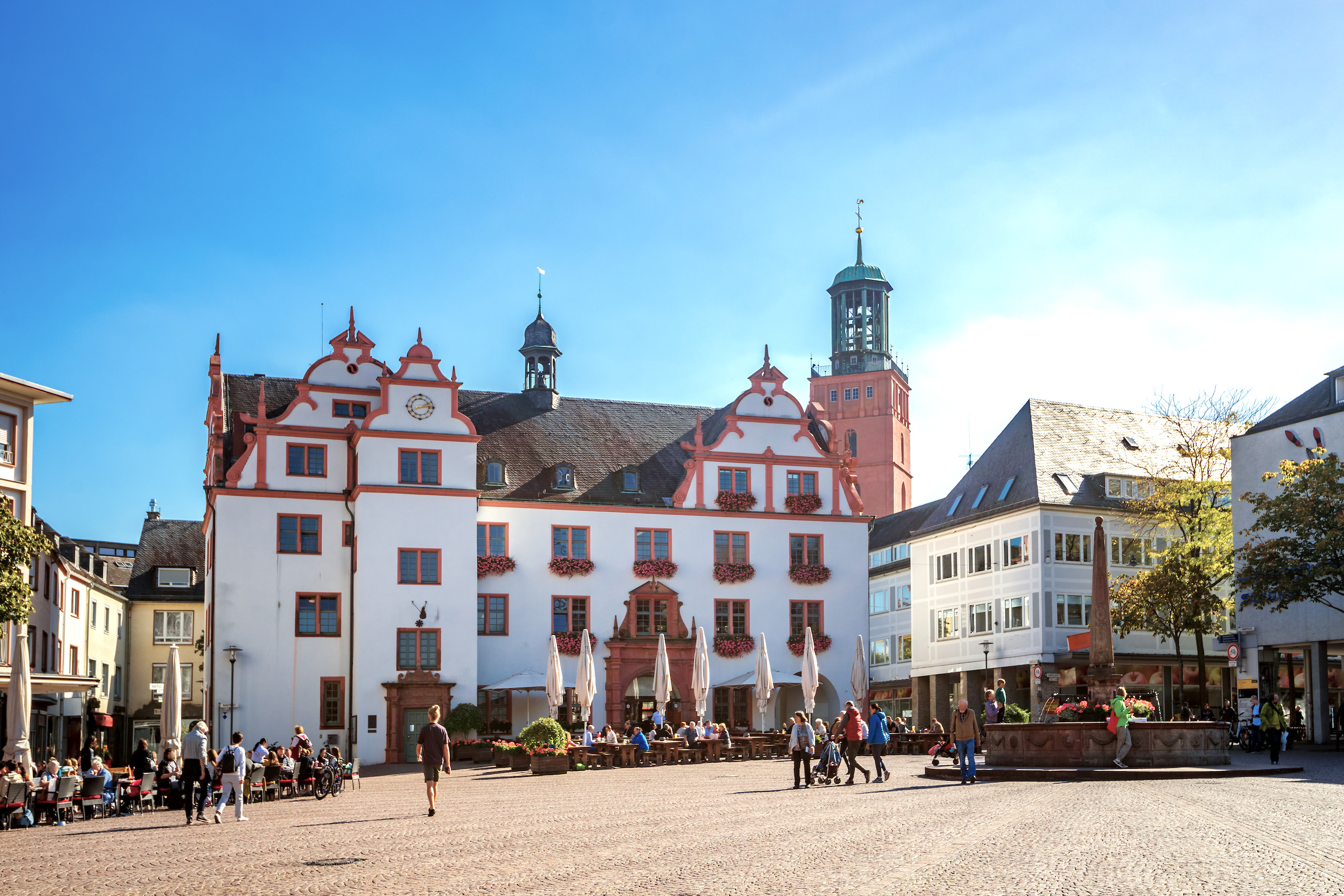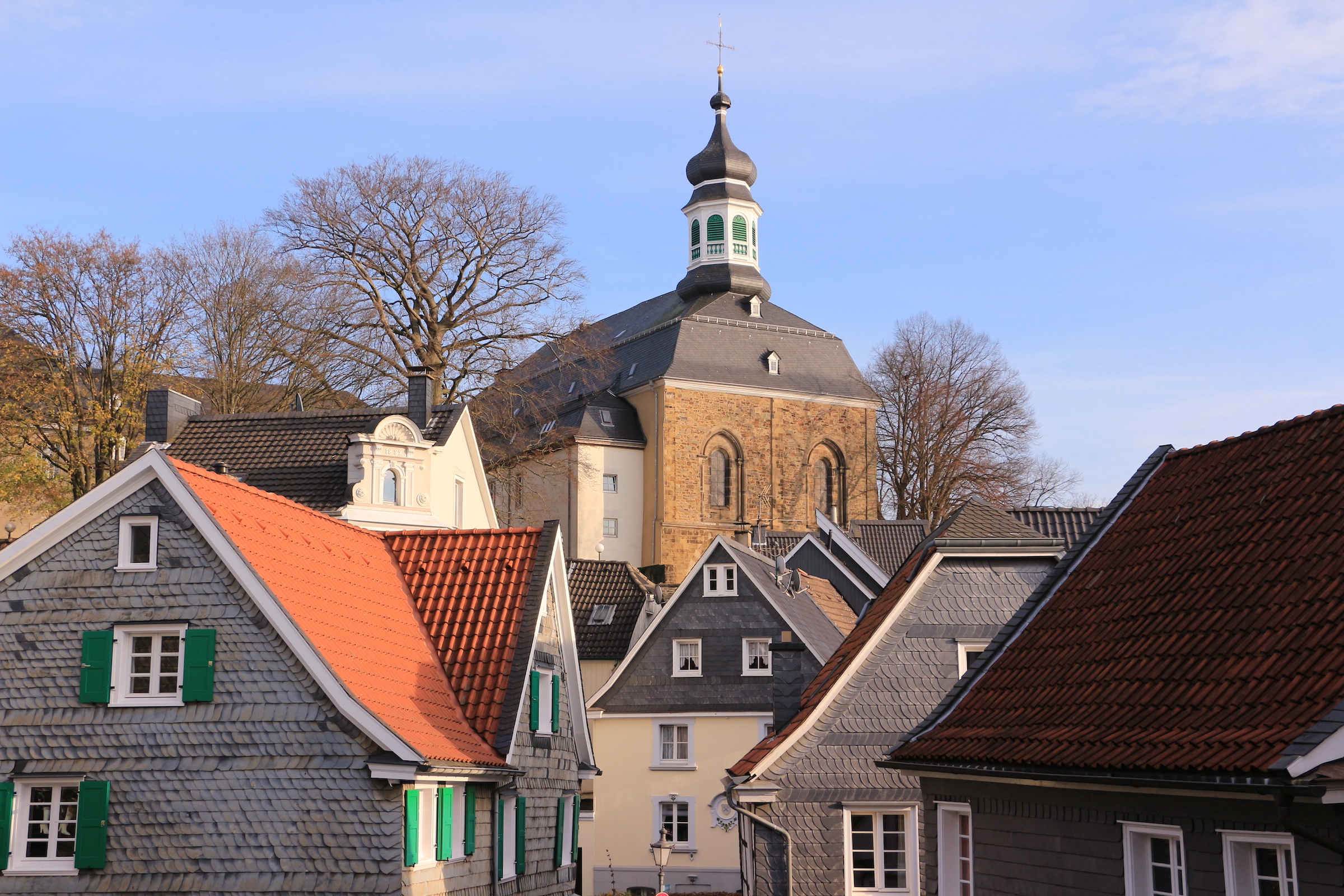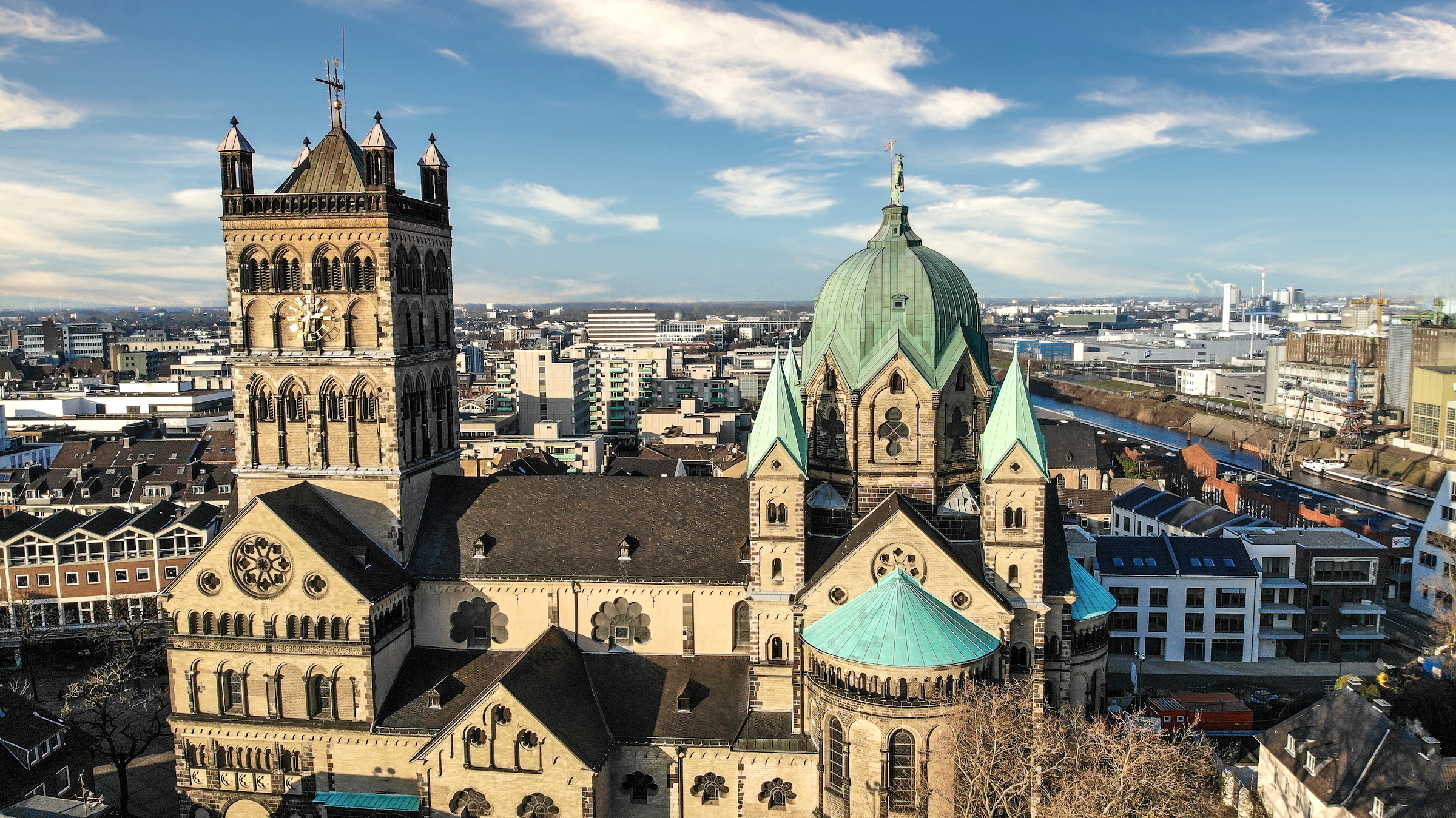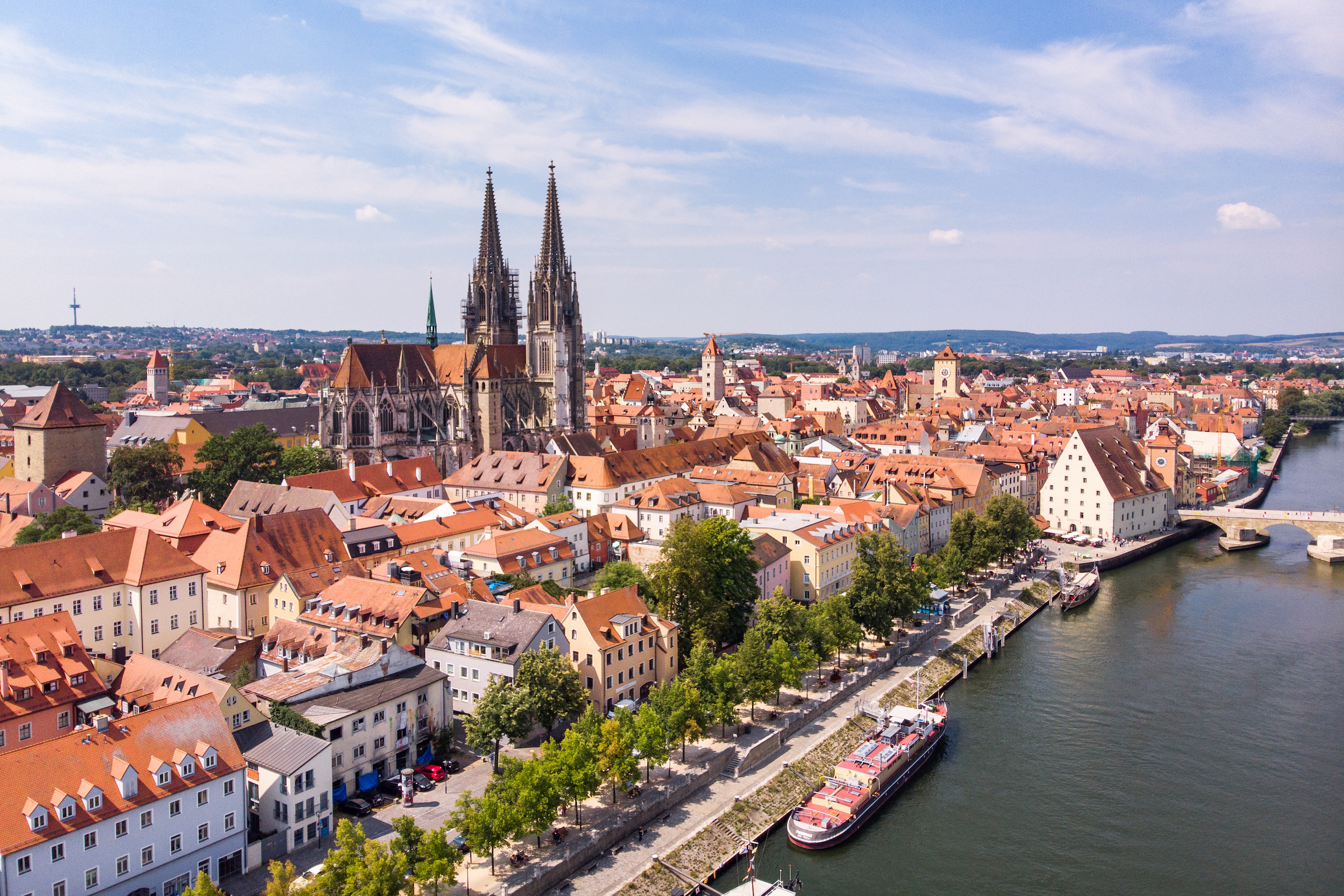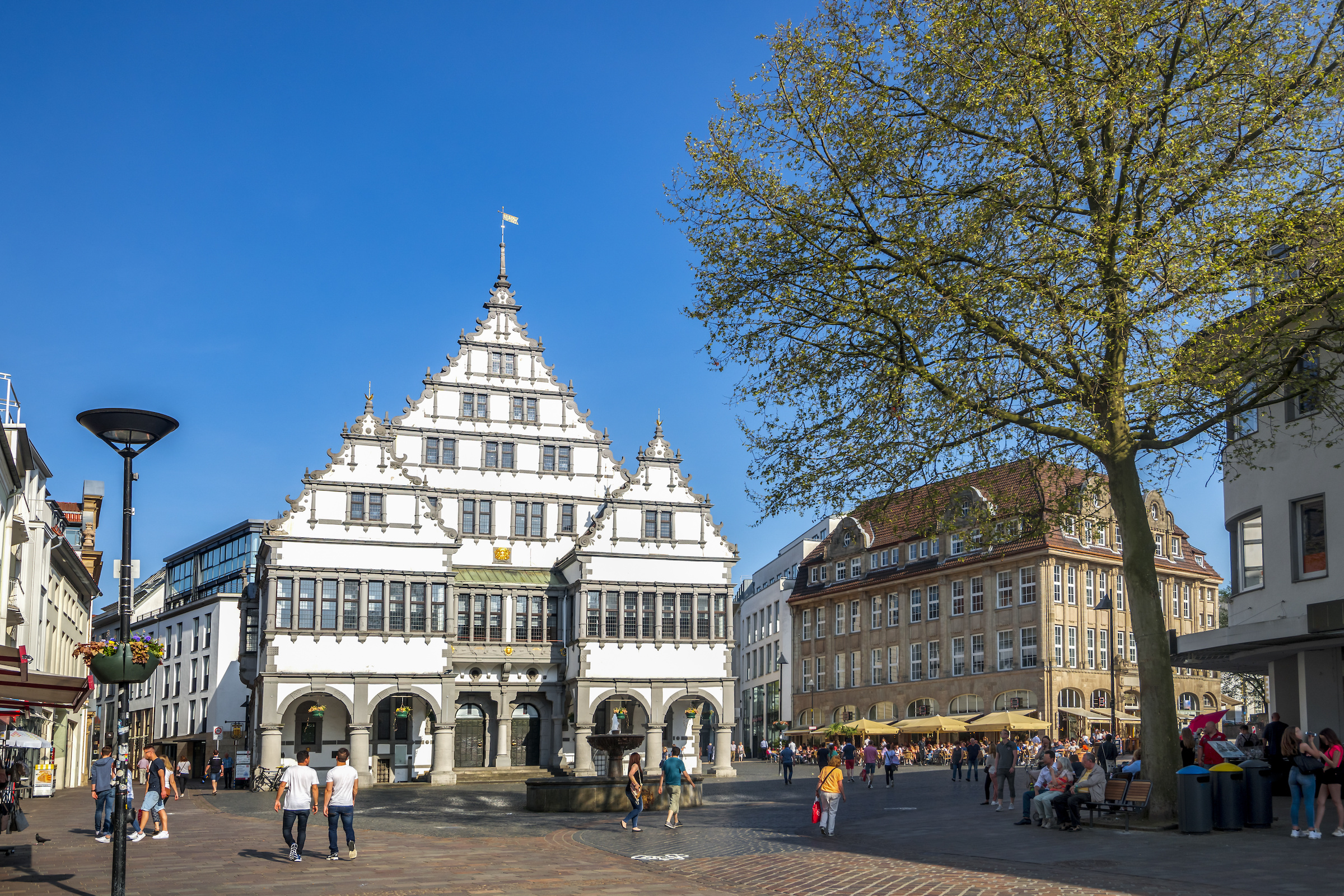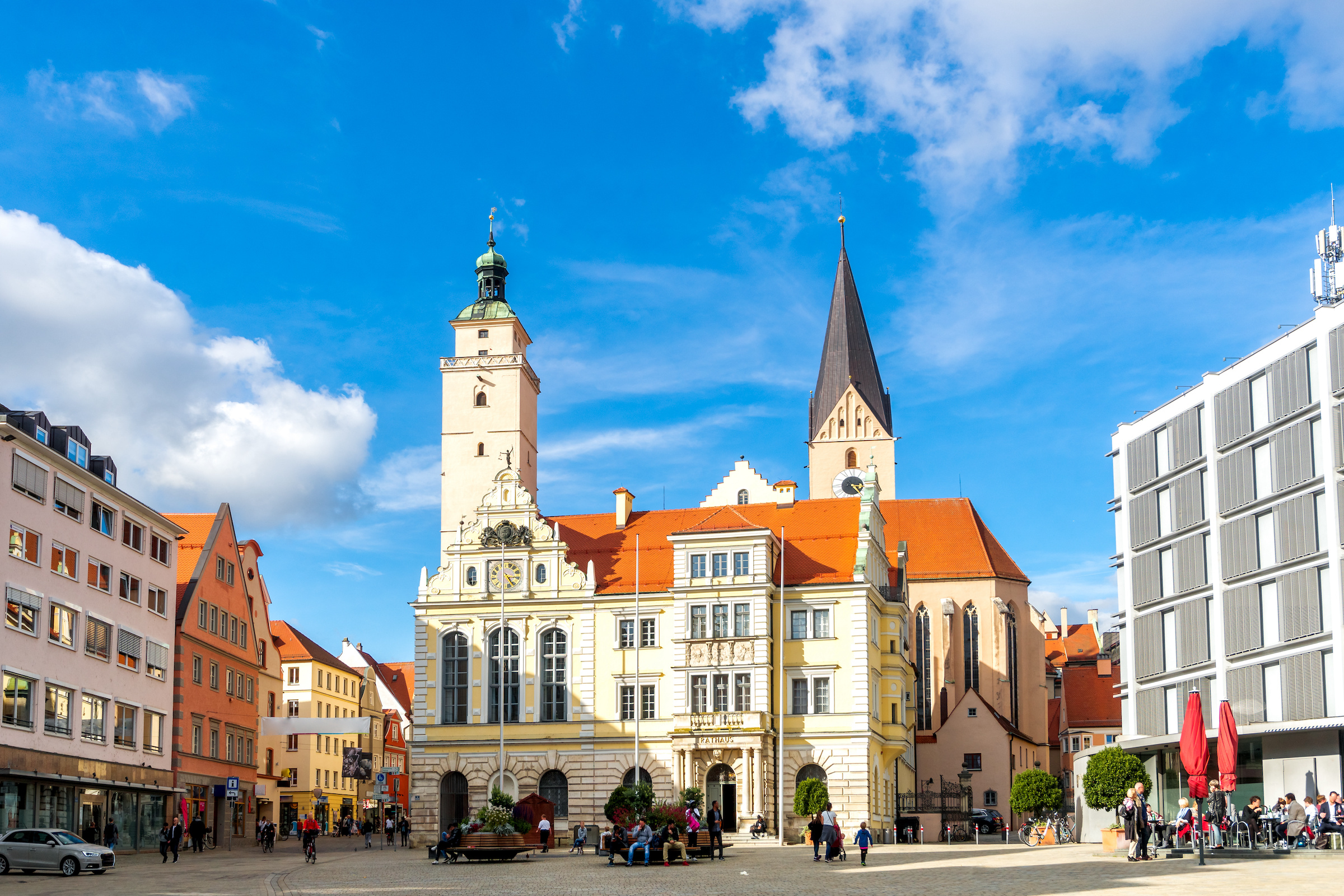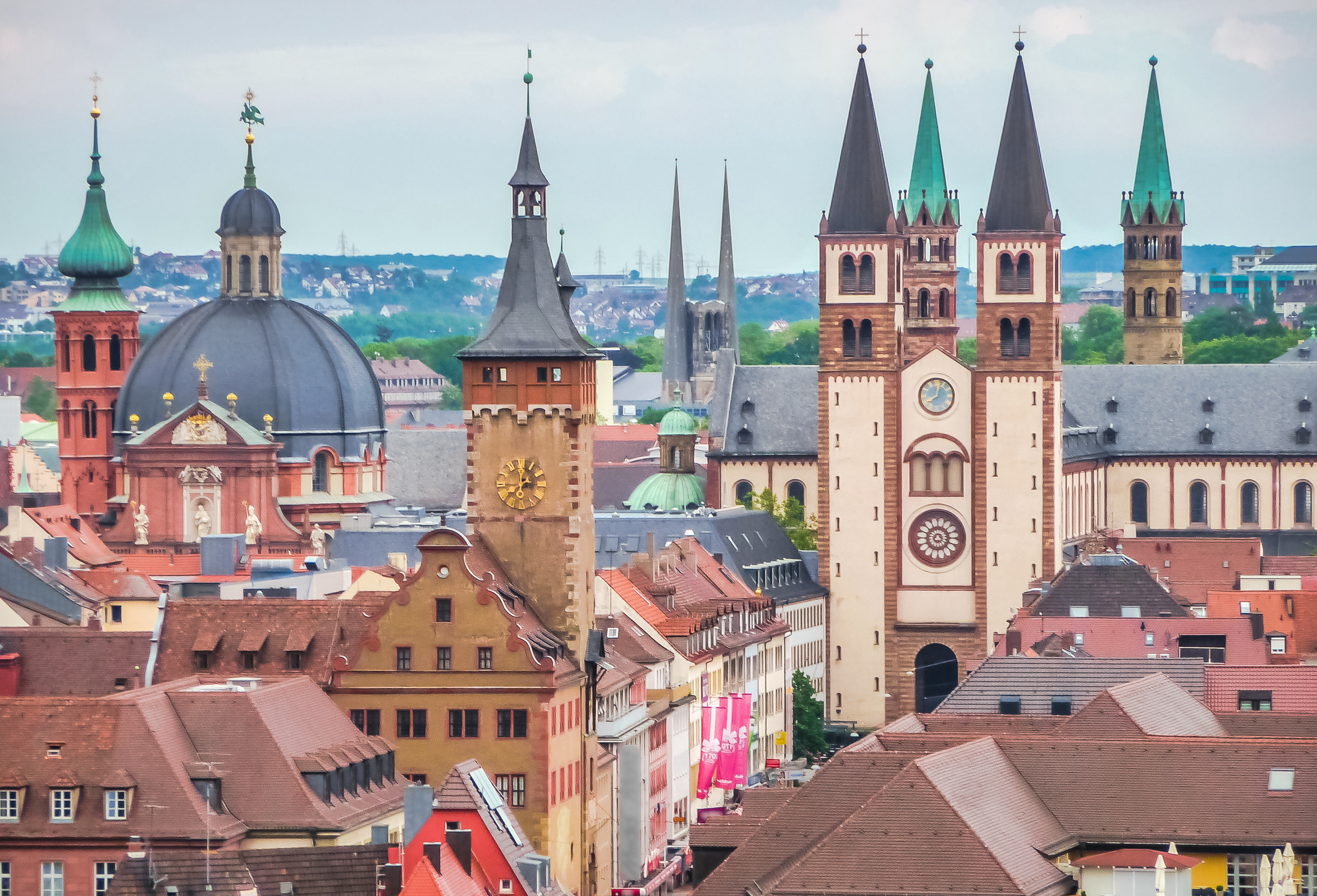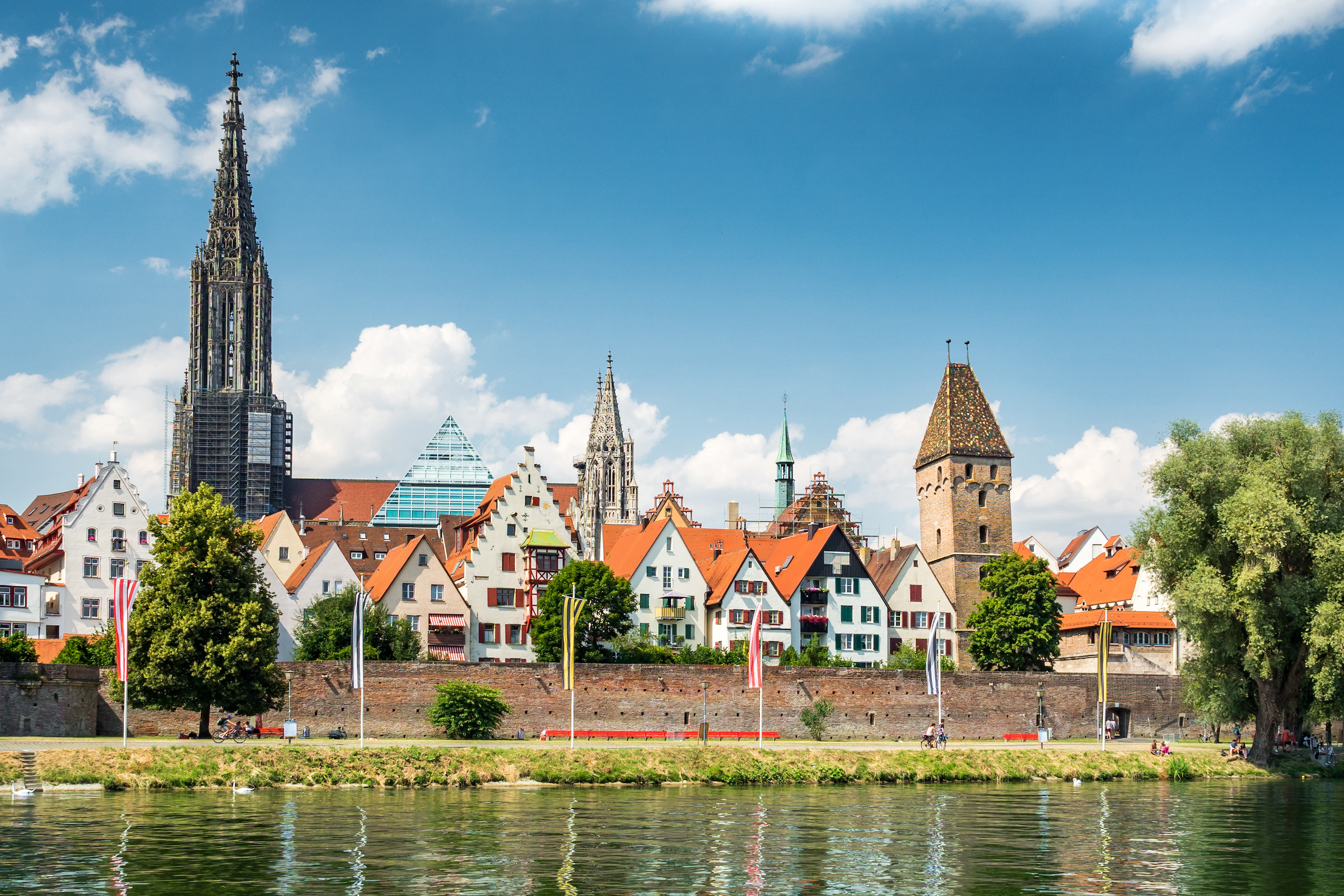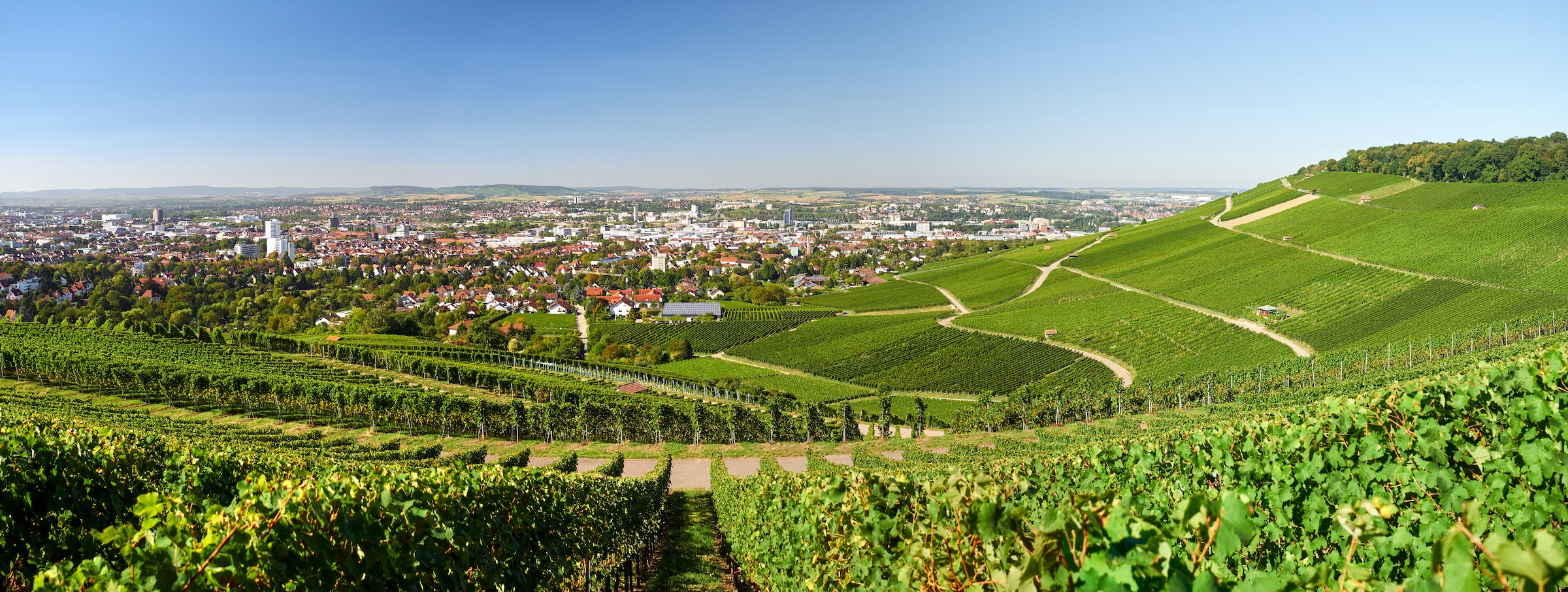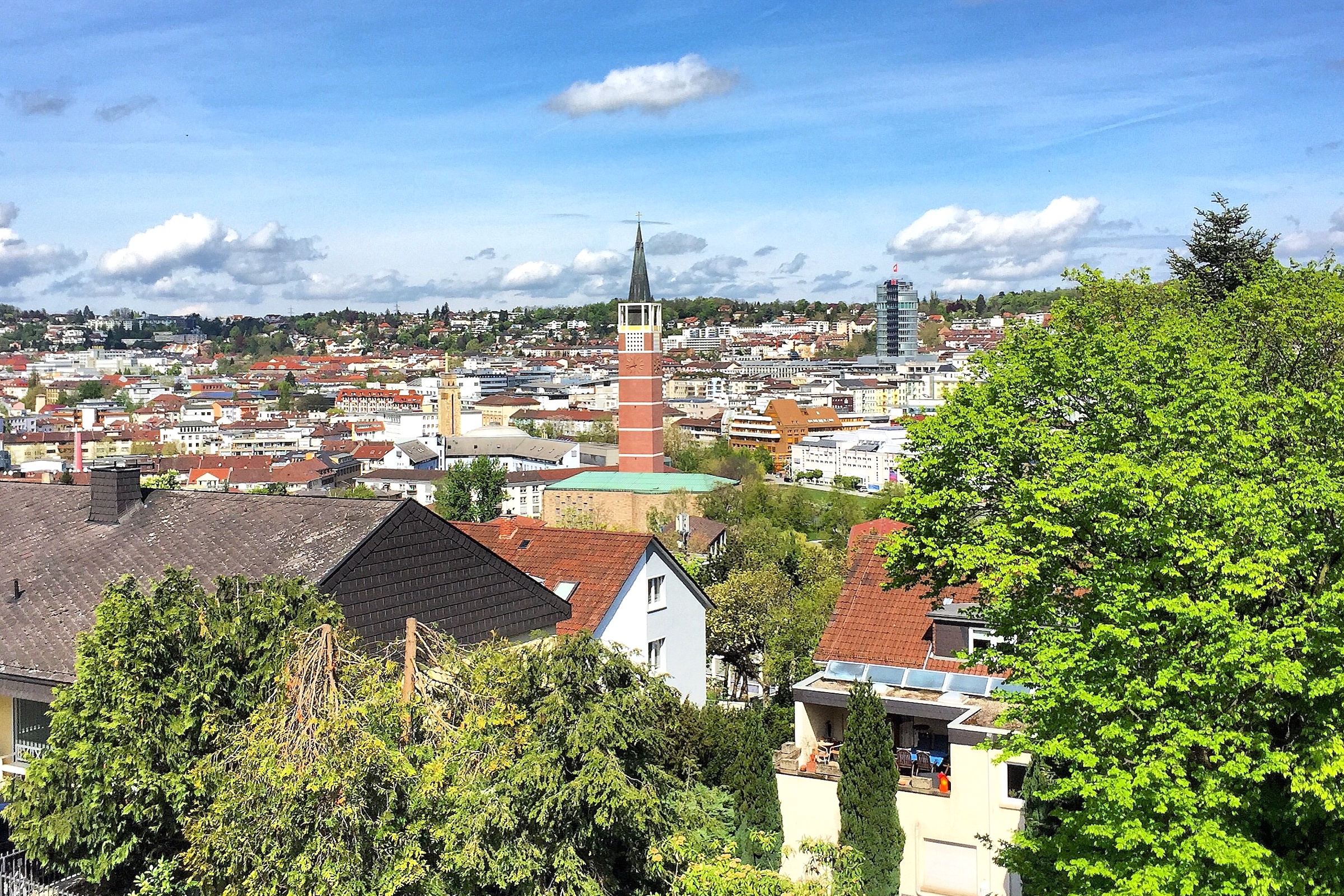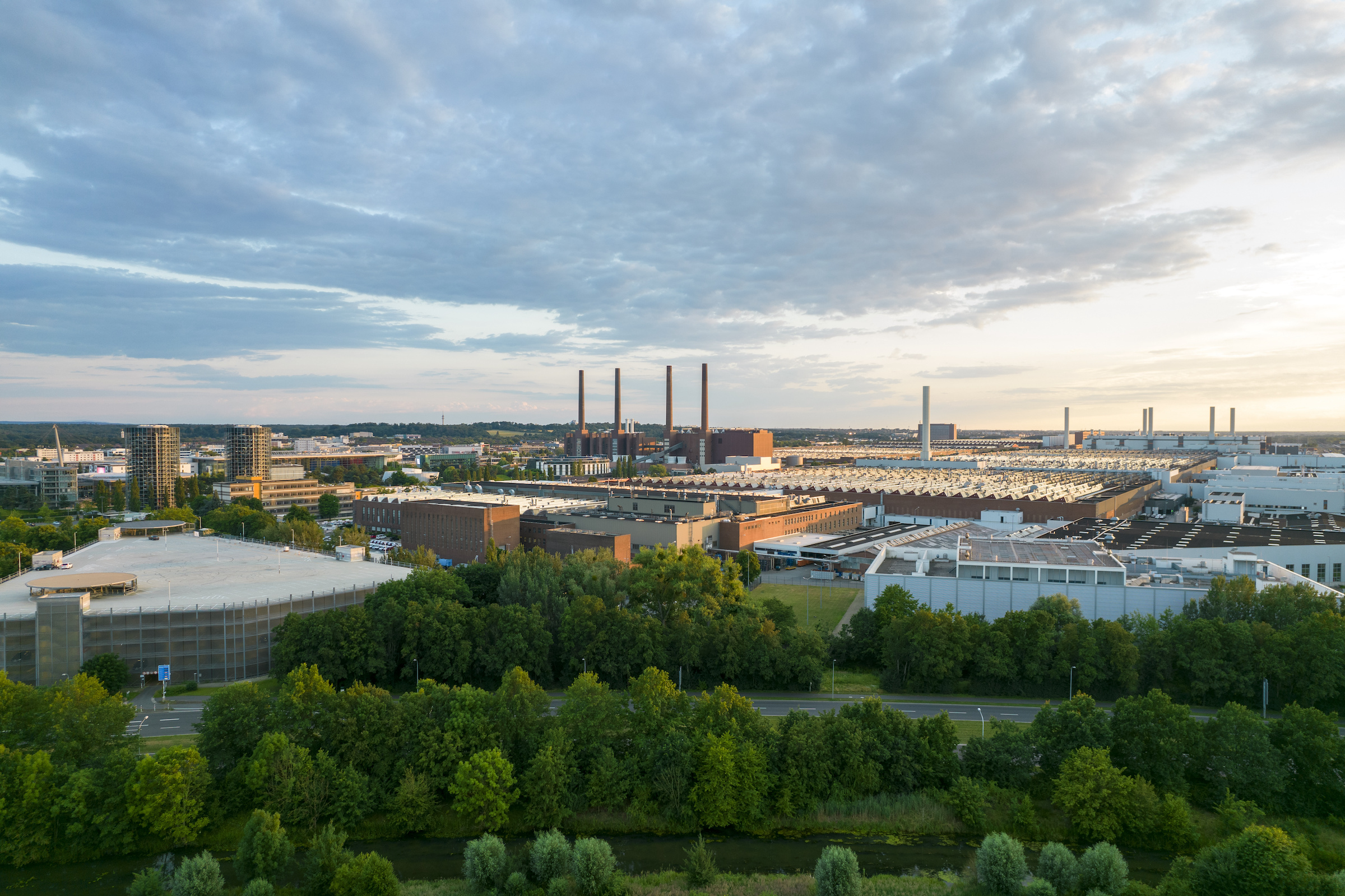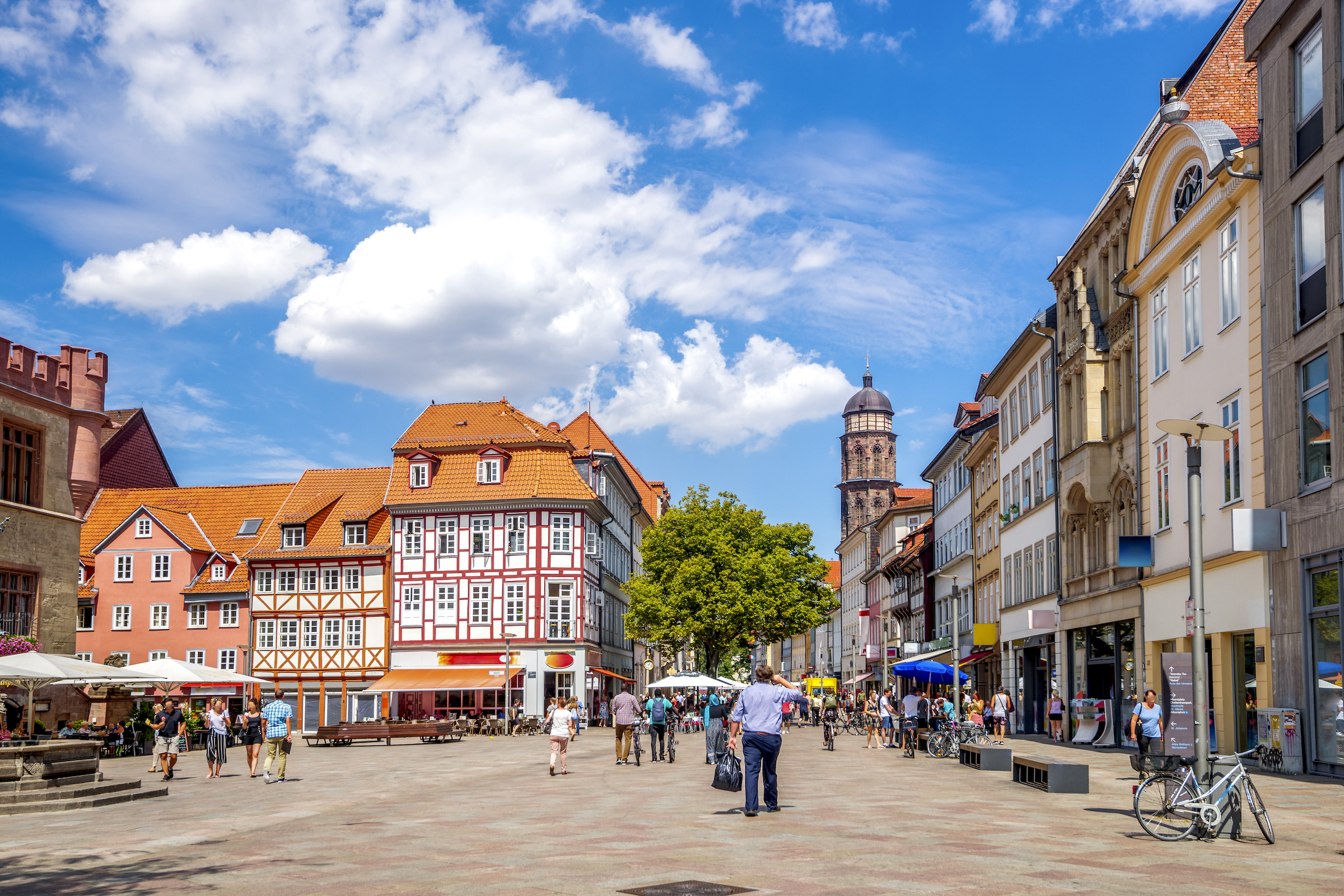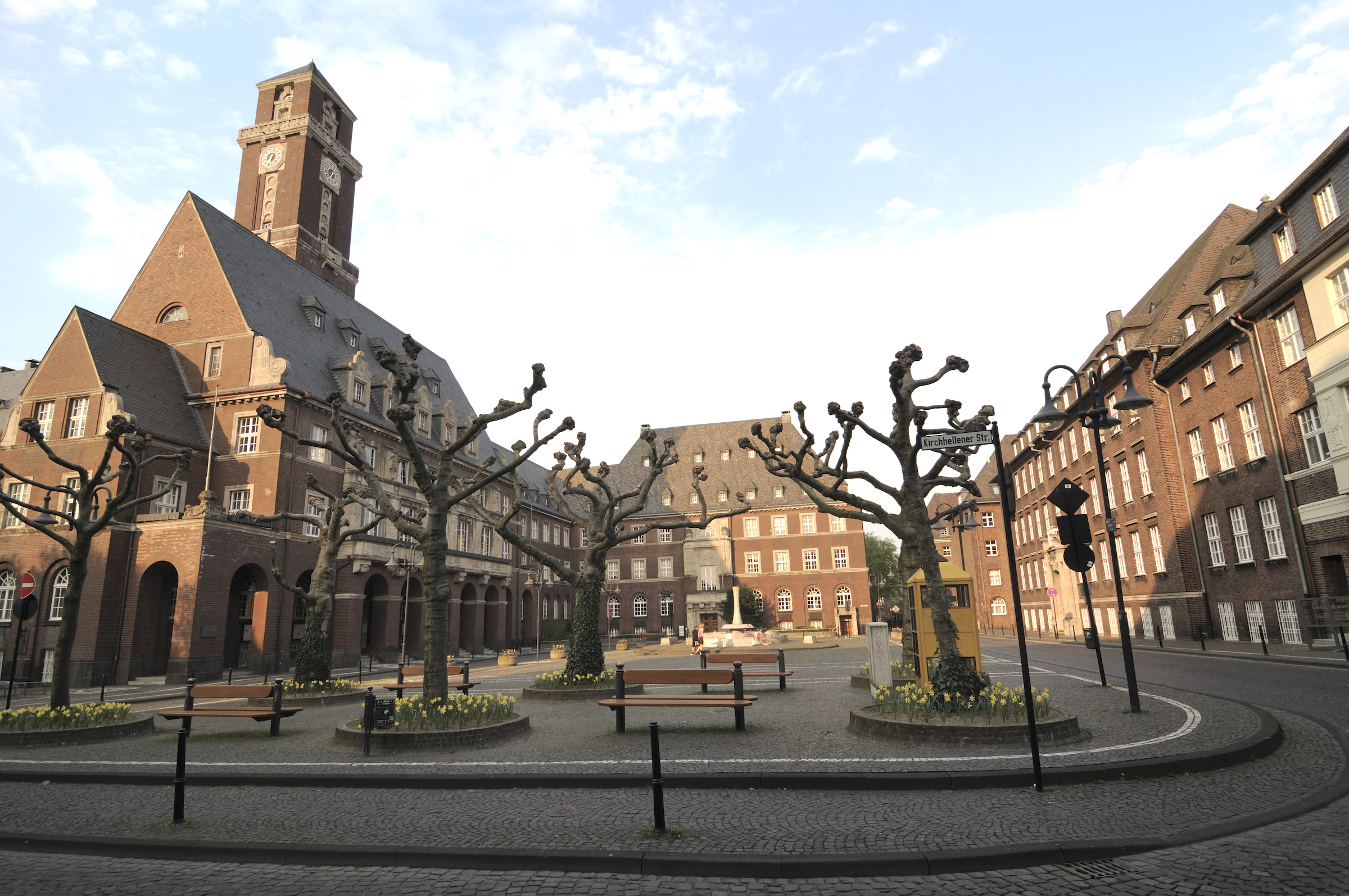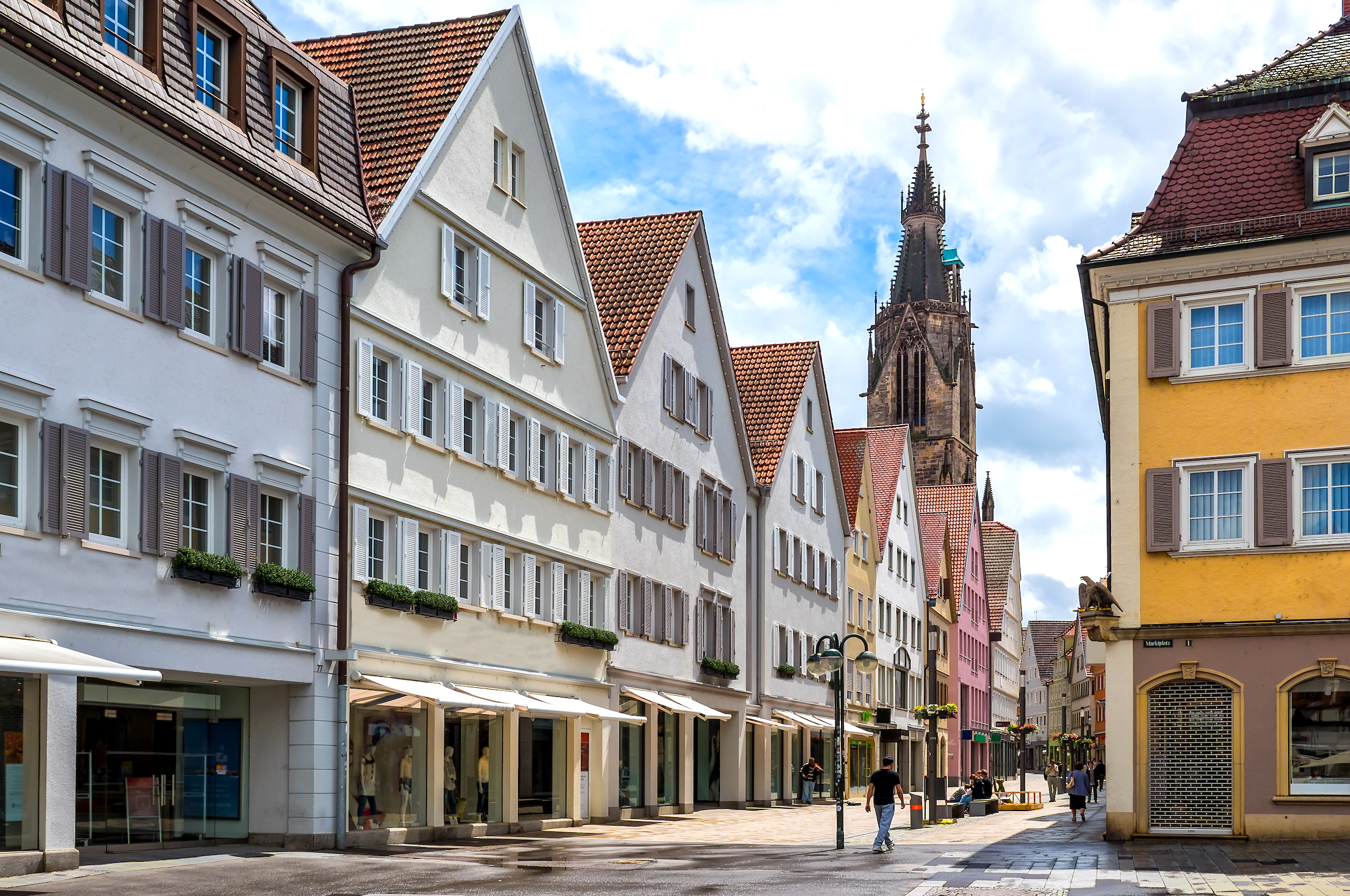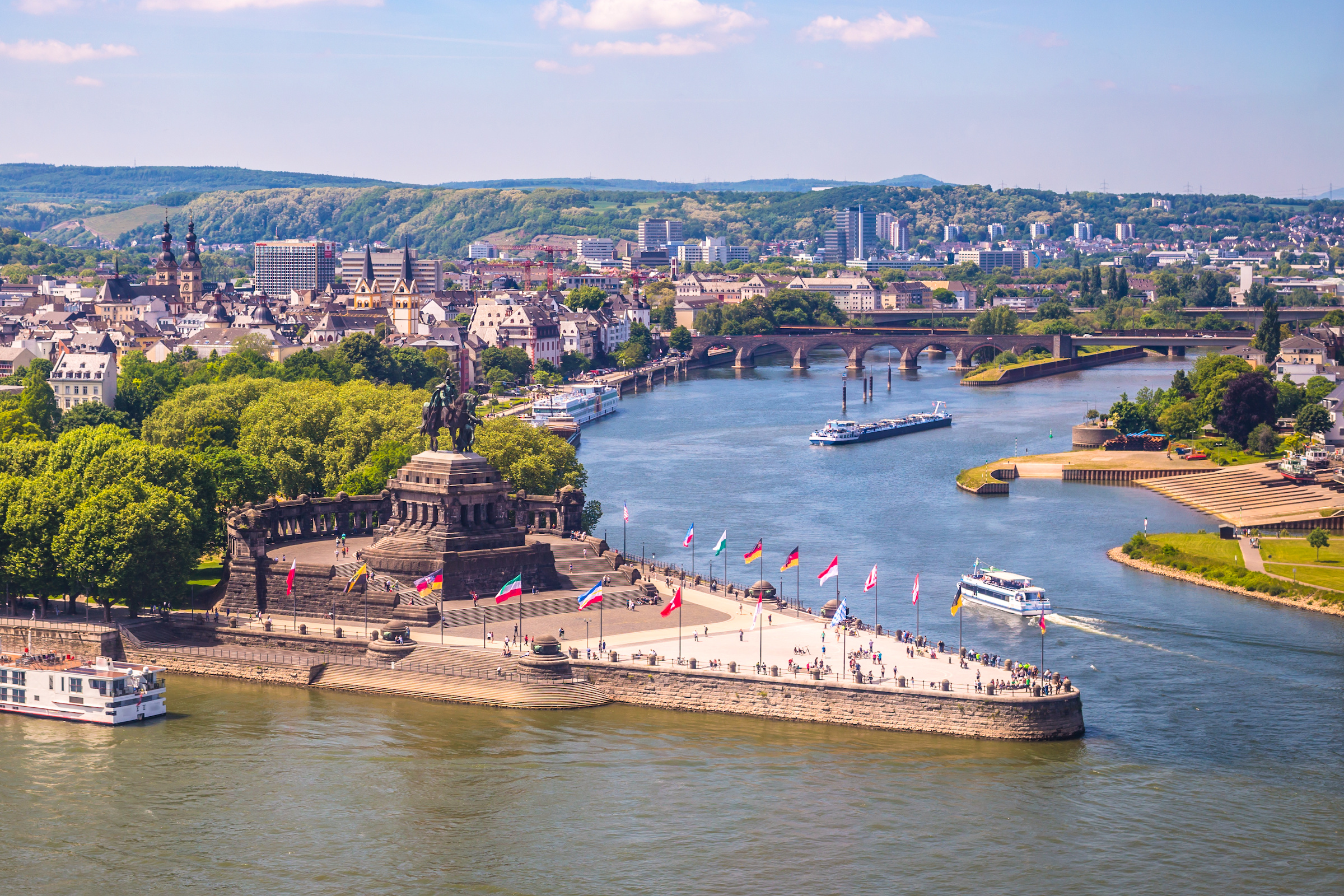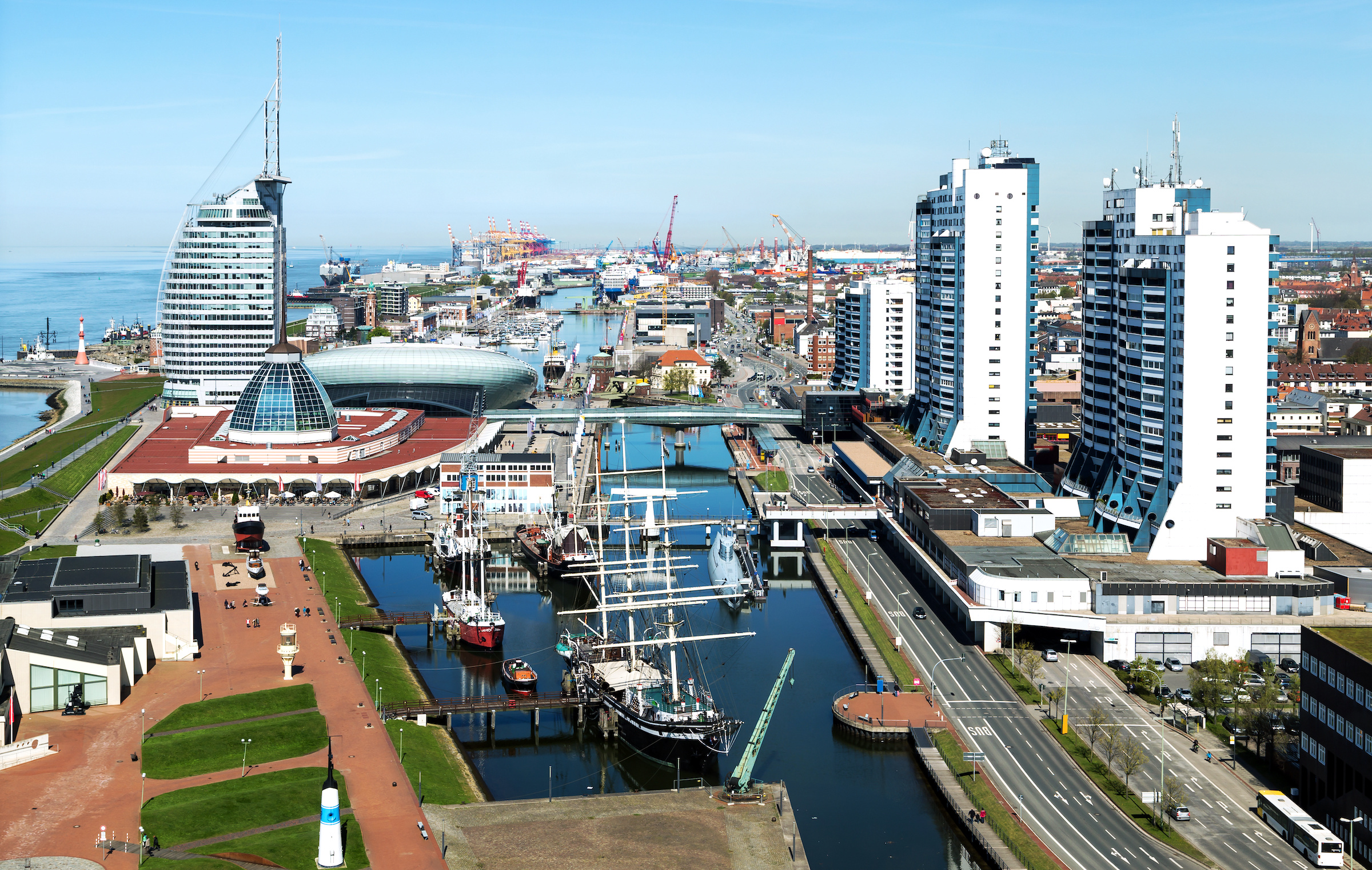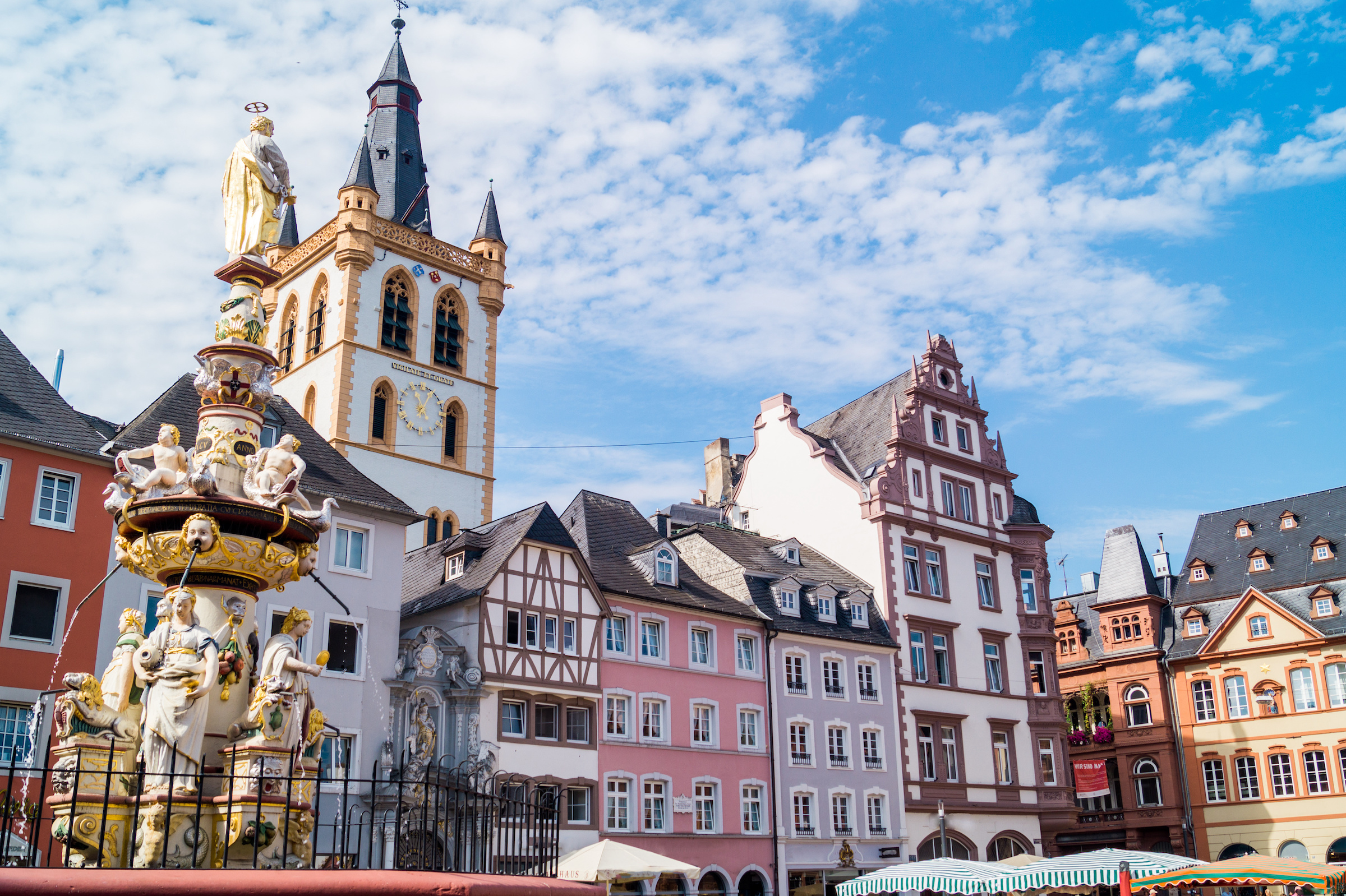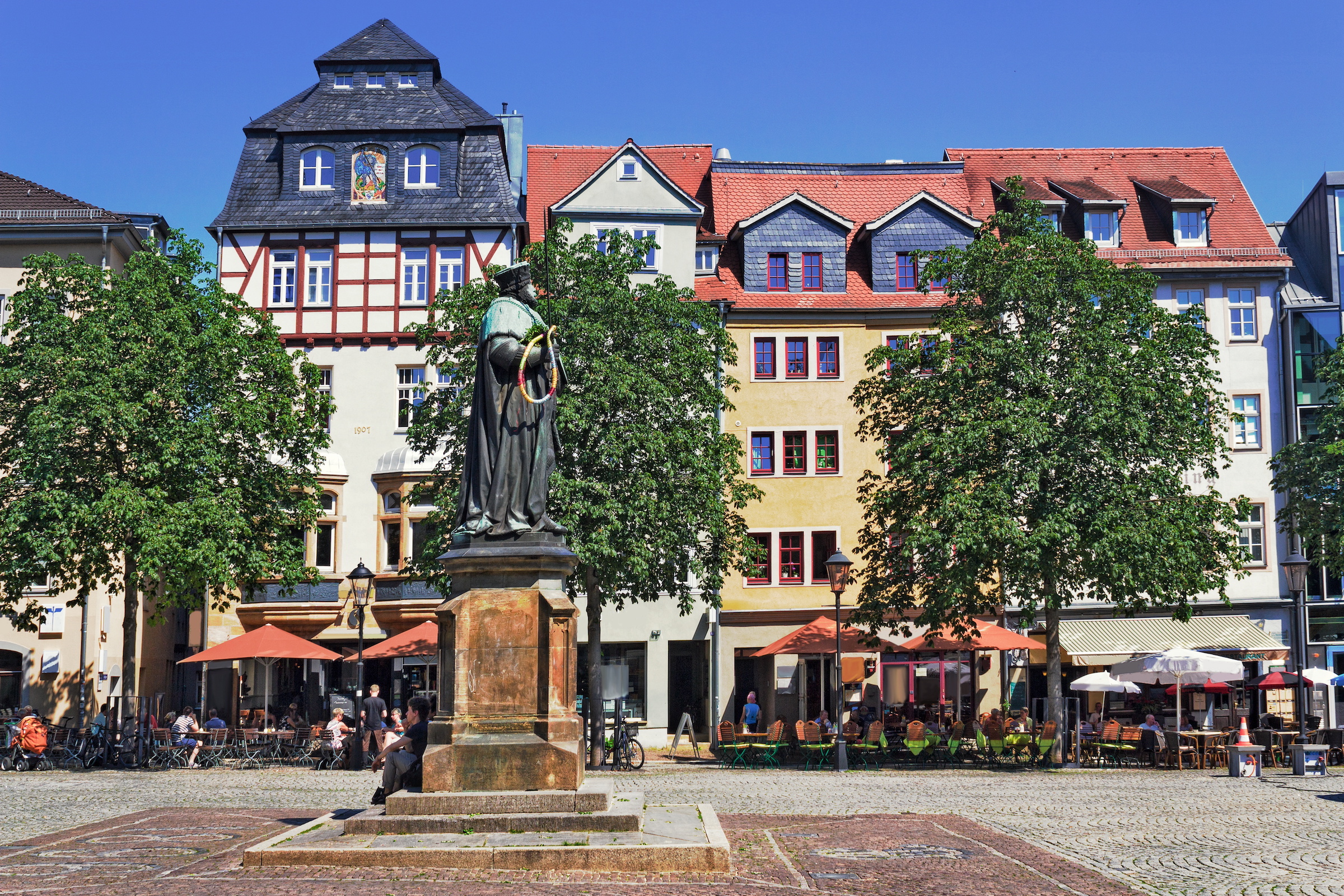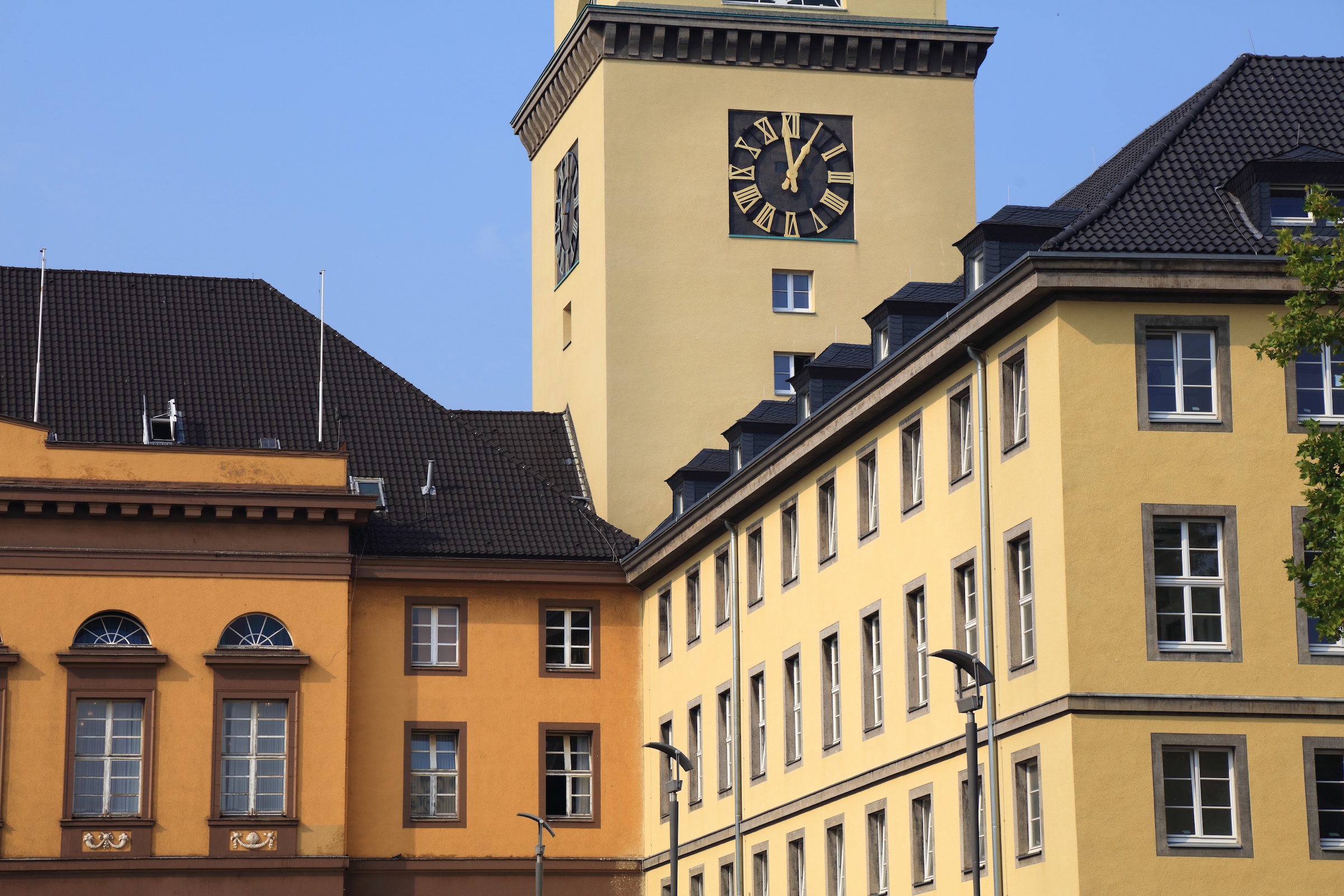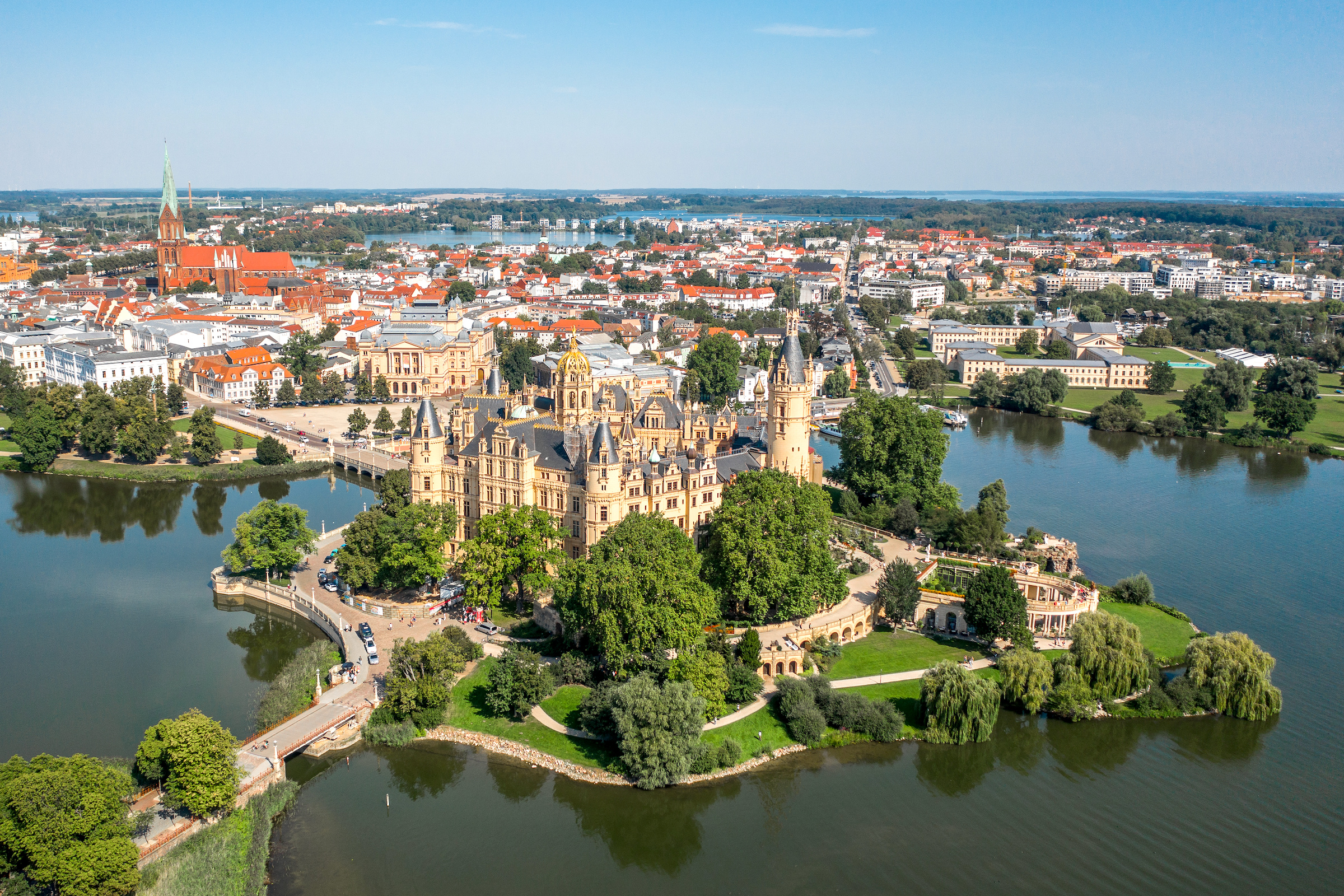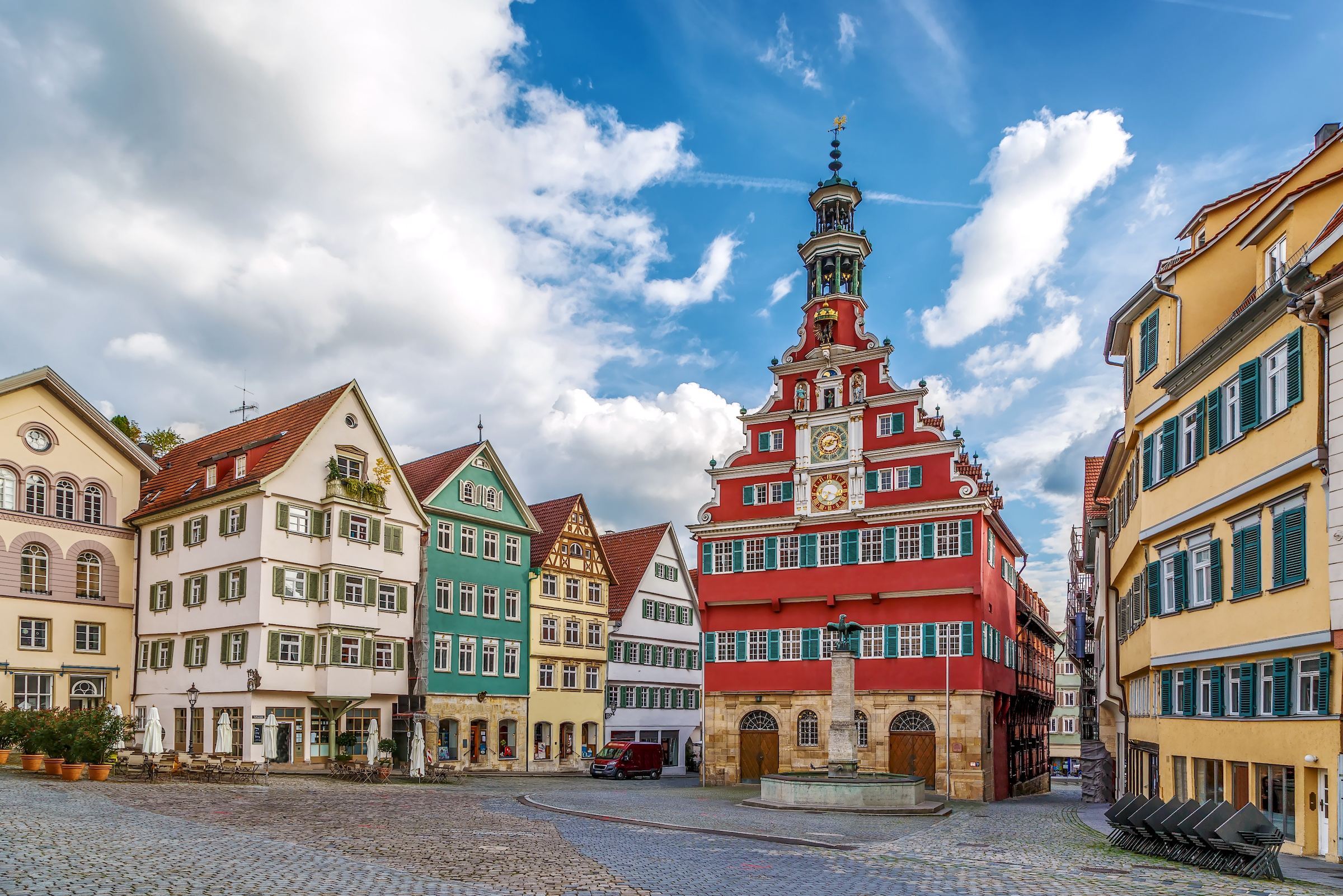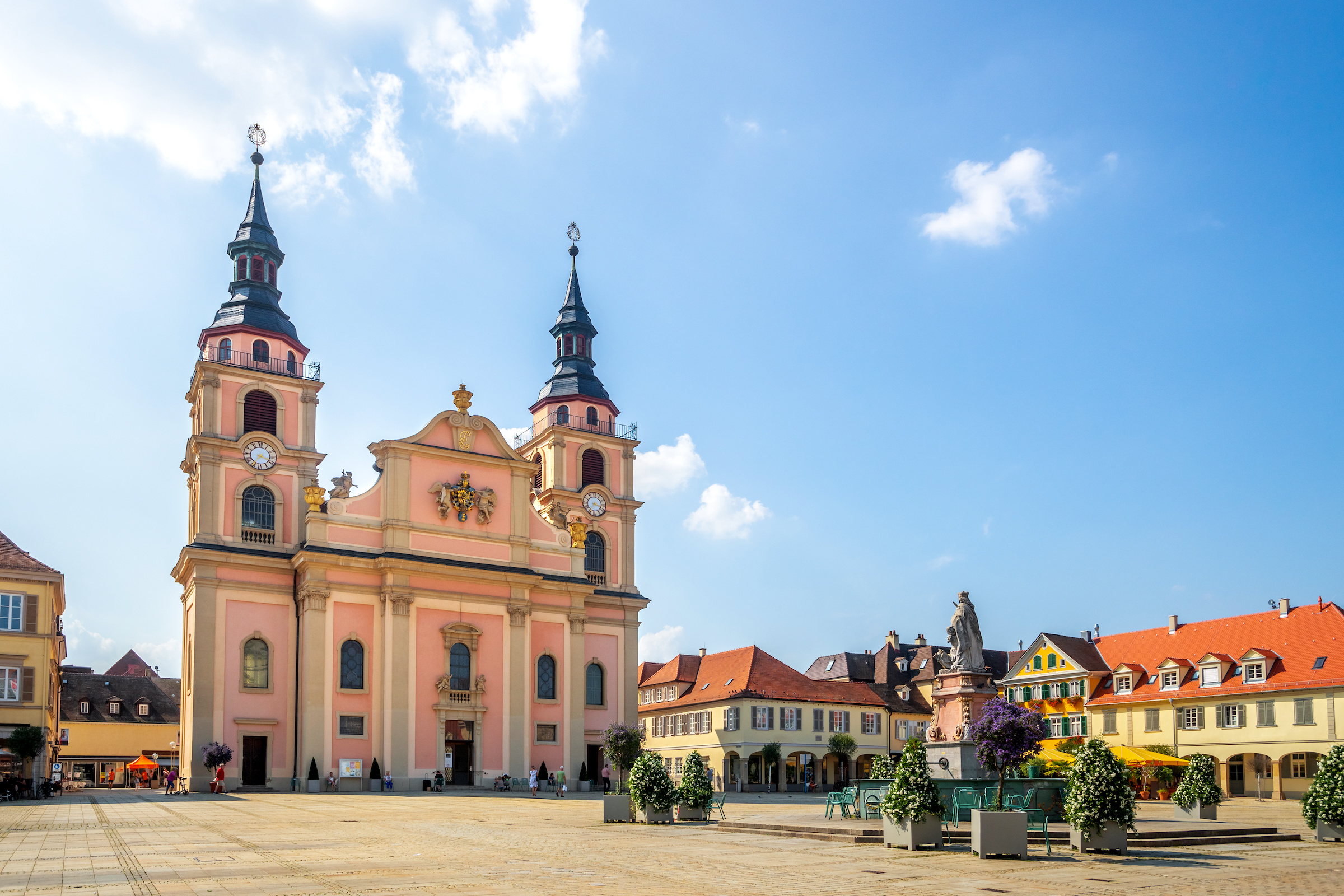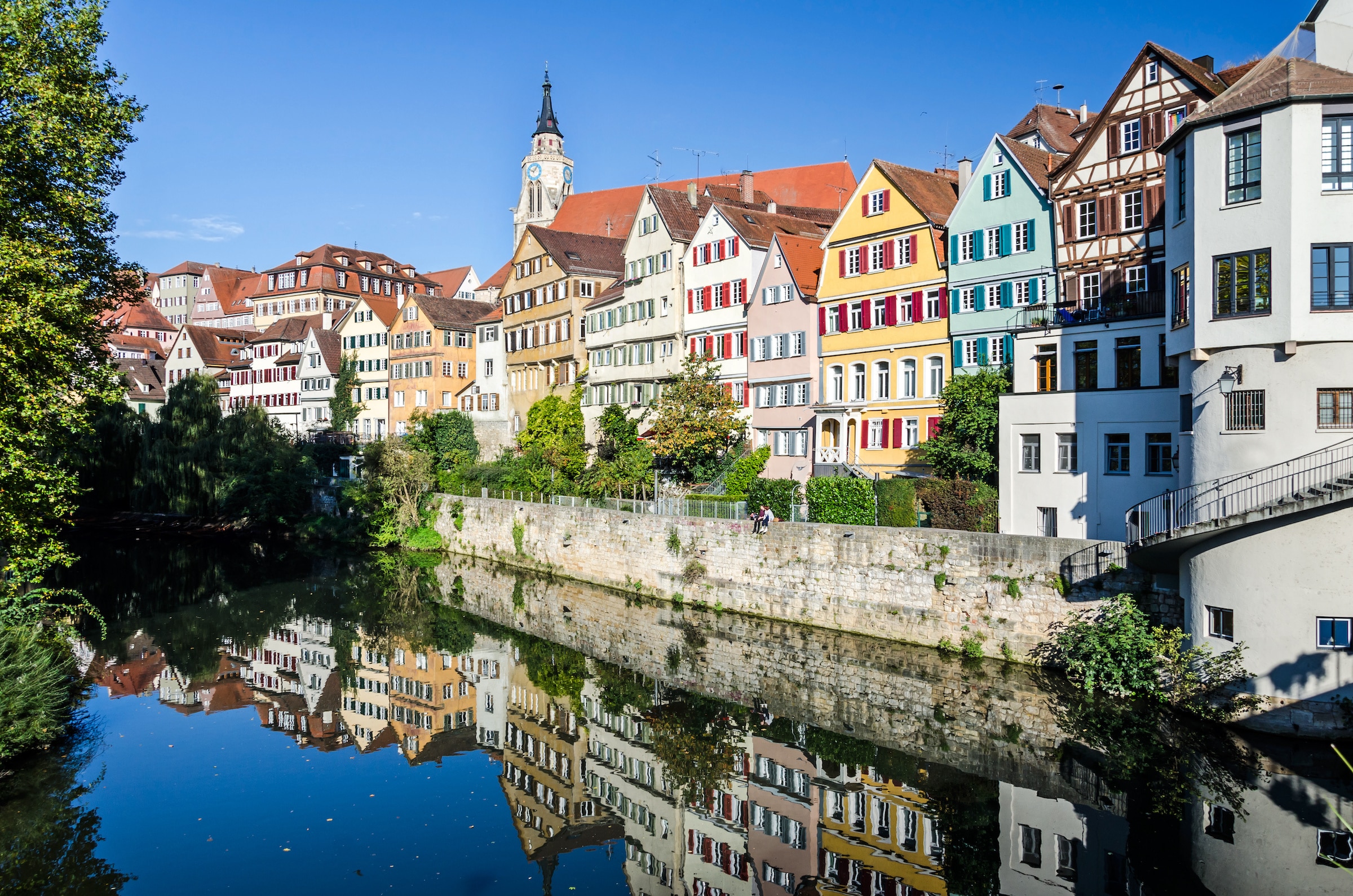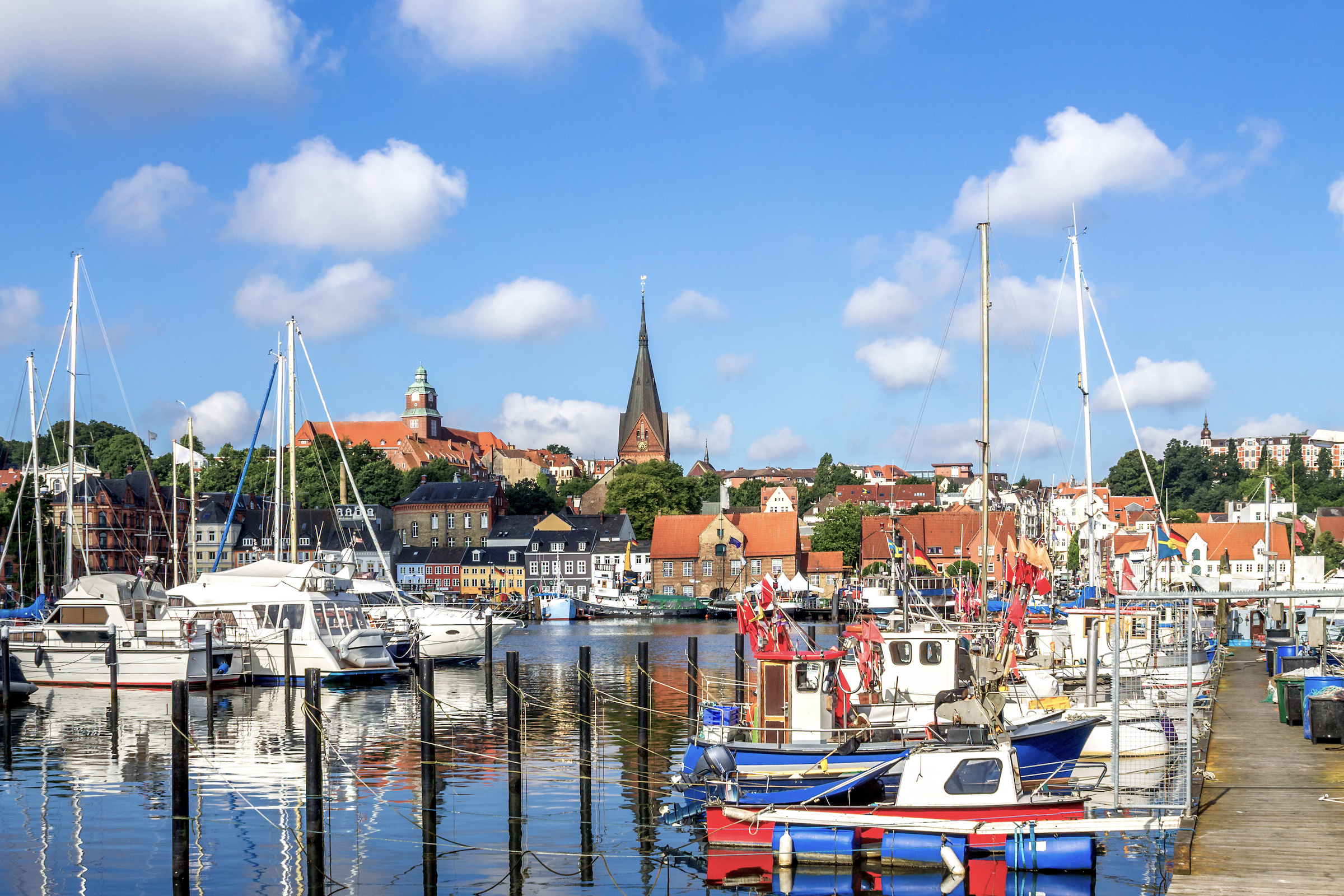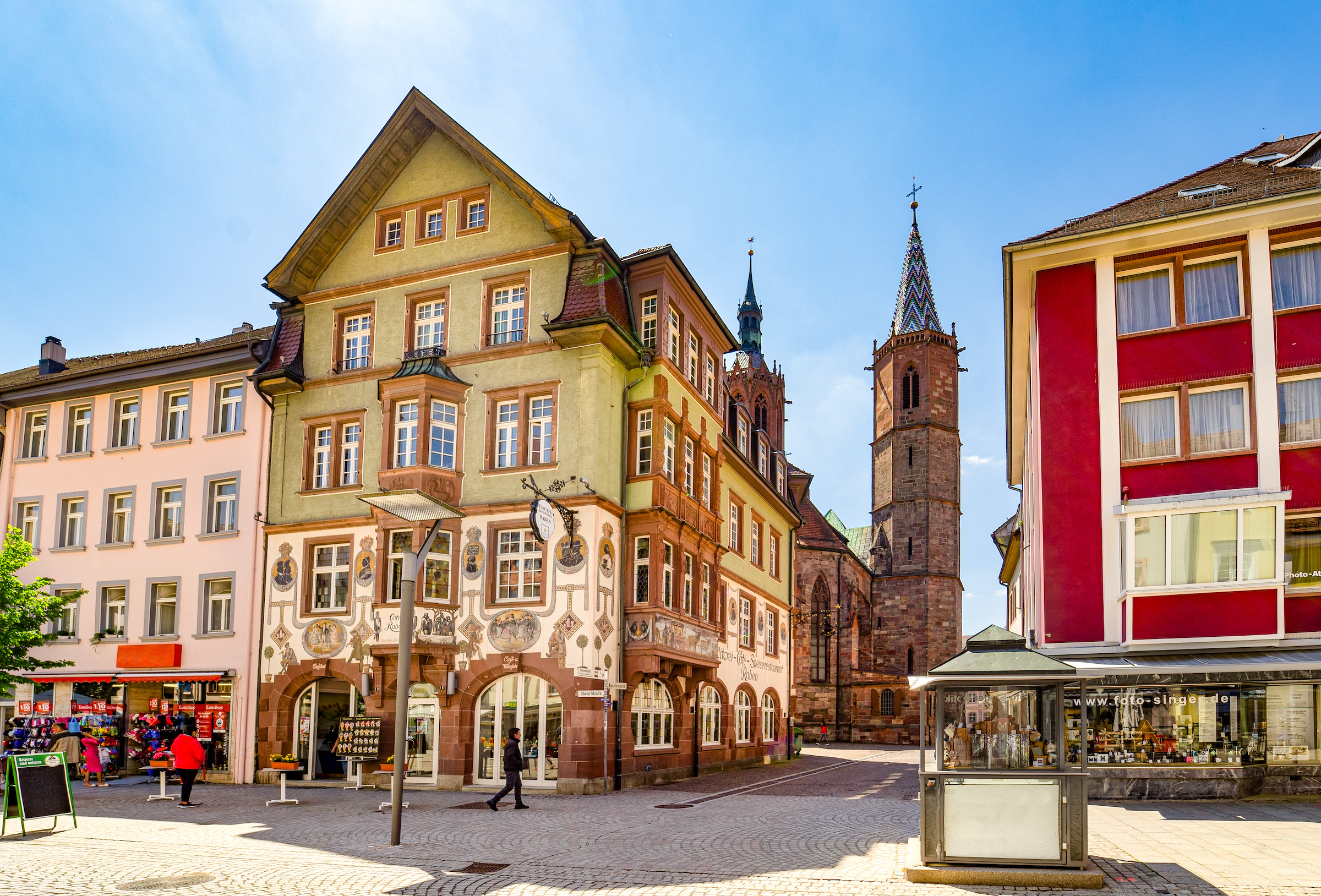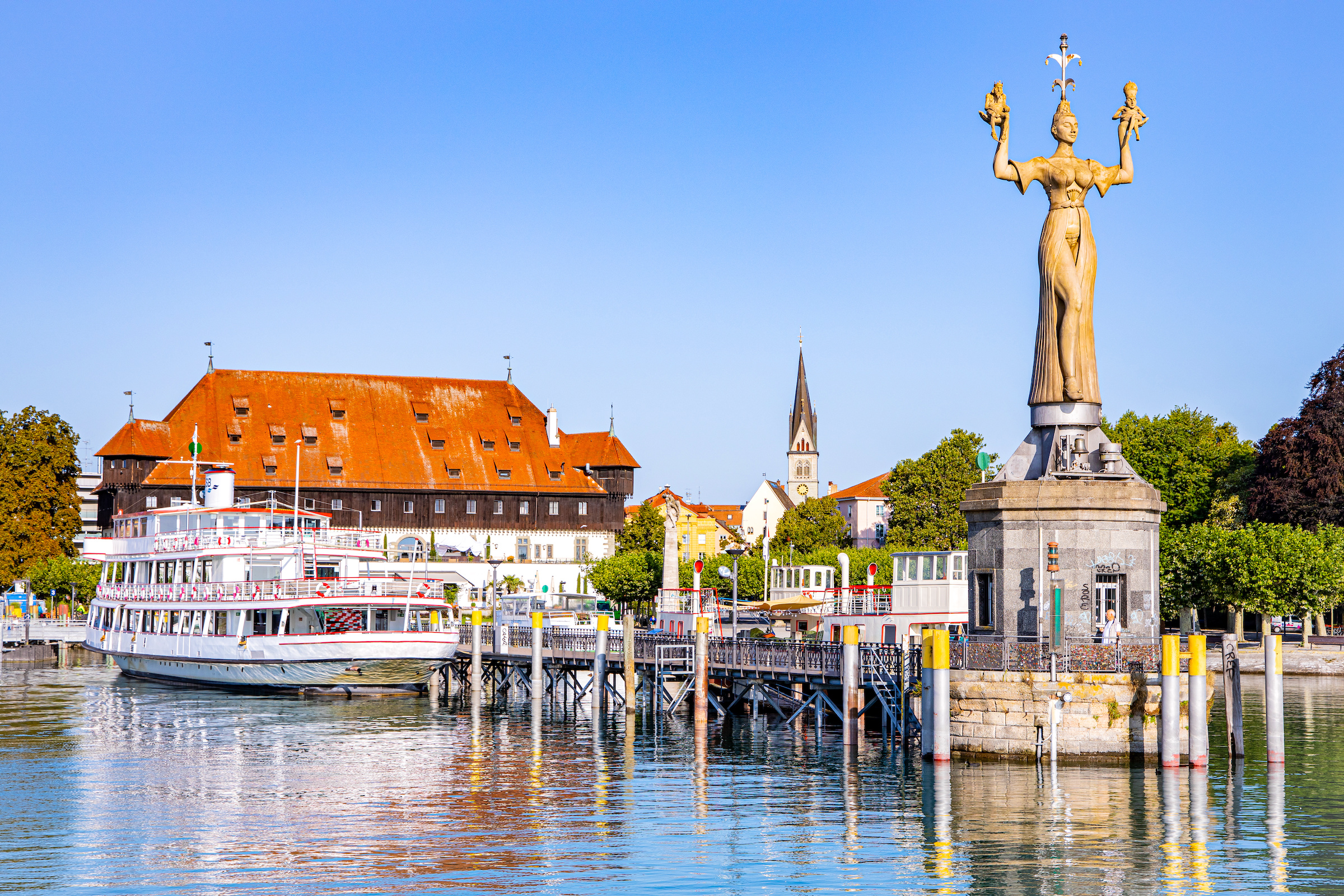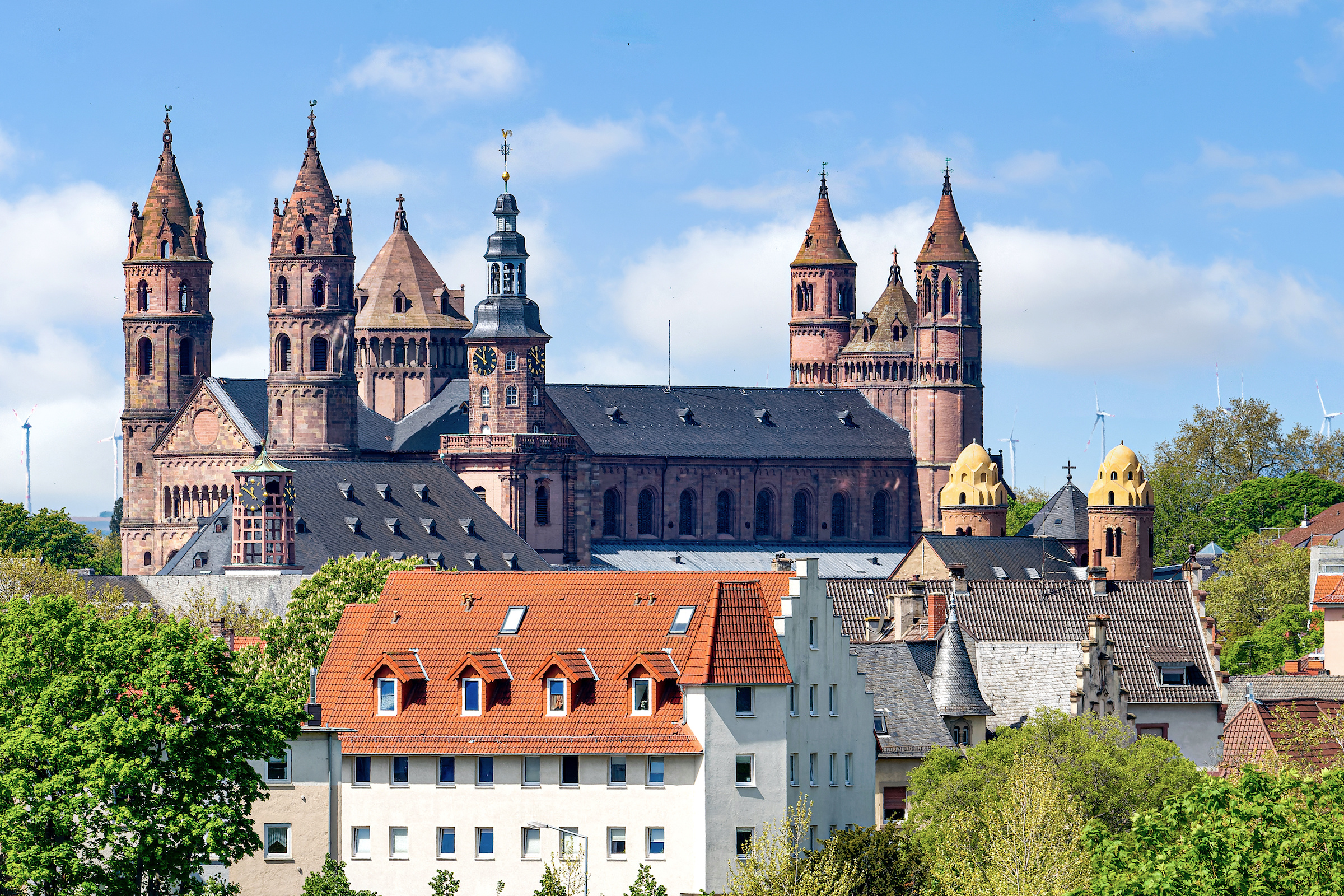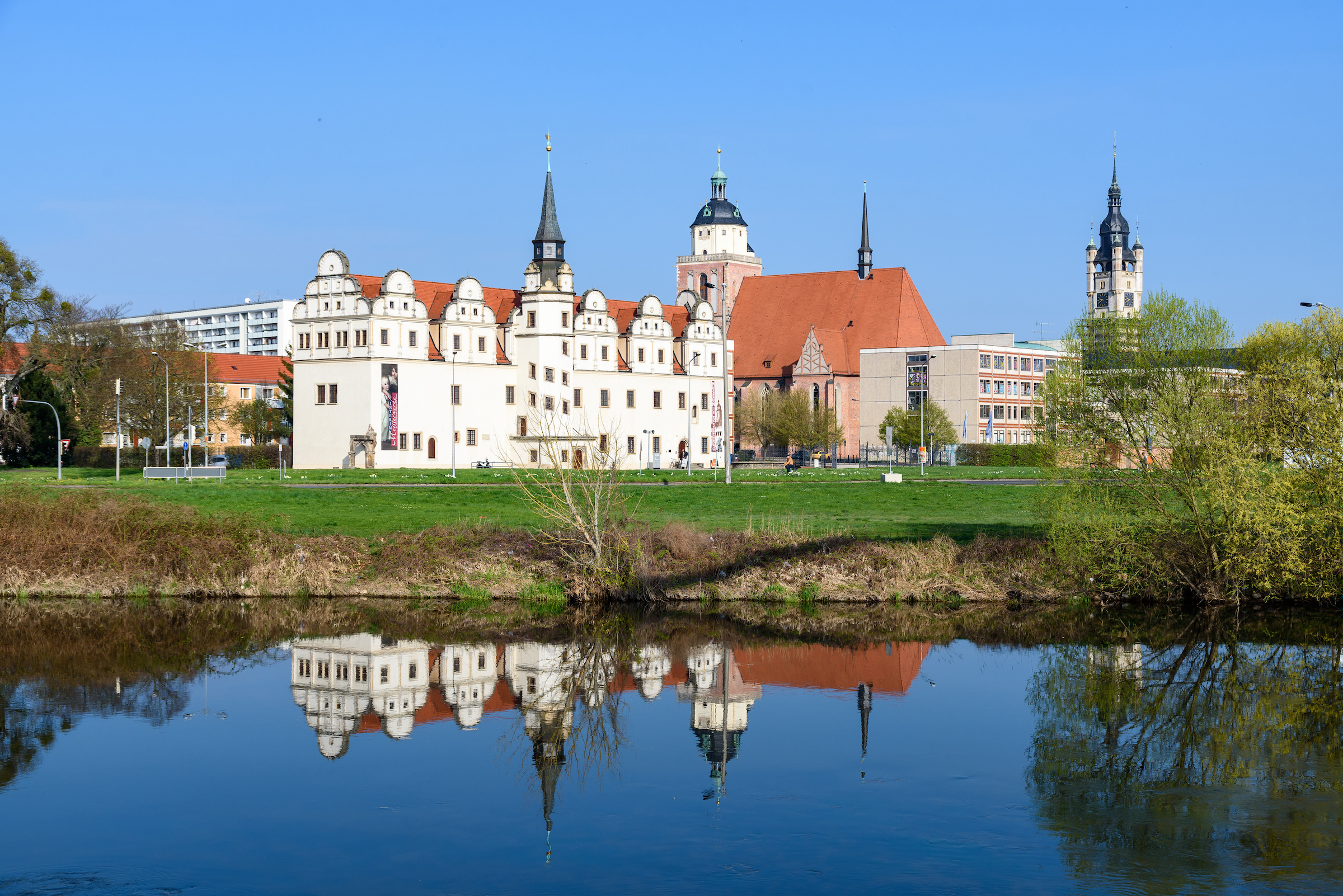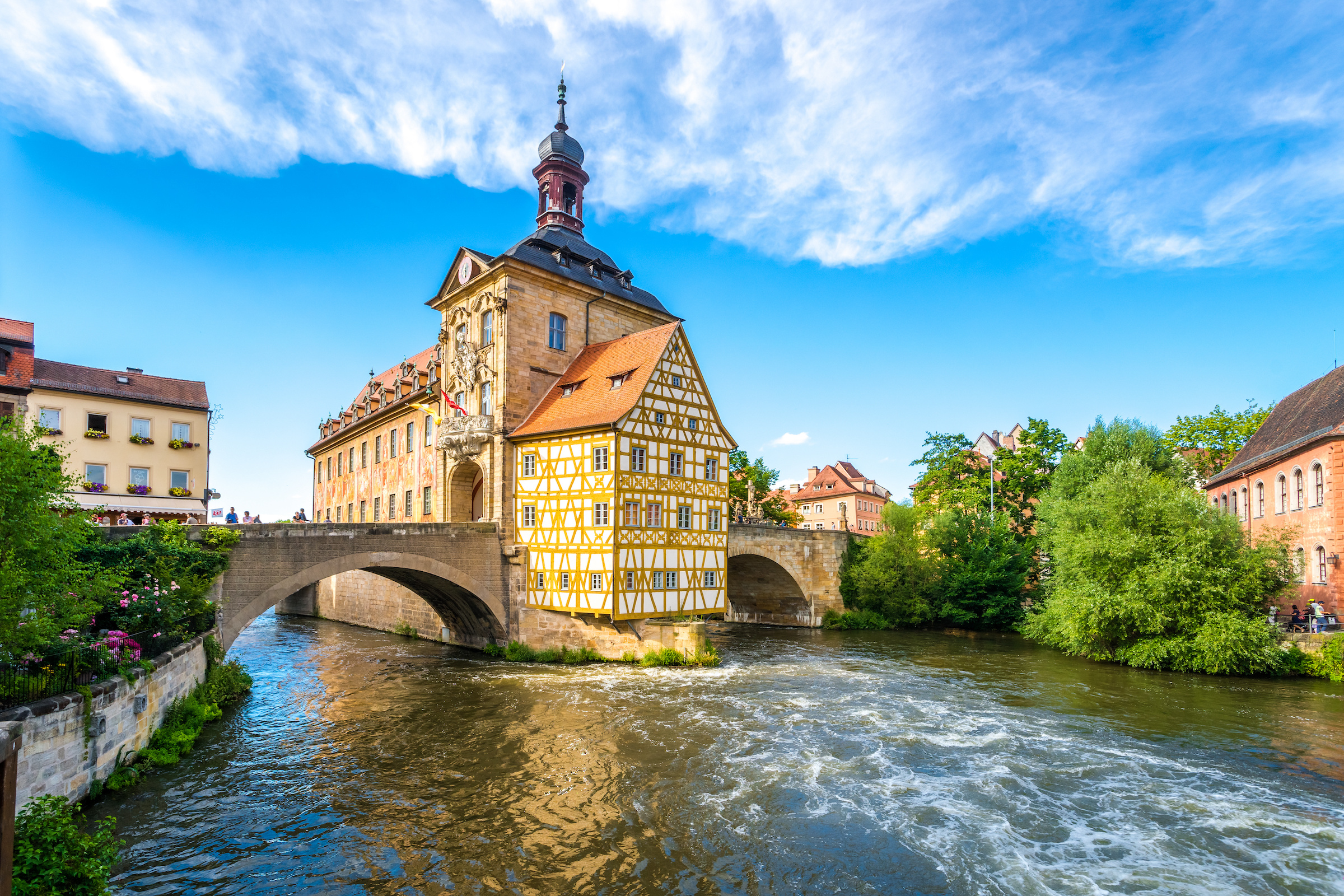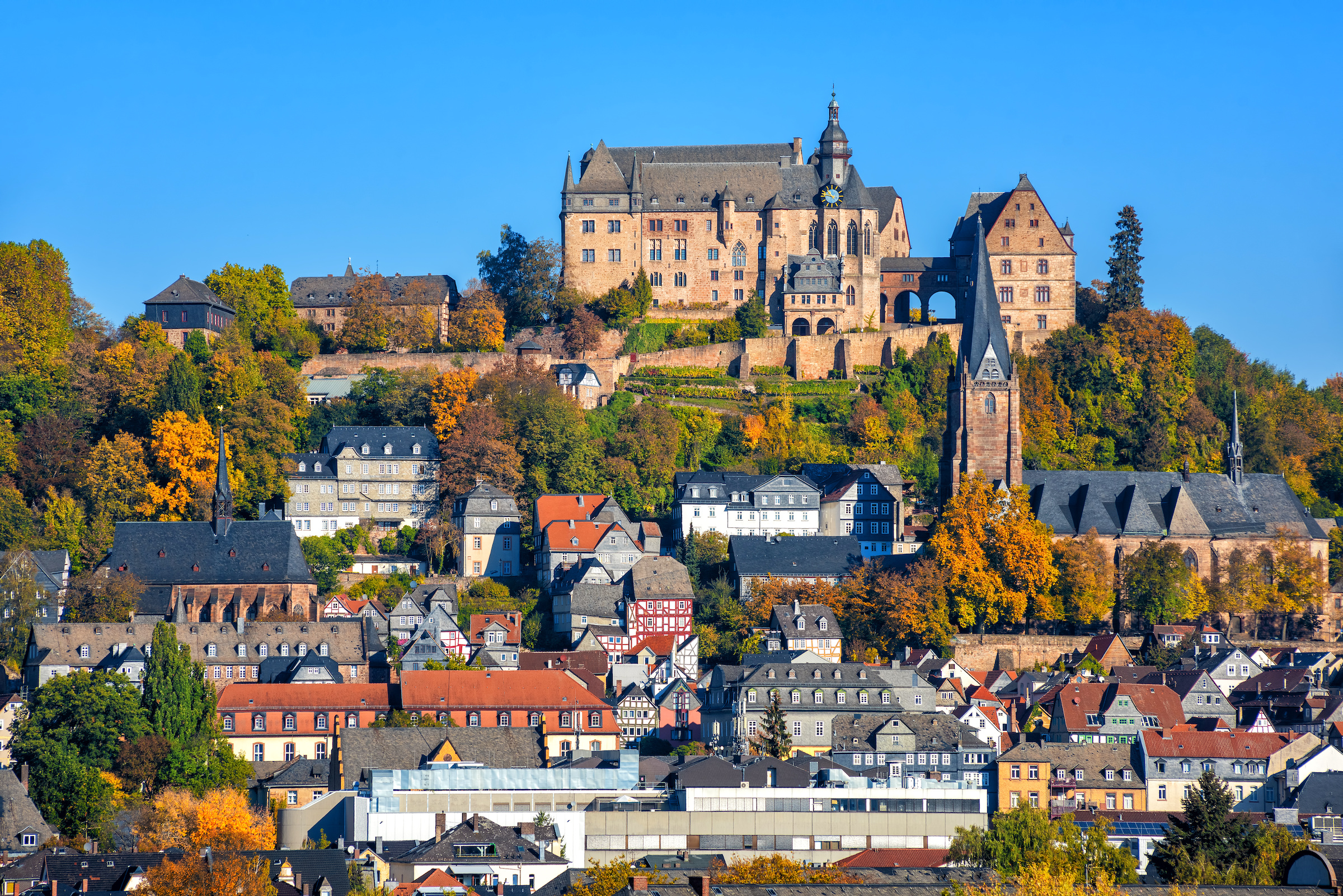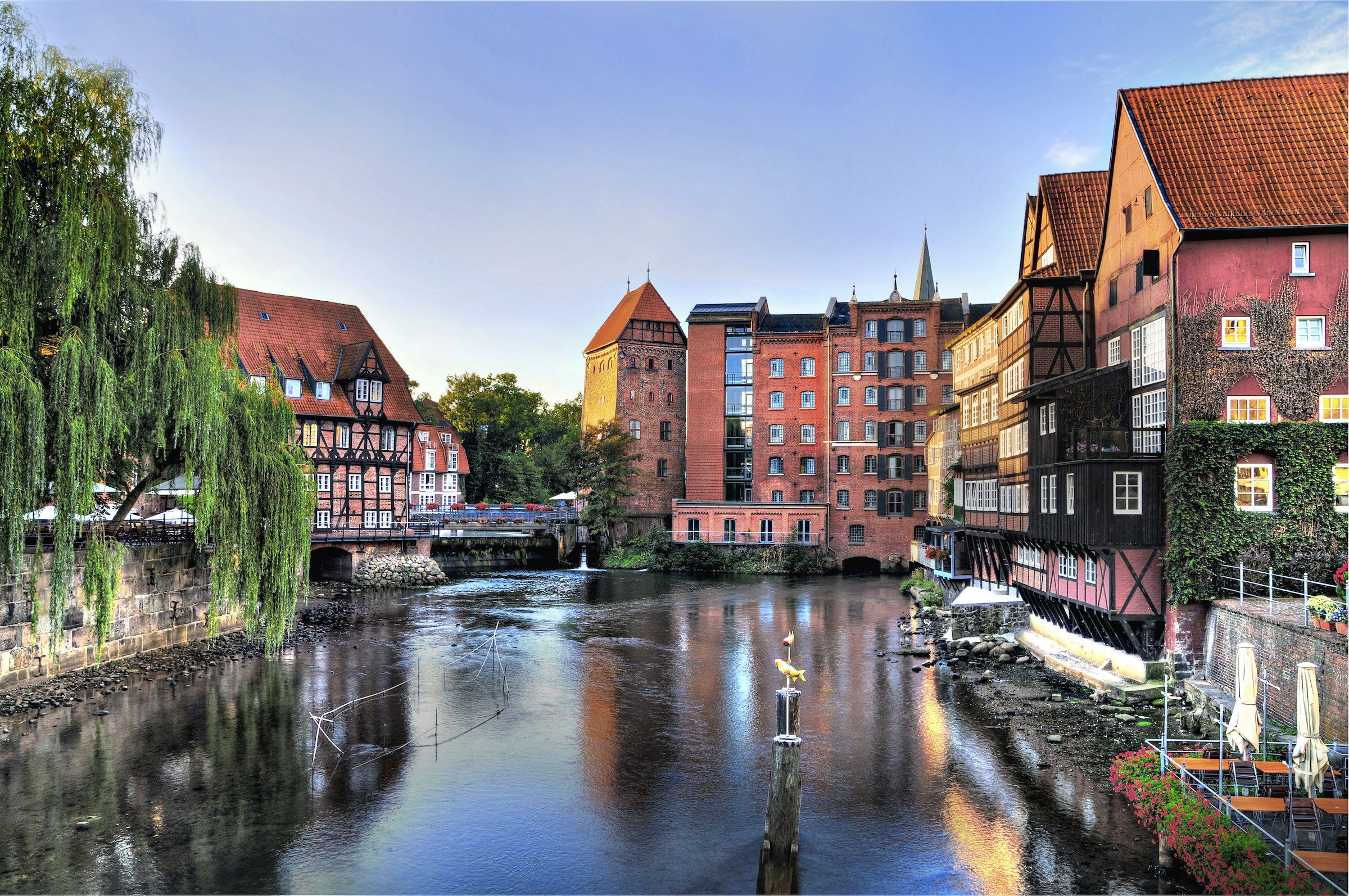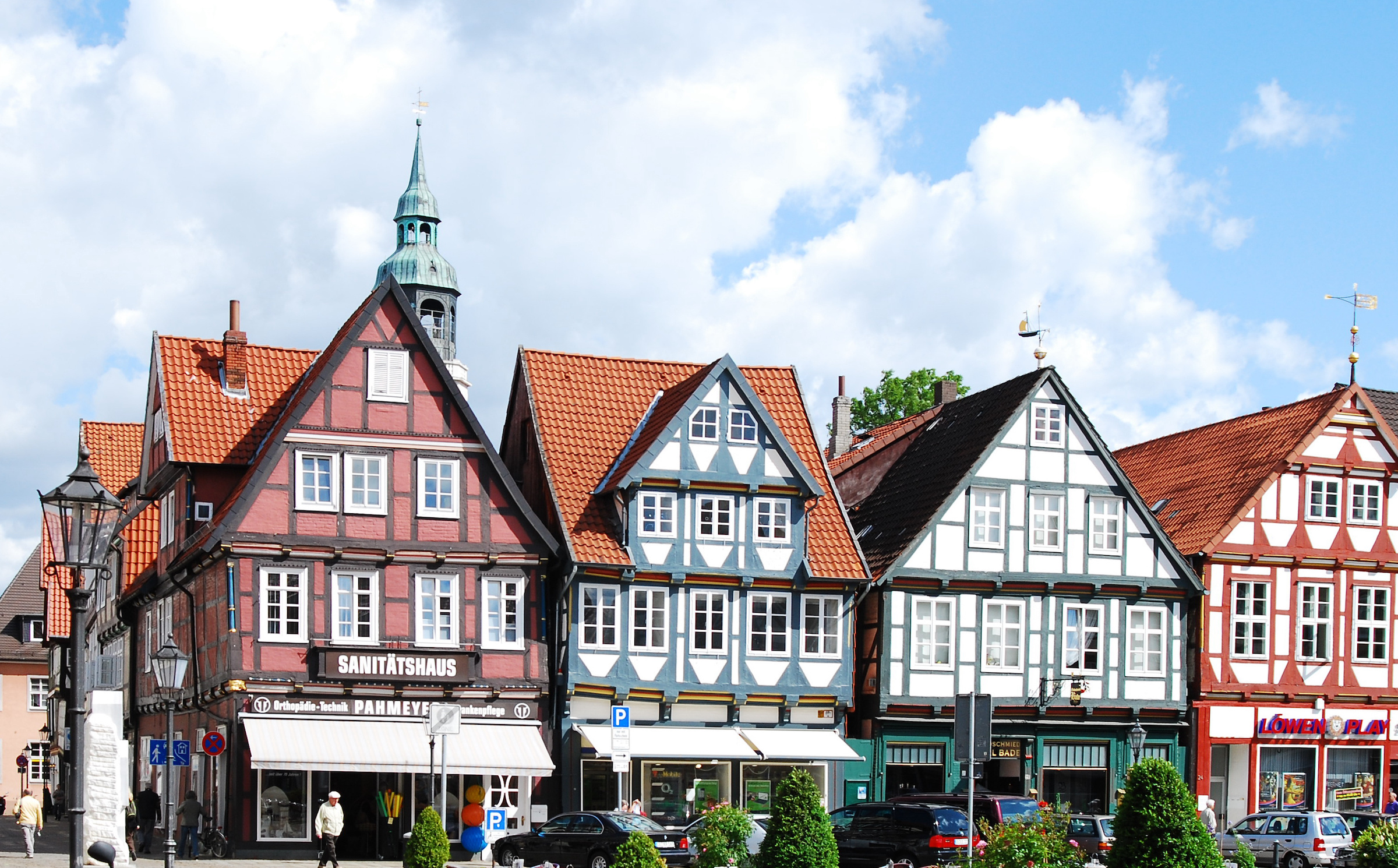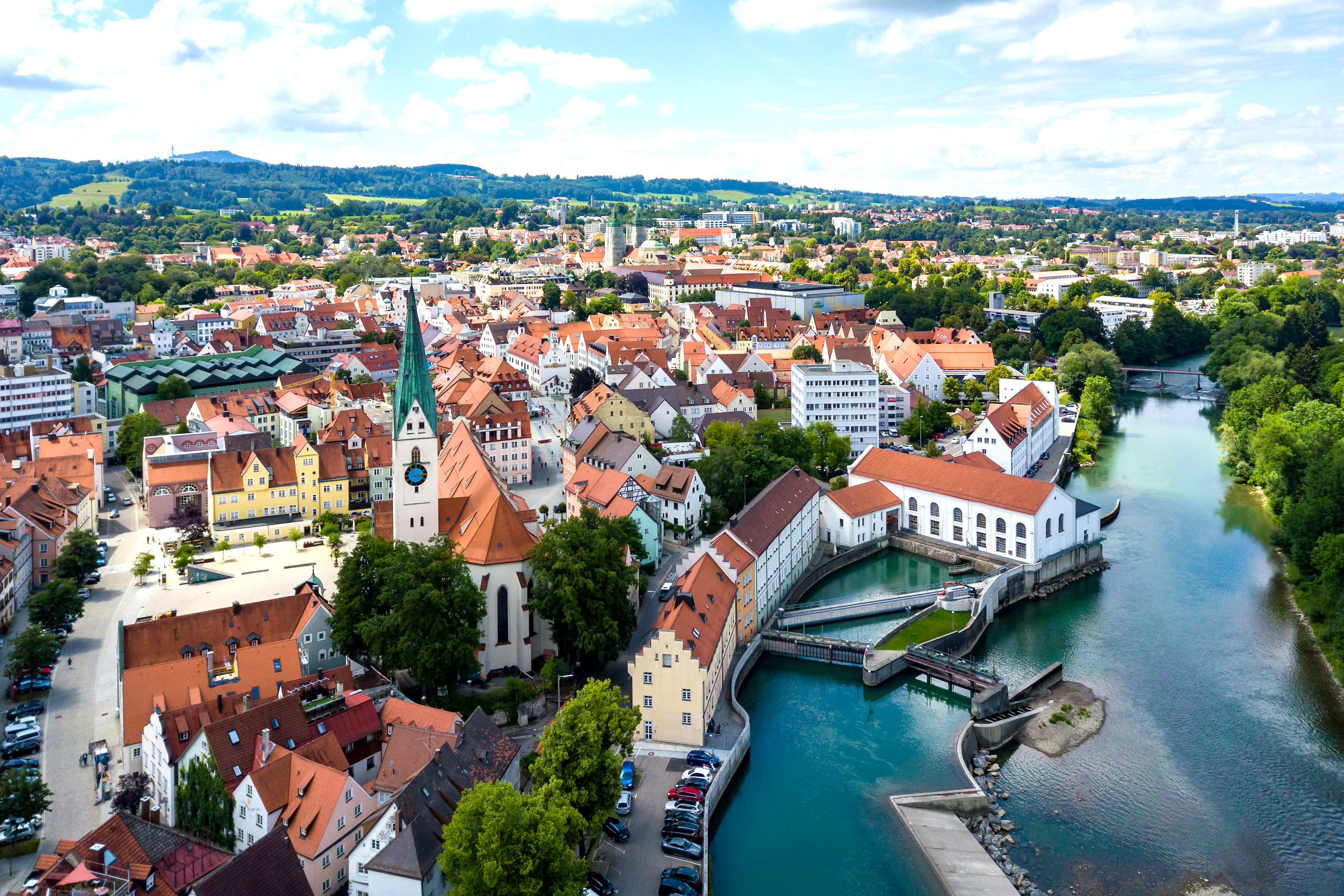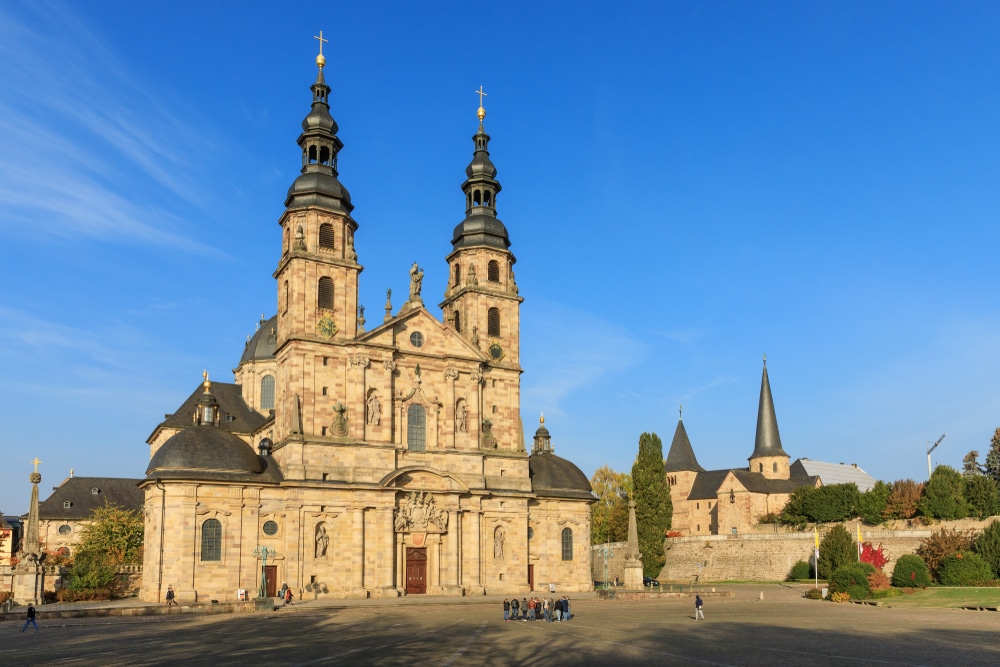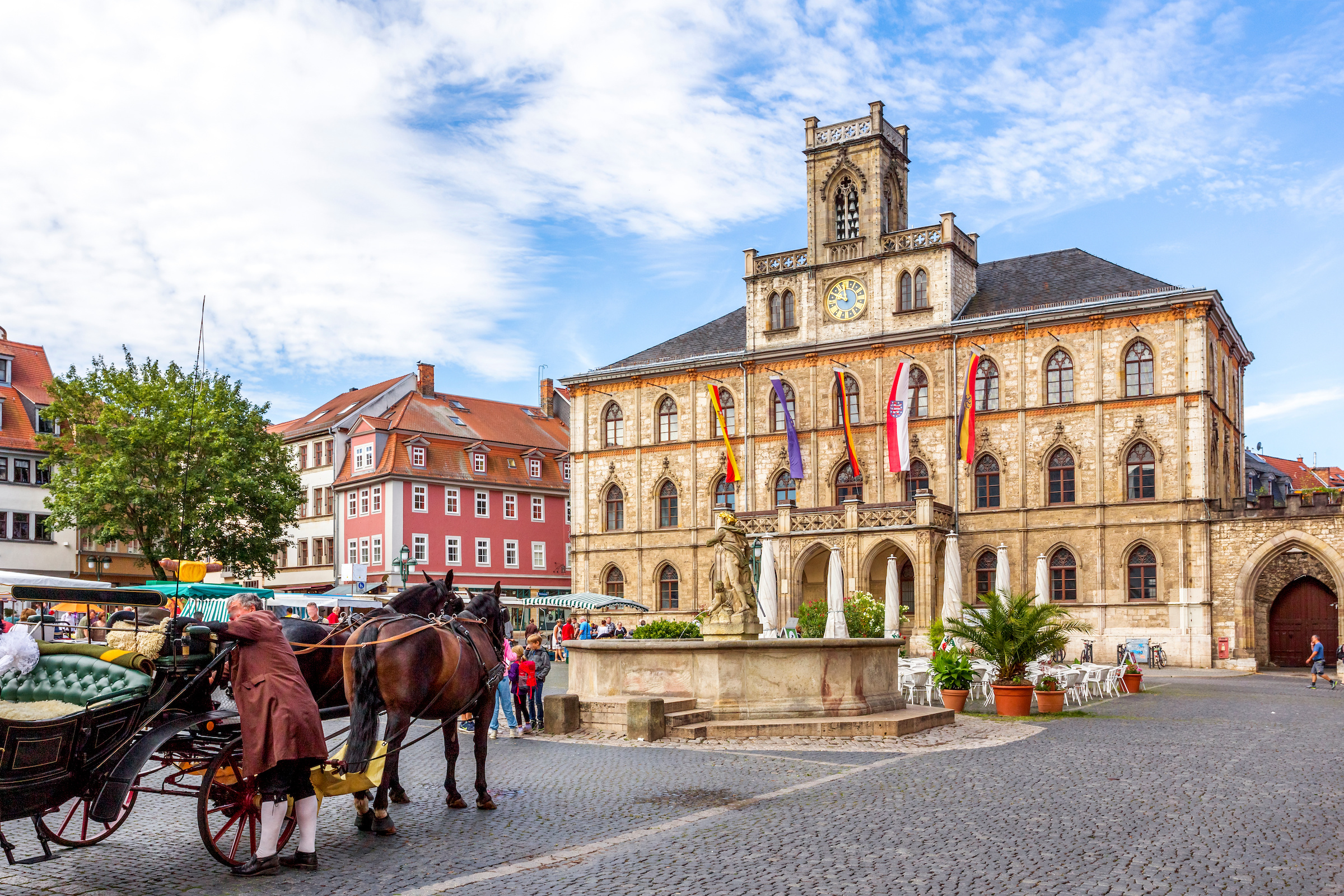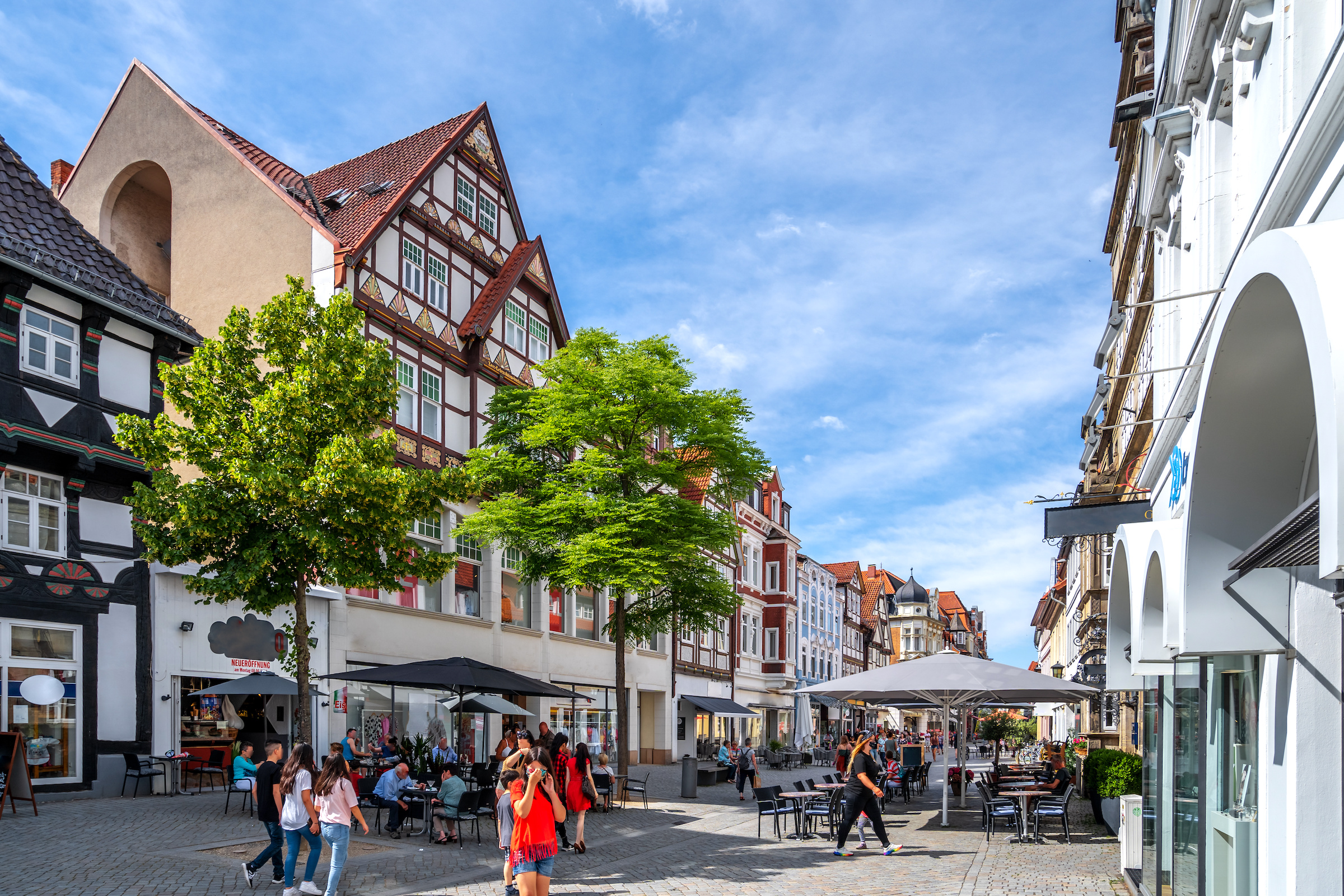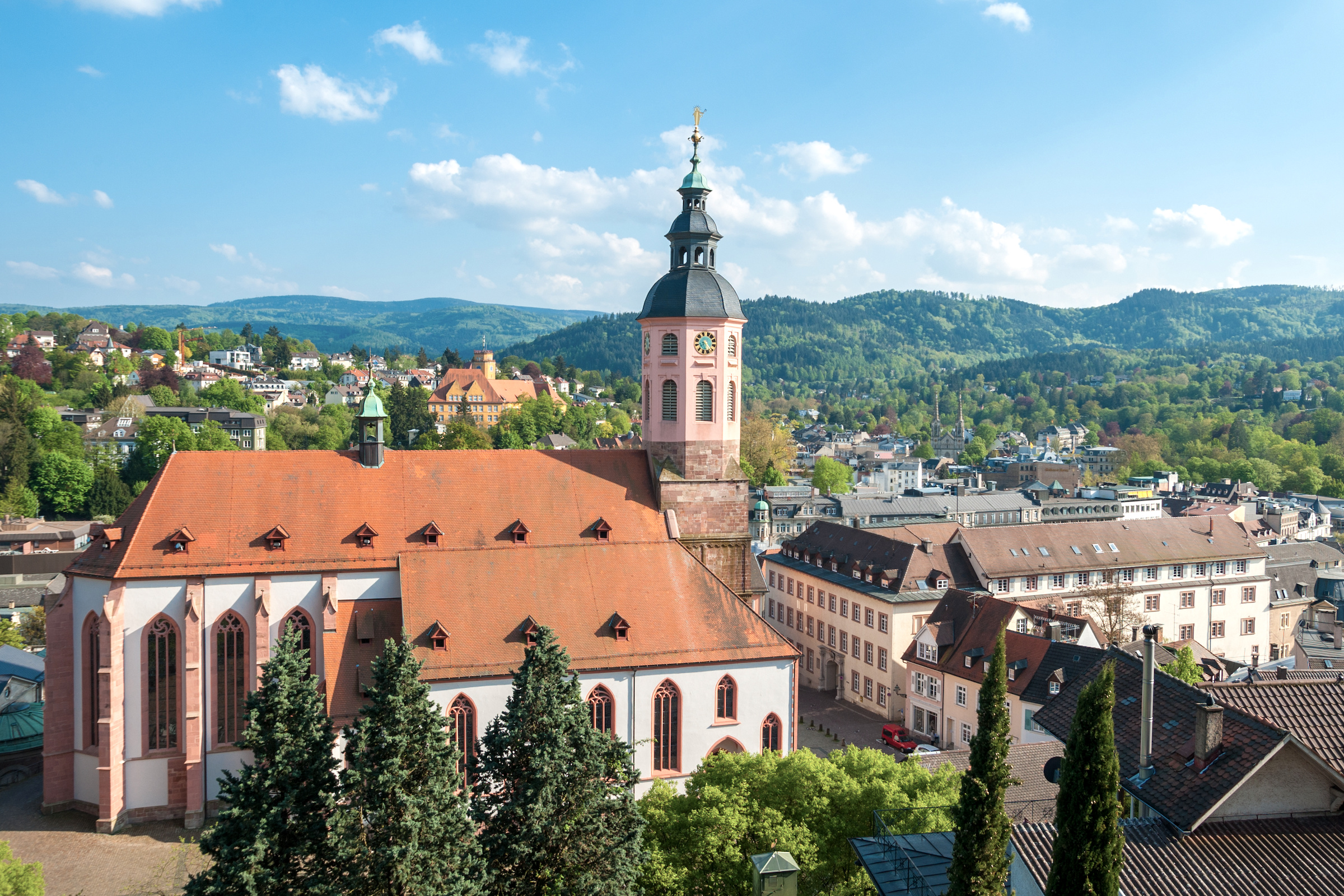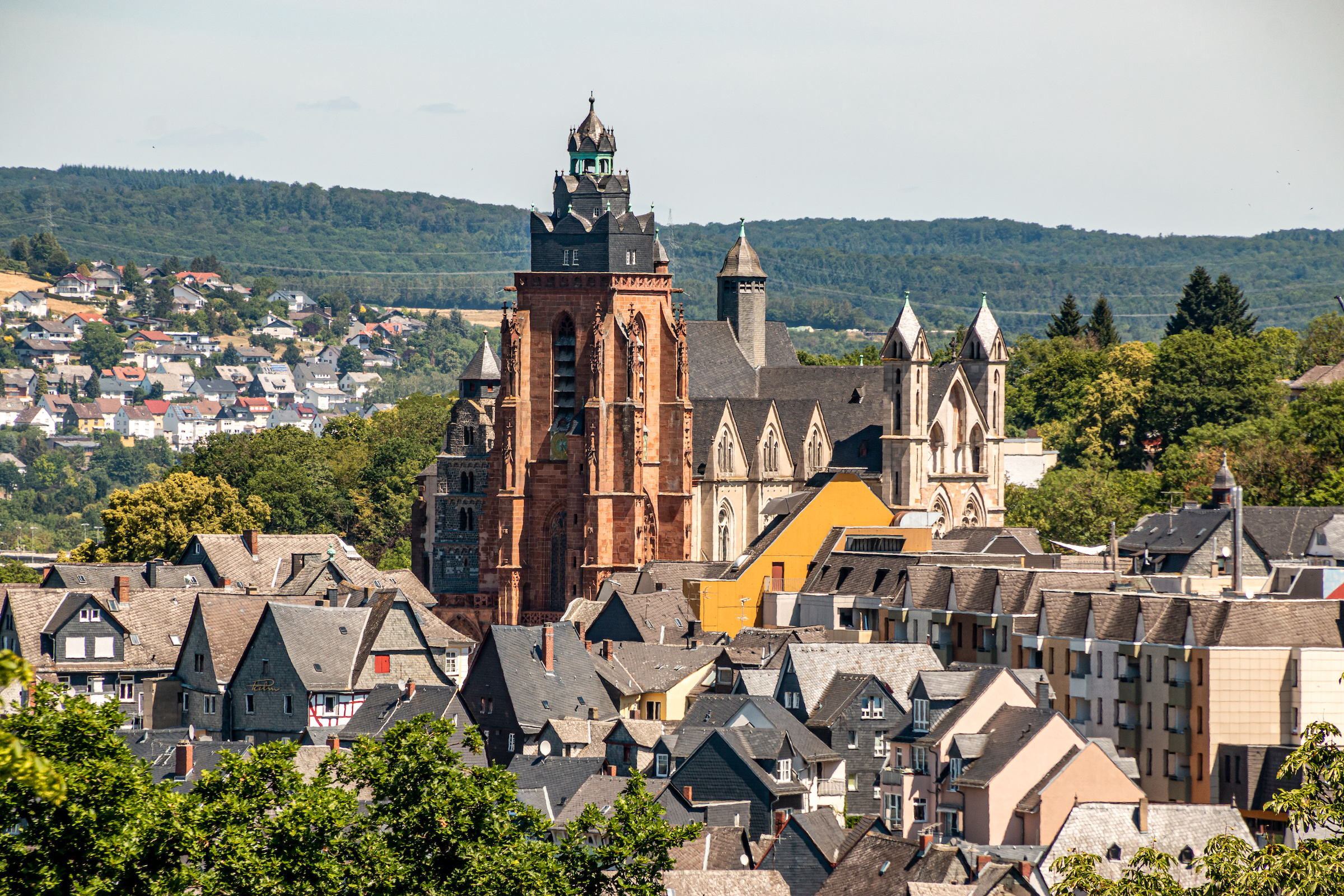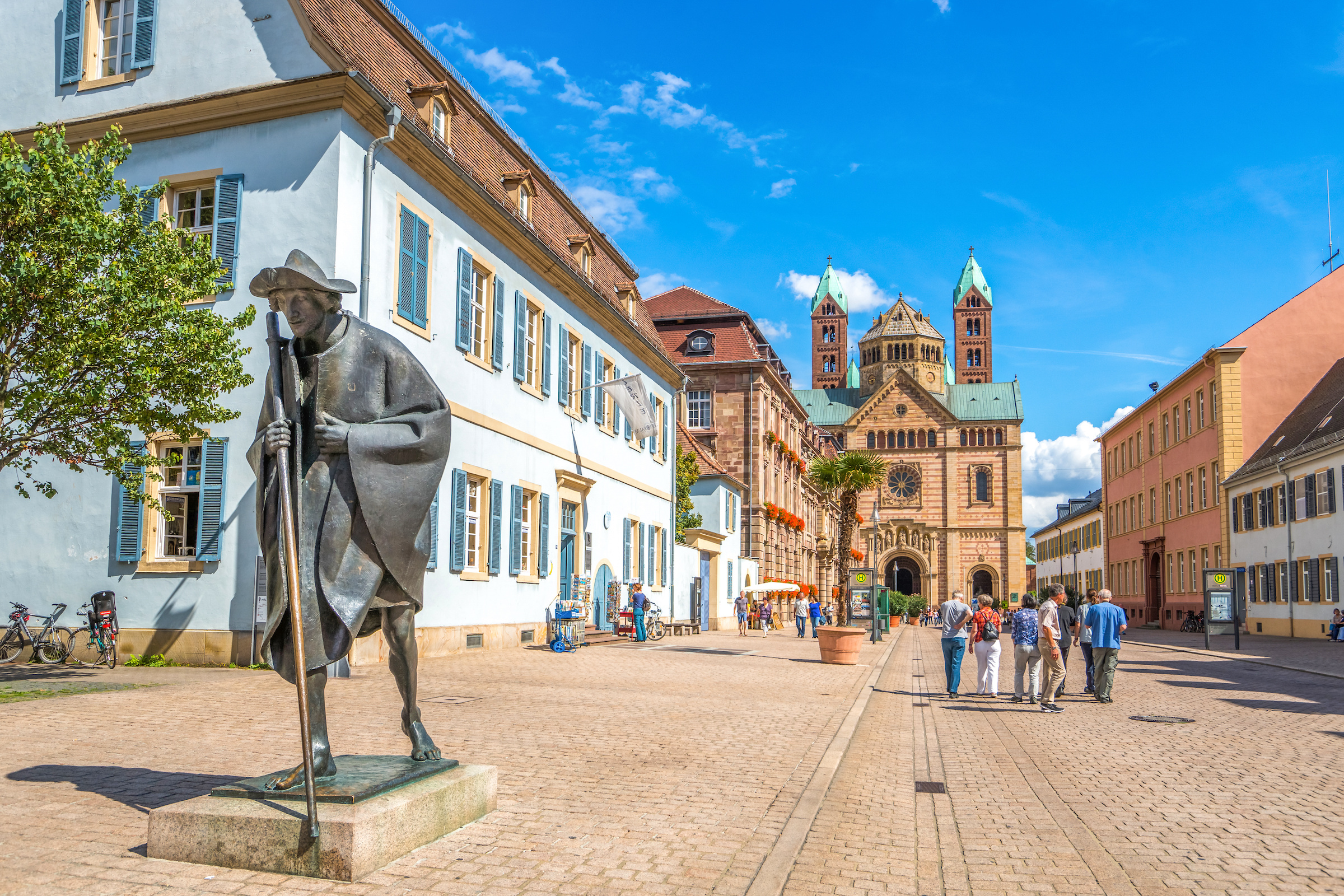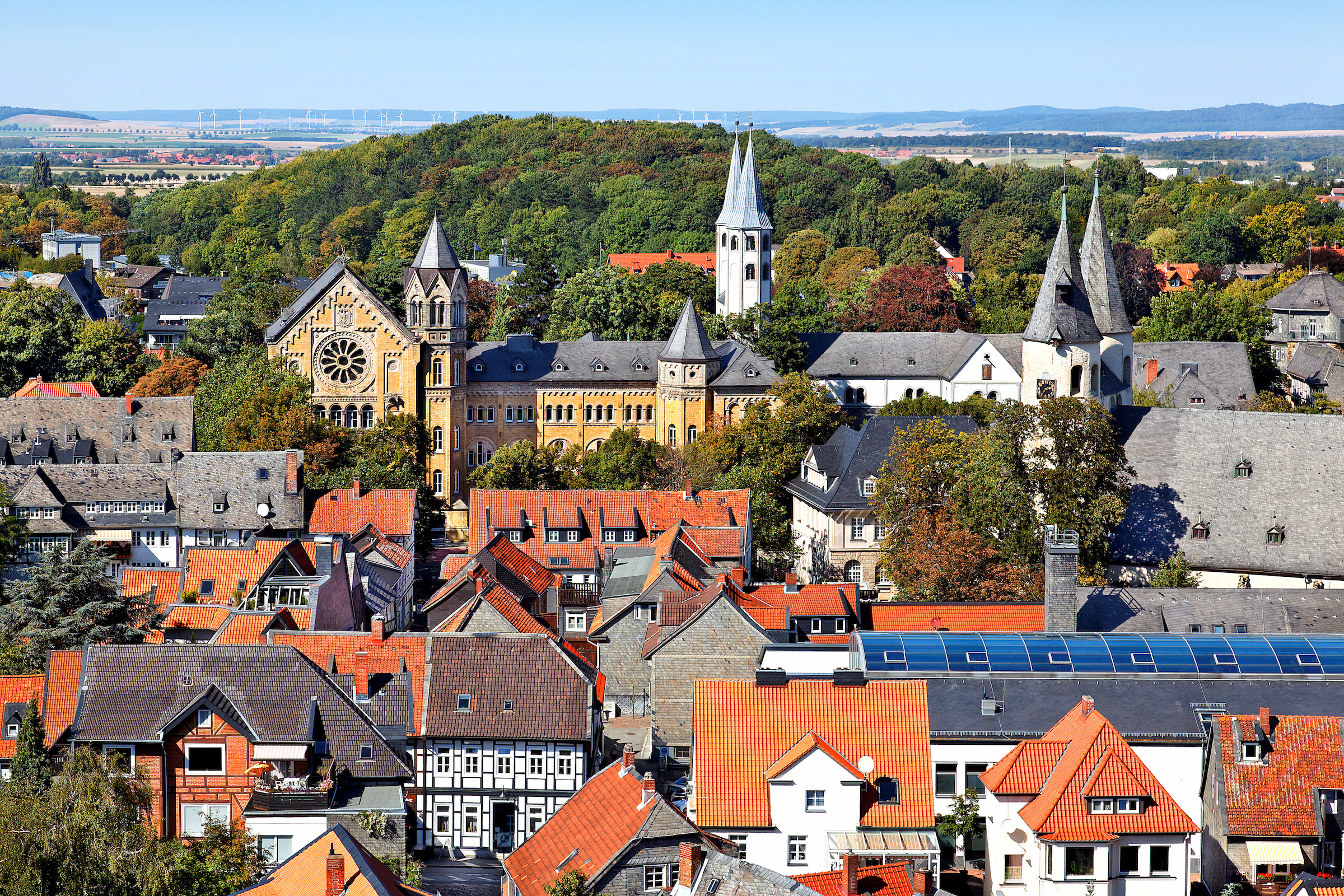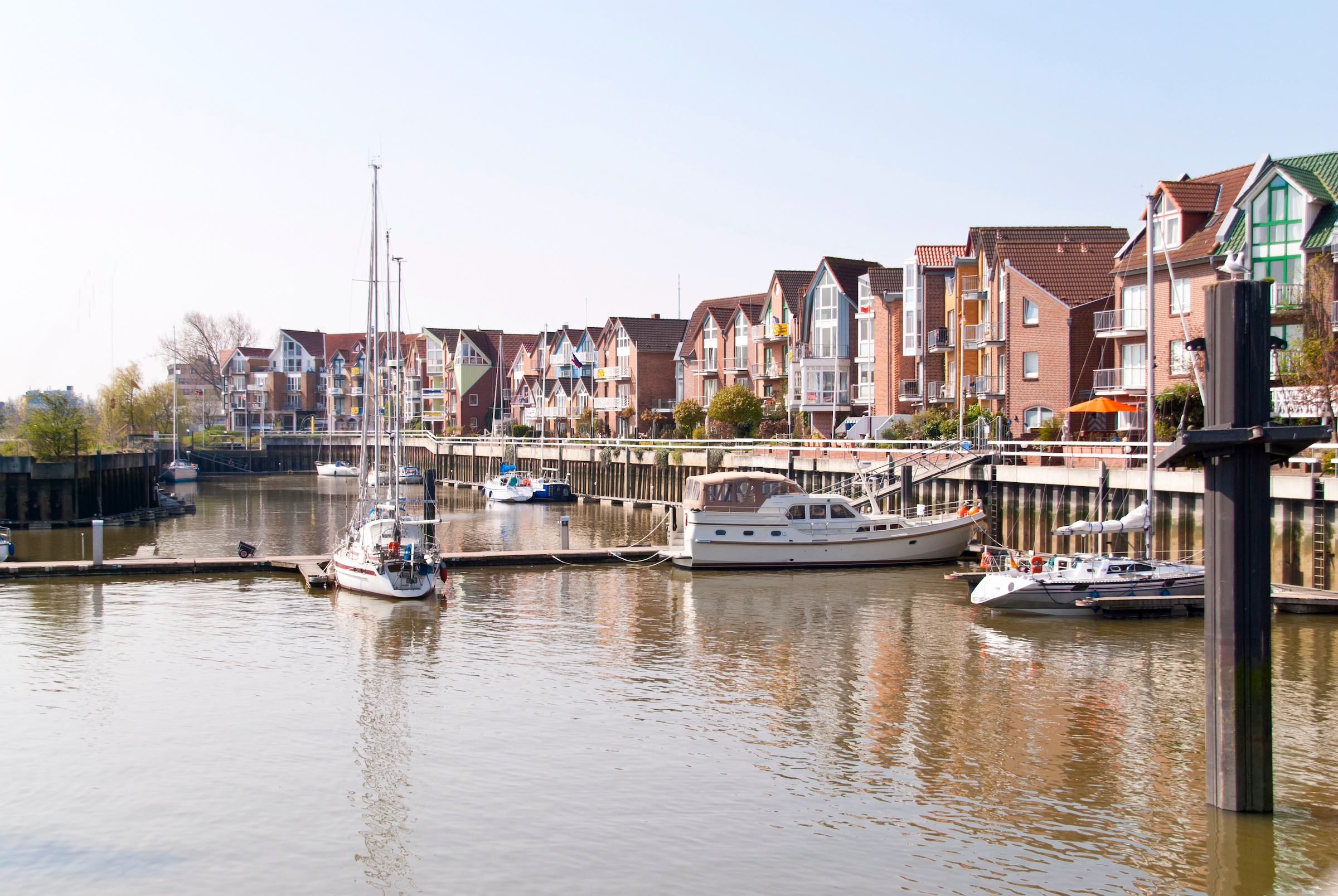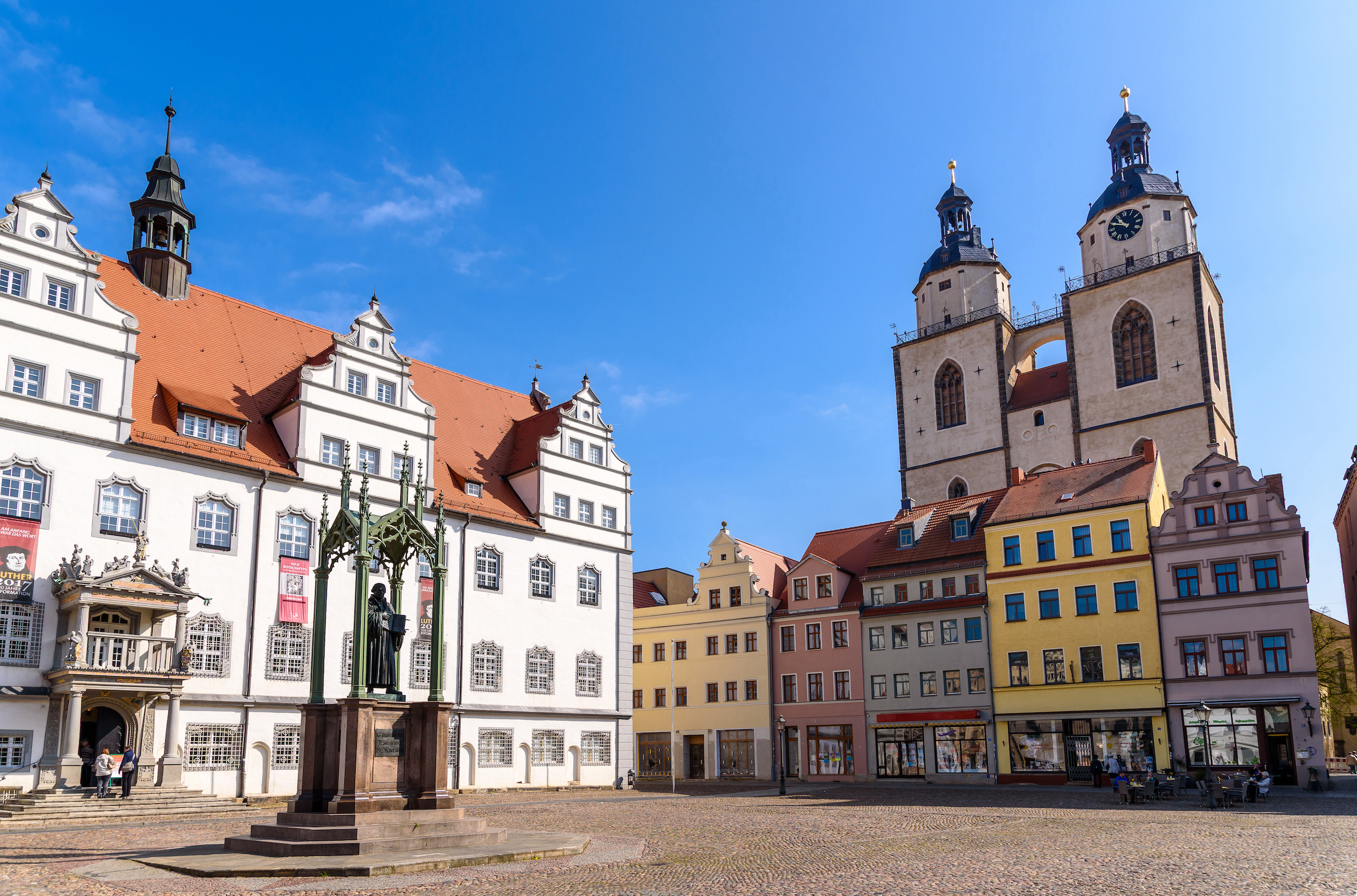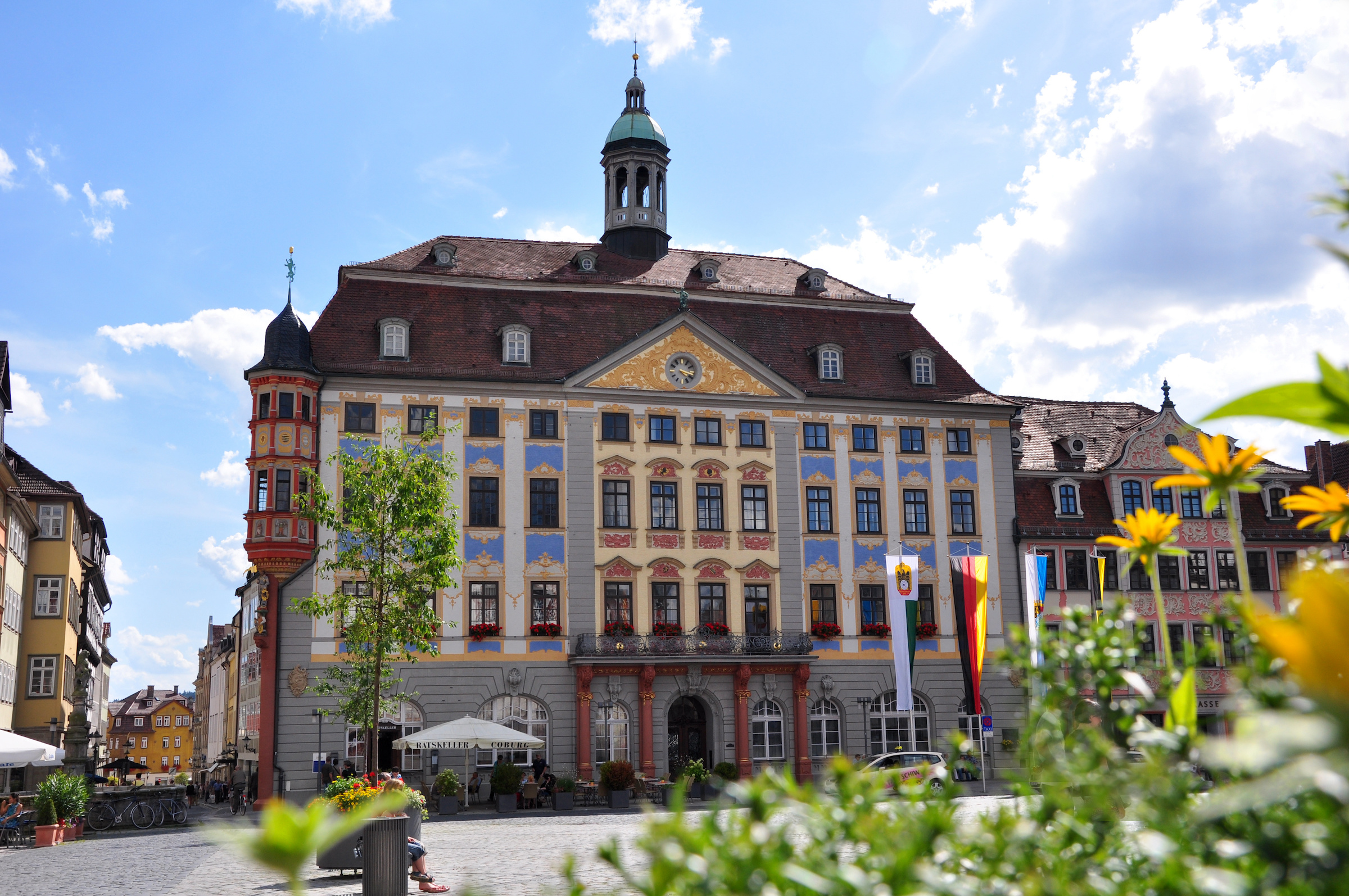På den här sidan hittar du de 100 största städerna i Tyskland efter invånarantal.
01
Berlin ist die Hauptstadt Deutschlands. Als kulturelles und politisches Zentrum bietet die Stadt zahlreiche Sehenswürdigkeiten wie das Brandenburger Tor, den Fernsehturm und die Überreste der Berliner Mauer. Berlin ist bekannt für seine lebendige Kunst- und Musikszene, seine geschichtsträchtigen Orte und sein vielfältiges kulinarisches Angebot. Mit seiner ...
02
Hamburg, die zweitgrößte Stadt Deutschlands, liegt im Norden des Landes und ist geprägt von seinem Hafen, einem der größten Seehäfen der Welt. Besucher können die Speicherstadt, ein UNESCO-Weltkulturerbe, oder die moderne Elbphilharmonie besichtigen. Hamburg hat auch eine lebendige Theater- und Musikszene und bietet eine Vielzahl ...
03
Wenn es das Prädikat „gemütliche Großstadt“ gäbe, dann wäre München wohl die erste Metropole, der dieses Siegel verliehen würde. Hier vereinen sich bayerische Herzlichkeit, bodenständige und mediterrane Gastronomie, Kunstschätze aus mehreren Jahrhunderten und eine einzigartige Architektur. Zu den wichtigsten Sehenswürdigkeiten ...
04
Köln liegt im Westen Deutschlands und ist vor allem für seinen beeindruckenden Dom bekannt, eine der größten Kathedralen der Welt. Die Stadt am Rhein hat eine lange Geschichte, die bis in die Römerzeit zurückreicht, und bietet eine Vielzahl an Museen, Galerien und historischen Sehenswürdigkeiten. ...
Im Herzen des Landes liegt Frankfurt, das oft als Finanzzentrum Deutschlands bezeichnet wird. Die Skyline der Stadt mit ihren Wolkenkratzern ist einzigartig in Deutschland. Besucher können den historischen Römer, das Goethehaus oder das Städel-Museum besichtigen. Frankfurt ist ein wichtiger Verkehrsknotenpunkt und mit seinem internationalen Flughafen das Tor ...
Stuttgart, die Hauptstadt des Bundeslandes Baden-Württemberg, liegt im Südwesten Deutschlands. Die Stadt ist als Geburtsort des Automobils bekannt und beherbergt die Museen von Mercedes-Benz und Porsche. Darüber hinaus ist Stuttgart geprägt von einer hügeligen Landschaft, Weinbergen und historischen Gebäuden wie dem Alten und dem ...
Düsseldorf liegt am Rhein und ist die Hauptstadt des Bundeslandes Nordrhein-Westfalen. Die Stadt ist sowohl für ihre Modeindustrie als auch für ihre Kunst mit zahlreichen Galerien und Museen bekannt. Die Königsallee, auch "Kö" genannt, ist eine der luxuriösesten Einkaufsstraßen Europas. Die Altstadt bietet viele ...
08
Für viele gilt Leipzig als das "neue" Berlin: Jung, hip, alternativ. Gleichzeitig hat die Stadt im Bundesland Sachsen viel Geschichtliches zu bieten: Einen schönen historischen Stadtkern mit Altem Rathaus im Renaissancestil erbaut, der Thomaskirche mit der Grabstätte von Johann Sebastian Bach und die Nikolaikirche als Treffpunkt der ...
09
Dortmund, im Westen Deutschlands im Herzen des Ruhrgebiets gelegen, ist eine Stadt mit reicher Industriegeschichte. Der U-Turm, ein ehemaliges Brauereigebäude, ist heute ein Zentrum für Kunst und Kreativität und bietet einen Panoramablick über die Stadt. Fußballfans kennen und lieben das Stadion Signal Iduna Park, Heimat des ...
10
Die ehemalige Kohle und Stahlmetropole Essen präsentiert sich ihren Gästen überraschend naturnah. Sie gilt als drittgrünste Stadt Deutschland und wurde 2017 von der EU mit dem Titel „Grüne Hauptstadt Europas“ ausgezeichnet. Neben dem Grugapark, dem Baldeneysee und der ber&...
11
Bremen ist nicht nur eine alte Hansestadt sondern auch das kleinste Bundesland Deutschlands. Die Stadt verfügt über ein reiches maritimes Erbe, das sich im Weserhafen und im beeindruckenden Bremer Rathaus widerspiegelt, das von der UNESCO zum Weltkulturerbe erklärt wurde. Ein Spaziergang durch das historische Schnoorviertel vermittelt einen Einblick ...
12
Die Landeshauptstadt von Sachsen ist ein Muss für alle Kulturfans und ein Gesamtkunstwerk. Herzstück dieses Kunstwerkes ist die Frauenkirche, die wie die weite Teile der Innenstadt nach der Zerstörung im Zweiten Weltkrieg wieder aufgebaut wurde. Aber auch die Semperoper – sie gilt als eines der schönsten Opernhä...
13
Die norddeutsche Landeshauptstadt Hannover ist ein kulturelles und historisches Zentrum. Besonders bekannt sind die Herrenhäuser Gärten, ein prachtvolles Barockensemble, und der zentrale Maschsee. Sehenswert sind auch das imposante Neue Rathaus und die reizvolle Altstadt mit ihren Fachwerkhäusern. Als Austragungsort bedeutender internationaler Messen wie der Hannover Messe verbindet ...
Nürnberg liegt im Bundesland Bayern und ist vor allem für seine mittelalterliche Architektur bekannt. Zu den wichtigsten Sehenswürdigkeiten gehören die Nürnberger Burg, der Hauptmarkt mit dem Schönen Brunnen und der alljährliche Christkindlmarkt. Historische Bedeutung erlangte die Stadt auch durch die Nürnberger Prozesse ...
15
Duisburg verbindet die Regionen Ruhrgebiet und Niederrhein. Ihre Bewohner bezeichnen sie gerne als Stadt von „Wasser und Feuer“. Hier brennen noch heute gewaltige Hochöfen und machen sie zum wichtigsten Stahlstandort Europas. Gleichzeitig besitzt Duisburg den größten Binnenhafen der Welt. Die Eindrücke bei einer interessanten Hafenrundfahrt solltest Du ...
16
Im Jahr 1984 besang Herbert Grönemeyer mit „Tief im Westen“ seine einstige Heimat Bochum. Mittlerweile stellt das Lied die inoffizielle Hymne der Stadt dar. Der Songtext charakterisiert die frühere Arbeitersiedlung eindringlich und ehrlich. Der besungene „Pulsschlag aus Stahl“ und das „Grubengold“ beziehen sich auf die Stahlproduktion sowie die reiche ...
Die „Hauptstadt des Bergischen Landes“ ist weltbekannt für ihre einzigartige Schwebebahn. Mit ihr erreichst Du alle Geschäfte und Sehenswürdigkeiten Wuppertals. Daneben bietet Dir eine solche Fahrt ganz neue Perspektiven auf die sogenannte „grüne Großstadt“ an der Wupper. Der Ort verfügt über eine lebendige Kunst- ...
Die „kleine Großstadt“ liegt zwischen den Höhenzügen des Teutoburger Waldes und der Münsterländer Bucht im Nordosten des Bundeslandes Nordrhein-Westfalen. Vom einem der höchsten Punkte, der Sparrenburg, genießt Du einen weiten Blick über die Stadt. Zur Entspannung bietet sich ein Spaziergang im Heimat-Tierpark Olderdissen ...
19
In der ehemaligen Hauptstadt Deutschlands ist noch immer internationales Flair zu spüren. Nach dem Regierungsumzug blieb Bonn der Sitz zahlreicher Ministerien und bedeutender Organisationen wie der UNO. Deren Mitarbeiter – und viele Studierende – prägen heute das Bild der jungen Stadt. Bonn besitzt eine Vielzahl hochrangiger Museen und Ausstellungen wie ...
20
Münster liegt im Westen Deutschlands im Bundesland Nordrhein-Westfalen und ist bekannt für seine historische Altstadt und den beeindruckenden St.-Paulus-Dom. Die Stadt wird oft als "Fahrradhauptstadt" Deutschlands bezeichnet, da Radfahren hier besonders beliebt ist. Ein weiteres Highlight ist das historische Rathaus, in dem der Westfälische Friede geschlossen ...
Karlsruhe liegt im Südwesten Deutschlands und ist als Fächerstadt bekannt, da die Straßen wie die Speichen eines Fächers vom Karlsruher Schloss ausgehen. Das prächtige Barockschloss mit seinem weitläufigen Schlossgarten ist das Herz der Stadt und eine ihrer Hauptattraktionen. Ein weiterer Anziehungspunkt ist das ZKM (...
22
Mannheim liegt im Südwesten Deutschlands im Bundesland Baden-Württemberg. Die Stadt wird auch "Quadratestadt" genannt, da der Grundriss der Innenstadt einem Schachbrett ähnelt. Zu den wichtigsten Sehenswürdigkeiten zählen das Mannheimer Barockschloss, eine der größten Schlossanlagen Europas, und der Wasserturm, ein beeindruckender Jugendstilbau. Der Zusammenfluss von Rhein ...
23
Augsburg ist die drittgrößte und vermutlich älteste Stadt Bayerns, deren Ursprünge auf die römische Siedlung „Augusta Vindelicum“ zurückgehen. Als unabhängige Reichsstadt erlangte Augsburg im 13. Jahrhundert große Macht, begünstigt durch den immensen Reichtum der Patrizierfamilien Fugger und Welser. Dieser Wohlstand ermöglichte den Bau ...
Wiesbaden, malerisch zwischen Taunus und Rhein gelegen, blickt auf eine lange Geschichte zurück, in der heiße Quellen schon immer eine zentrale Rolle spielten. Im 19. Jahrhundert entwickelte sich die Stadt zu einem der bedeutendsten Kurorte Europas, in dem sich der europäische Adel ebenso erholte wie Künstler und ...
Ganz im Westen Deutschlands und Nordrhein-Westfalens liegt Mönchengladbach. Hier erwartet Dich eine lebendige Altstadt mit zahlreichen hübschen Cafés und schicken Lokalen. Ob Du gut Essen, gemütlich plaudern oder ausgelassen feiern möchtest – alles ist möglich und leicht zu Fuß zu erreichen. So steht einem entspannten ...
Die Stadt im Herzen des Ruhrgebietes lebt und atmet Fußball. Am FC Schalke 04 führt hier kaum ein Weg vorbei. So entdeckst Du den modernsten „Fußballtempel“ Europas, die Arena. Eine Besichtigung lohnt sich nicht nur für Schalke-Fans. Der Verein steht auch für die Bergbautradition der Stadt. ...
Braunschweig gehört aus gutem Grund zu den schönsten Städten Niedersachsens. Die zahlreichen Parks sind Oasen der Ruhe und der historische Stadtkern ist geprägt von geschichtsträchtigen Bauwerken und restaurierten Fachwerkhäusern. Am malerischen Burgplatz findest Du mit dem Löwen und dem Dom gleich beide Wahrzeichen ...
28
Aachen liegt im Dreiländereck Deutschland-Belgien-Niederlande und ist die westlichste Großstadt Deutschlands. Die Stadt ist berühmt für den Aachener Dom, ein UNESCO-Weltkulturerbe, das einst als Pfalzkapelle Karls des Großen gegründet wurde. Als Sitz der renommierten Rheinisch-Westfälischen Technischen Hochschule (RWTH) ist Aachen auch eine bedeutende ...
29
Von der einst malerischen Hafenstadt haben die Bomben des Zweiten Weltkrieges nicht viel übrig gelassen und doch ist Kiel einen Besuch wert: Die Landeshauptstadt Schleswig-Holsteins ist das kulturelle Zentrum der Region und kommt mit vielen abwechslungsreichen Museen daher. Zudem lädt die bevölkerungsreichste Stadt des Bundeslandes mit mehreren Einkaufszentren ...
30
Chemnitz ist vielen noch unter der Bezeichnung Karl-Marx-Stadt bekannt. Erst 1990 erhielt die sächsische Industriestadt ihre frühere Bezeichnung Chemnitz zurück. Im 19. Jahrhundert wurde Chemnitz als „sächsisches Manchester“ bezeichnet und galt als Zentrum der Textilindustrie. Heute ist Chemnitz ein führender Technologiestandort.
Auf dem Weg zur Kulturhauptstadt Europas 2025 ...
Halle an der Saale ist die größte Stadt des Bundeslandes Sachsen-Anhalt und Geburtsstadt des Komponisten Georg Friedrich Händel. Vor der deutschen Wiedervereinigung war die Stadt im "Chemiedreieck" der DDR vor allem ein Industriestandort. Heute präsentiert sich die alte Universitätsstadt als ein kulturelles und touristisches Zentrum der ...
Magdeburg ist die Hauptstadt des Bundeslandes Sachsen-Anhalt. Bereits im Jahre 805 wurde die Stadt an der Elbe erstmals urkundlich erwähnt, 926 wurde sie Kaiserpfalz von Otto I. Mit 13 Prozent Grünfläche zählt Magdeburg mit zu den grünsten Städten in Deutschland. Mehrere Stadtparks laden zum Spazieren oder Verweilen ...
Freiburg im Breisgau, im Südwesten Deutschlands am Rande des Schwarzwaldes gelegen, ist bekannt für seine malerische Altstadt und das beeindruckende gotische Münster. Die Bächle, kleine Wasserläufe, die durch die Straßen fließen, verleihen der Stadt einen einzigartigen Charme. Mit seiner nachhaltigen Stadtplanung und den ...
34
Das niederrheinische Krefeld nennt sich aufgrund der hier ansässigen Seidenstoffproduktion gerne „Samt- und Seidenstadt“. Die Fertigung hochwertigen Textilien machte Krefeld im 19. Jahrhundert zu einem der reichsten Orte im damaligen Preußen. Noch heute ist davon viel zu spüren. Die „Seidenbarone“ förderten die Kunst und investierten in Architektur ...
35
Mainz, am westlichen Ufer des Rheins in Rheinland-Pfalz gelegen, ist eine geschichtsträchtige Stadt mit römischem Erbe. Die Mainzer Altstadt lockt mit verwinkelten Gassen, dem beeindruckenden Mainzer Dom und zahlreichen historischen Gebäuden. Die Gutenberg-Stadt, Heimat des Erfinders der Buchdrucks, beherbergt das Gutenberg-Museum, das die Entwicklung des Buchdrucks zeigt. ...
36
Lübeck, im Norden Deutschlands an der Ostsee gelegen, prägte als führende Hansestadt das mittelalterliche Europa. Die von Wasser umgebene Altstadt wurde von der UNESCO zum Weltkulturerbe erklärt. Das Wahrzeichen Holstentor und die Backsteingotik zeugen von der reichen Geschichte Lübecks. Neben den kulturellen Schätzen ist ...
37
Erfurt liegt im Herzen Deutschlands in Thüringen und ist bekannt für seine gut erhaltene mittelalterliche Architektur. Die Krämerbrücke, die älteste mit Häusern bebaute und bewohnte Brücke nördlich der Alpen, ist eines der Wahrzeichen der Stadt. Der imposante Erfurter Dom und die Severikirche überragen ...
Das niederrheinische Oberhausen trägt stolz den Beinamen „Wiege der Ruhrindustrie“. Bereits 1758 nahm auf dem heutigen Stadtgebiet eine Eisenhütte ihren Betrieb auf. Heute steht der Ort mit seiner „Neuen Mitte“ für den gelungenen Strukturwandel im „Pott“. Neben dem Schloss Oberhausen, einem beeindruckenden klassizistischen Bau, findest Du viele umgestaltete ...
39
Die größte Stadt Mecklenburg-Vorpommerns ist lebendig und kontrastreich: große Straßenachsen, moderne Bauten, enge Gassen, gotische Backsteinbauten, Patrizierhäuser wie das Kerkhoffhaus, ein Stadthafen und über allem der Hauch der fernen Welt, die im 14 Kilometer entfernten Hafen von Warnemünde beginnt. Bis heute prägt die Hansezeit das ...
40
Nach Frankfurt und Wiesbaden ist Kassel die drittgrößte Stadt Hessens. Als Heimat von mehr als 200.000 Einwohnern gehört die nordhessische Stadt zu den besuchenswerten Reisezielen des Bundeslandes. Dafür sorgen auch kulturelle Highlights wie das UNESCO-Weltkulturerbe Bergpark Wilhelmshöhe, in dem das gleichnamige Schloss zu entdecken ist. Neben den ...
41
Die südwestfälische „Stadt der Fernuniversität“ gilt als das Tor zum Sauerland. Neben der Hochschule prägen zahlreiche Gartenanlagen, Parks und Gewässer ihr Ortsbild. Vier größere Flüsse durchziehen die Stadt und laden zu Kanutouren oder Tretbootfahrten ein. Hagen und sein Umland gelten als bedeutende Fundregion ...
43
Potsdam ist die Landeshauptstadt von Brandenburg und liegt in der Nähe von Berlin. Die Stadt ist berühmt für ihr UNESCO-Weltkulturerbe, insbesondere für das Schloss Sanssouci und den dazugehörigen Park. Potsdam bietet eine Mischung aus historischer Architektur und beeindruckenden Gärten und war einst Residenz der ...
Ludwigshafen ist nach Mainz die zweitgrößte rheinland-pfälzische Stadt. Sie liegt gegenüber von Mannheim am linken Rheinufer, einst gehörten die beiden Städte zusammen. Bis 1840 war Ludwigshafen die Mannheimer Rheinschanze. Bekannt ist die Stadt heute als Heimat des ehemaligen Bundeskanzlers Helmut Kohl und als Sitz der BASF. ...
Die „Stadt am Fluss“ ist seit jeher eng mit der Ruhr verbunden. Mülheim musste als einer der ersten Standorte den Strukturwandel bewältigen, hier verschwanden die Zechen bereits in den 1960-er Jahren. So wandelte die Stadt früh ihr „Bergbaugesicht“ und beherbergt heute zahlreiche hochrangige Unternehmen aus Forschung, Produktion ...
Die kleine Stadt an der Hunte hat so viel zu bieten, dass man hier eine ganze Woche ohne Langweile verbringen kann. Mit dem Eisenbahn-Museum, dem Horst-Janssen-Museum und dem Museum der alten Ziegelei warten gleich drei Höhepunkte auf Dich. Der Maler Horst Janssen wuchs in Oldenburg auf. Seine Bilder sind ...
Osnabrück war einst die Stadt des Großhandels und ist bis heute das wirtschaftliche Zentrum der Region. Karl der Große war vor vielen Jahrhunderten so begeistert von der Stadt, dass er hier gleich ein Bistum gründete. Marienkirche und Dom bilden noch immer das Stadtbild und ziehen Touristen ...
Die relativ junge Stadt am Rhein kennen viele Menschen hauptsächlich als Standort der chemischen Industrie. Das „Bayer-Kreuz“ ist sichtbares Markenzeichen des gleichnamigen Konzerns und steht als größte Leuchtreklame der Welt im Guinnessbuch der Rekorde. Mit seinem „BayKomm“ Zentrum schaffte das Unternehmen durch interessante Veranstaltungen und Führungen eine ...
Heidelberg liegt im Südwesten Deutschlands am Neckar. Die malerische Altstadt mit der berühmten Alten Brücke und das hoch über der Stadt thronende Heidelberger Schloss ziehen jährlich zahlreiche Besucher an. Die 1386 gegründete Ruprecht-Karls-Universität ist die älteste Universität Deutschlands und prägt mit ihrem studentischen ...
Darmstadt ist nicht nur eine bedeutende Großstadt Hessens, sondern auch ein wichtiges ökonomisches und kulturelles Zentrum des Bundeslandes. Medien-, IT- und Pharmakonzerne fühlen sich hier genauso wohl wie Universitäten und Hochschulen sowie namhafte Kultureinrichtungen. Seit 2021 zählt die Mathildenhöhe in Darmstadt zum UNESCO-Weltkulturerbe. Hier warten mit ...
51
Die „Klingenstadt“ bildet das Zentrum der deutschen „Schneidwarenindustrie“. Etwa 90 Prozent unserer Besteckteile kommen aus dem Ort im Bergischen Land. Solingen besitzt mit der eindrucksvollen Höhenburg „Schloss Burg“ eine der hierzulande größten Anlagen ihrer Art. Einen Besuch dieser meisterhaft restaurierten Kulturstätte solltest Du nicht versäumen. Ein anderes ...
52
Neuss liegt am linken Niederrhein, auf der gegenüberliegenden Flussseite befindet sich Düsseldorf. Die Stadt zählt zu den ältesten Städten in Deutschland. Bereits 1984 konnte Neuss ihren 2000. Geburtstag feiern. Neuss ist bekannt für die gut erhaltenen Zeugnisse seiner römischen Vergangenheit sowie für den Rheinhafen, einem ...
Regensburg, am nördlichsten Punkt der Donau gelegen, ist eine der ältesten Städte Deutschlands, deren Geschichte bis in die Römerzeit zurückreicht. Das historische Zentrum ist UNESCO-Weltkulturerbe und beeindruckt mit mittelalterlichen Bauwerken wie dem Dom St. Peter und der Steinernen Brücke. Mit seiner einzigartigen Mischung aus Geschichte, ...
Paderborn liegt im Osten des Bundeslandes Nordrhein-Westfalen. In der Stadt findest Du besonders viele Sehenswürdigkeiten, die Du besichtigen kannst. In der Innenstadt gibt es mehr als zwanzig historische Gebäude zu entdecken. Besonders bekannt sind der Dom, das Wahrzeichen von Paderborn, das prächtige Rathaus mit der dreigiebligen Fassade ...
Die kreisfreie Großstadt beiderseits der Donau ca. 80 Kilometer nördlich von München ist mit aktuell fast 137.000 Einwohnern die zweitgrößte Stadt in Oberbayern. Ingolstadt wurde im Jahr 806 erstmals mit dem Namen „villa Ingoldesstat“ urkundlich erwähnt. Vom 14. bis 18. Jahrhundert war aufgrund der massiven Stadtmauer mit Dutzenden von Tü...
56
Ein grünes Kleeblatt schmückt sowohl das amtliche Stadt- als auch Vereinswappen des in den 1920er-Jahren sehr erfolgreichen und bis heute lokal ungemein populären Sport- und Fußballvereins „Spielvereinigung Greuther Fürth“. Mit aktuell etwa 130.000 Einwohnern ist Fürth die zweitgrößte Stadt der fränkischen Metropolregion Nü...
57
Würzburg liegt im Norden Bayerns am Main und ist bekannt für seine reiche Geschichte und beeindruckende Architektur. Zu den Hauptattraktionen zählen die Würzburger Residenz - ein UNESCO-Weltkulturerbe - und die Alte Mainbrücke, die sich malerisch über den Fluss spannt. Weinliebhaber schätzen Würzburg wegen ...
Wolfsburg ist die Heimat von Volkswagen und die Autohauptstadt Norddeutschlands. Du kannst das Stammwerk von VW bei einer Werkstour erkunden und bekommst so einen einzigartigen Einblick in die Autoproduktion. Ein weiterer Anziehungspunkt ist der VFL Wolfsburg, dessen Stadion Du ebenfalls besichtigen kannst. Mit dem Schloss und der Marienkirche hat die ...
Die Mischung aus alten Fachwerkhäusern und moderner Architektur machen Göttingen so anziehend. Der Marktplatz mit dem Gänselieselbrunnen bilden das Herzstück der Stadt. Von den Cafés aus kannst Du das bunte Treiben genießen und selber zu einer Shoppingtour aufbrechen. Die Fußgängerzone mit seinen ...
63
Bottrop hat viel zu bieten. Es gibt verschiedene Museen und ist was Ausflüge – gerade mit Kindern – angeht, kaum zu toppen. Als Wahrzeichen der Stadt gilt der Tetraeder. Es ist eine Landmarke mit einer Aussichtsplattform in Form einer Pyramide, die schon von Weiten zu sehen ist. Direkt daneben findest Du ...
65
Die historische Stadt gilt als Tor zu den Burgruinen und terrassenförmigen Weinbergen des Oberen Mittelrheintals. Inmitten der Stadt steht am Zusammenfluss von Rhein und Mosel (sogenanntes Deutsches Eck) das Kaiser-Wilhelm-Denkmal. Besucher von Koblenz fahren gern mit der Seilbahn zur Festung Ehrenbreitstein auf ihrem Hügel, deren Museen sehr sehenswert ...
67
Trier, im Westen Deutschlands an der Mosel gelegen, ist die älteste Stadt Deutschlands und blickt auf eine über 2000-jährige Geschichte zurück. Zu den bekanntesten Sehenswürdigkeiten gehören die Porta Nigra, das römische Stadttor, der Trierer Dom und die Konstantin-Basilika. Die Stadt ist ein Paradies für ...
69
Witten befindet sich im Südosten vom Ruhrgebiet direkt an der Ruhr. Du interessierst dich für Schlösser, Burgen und historische Gebäude? Dann wird dich Witten begeistern. Es gibt in der Stadt verschiedene Bauten wie das Haus Witten, eine Burg und früherer Rittersitz, den Heleneturm, das Schloss ...
Die drittgrößte Stadt Schleswig-Holsteins liegt in unmittelbarer Nähe zur dänischen Grenze im äußersten Nordosten Deutschlands am Ostseearm Flensburger Förde. Flensburg ist unter anderem wegen seiner Tradition als norddeutsche Rum-Hauptstadt berühmt. Bei manchen Verkehrssündern wird Flensburg auch mit unangenehmen Anschreiben des bestimmte Verkehrsdelikte ahndenden ...
77
Die ehemalige Hauptstadt des Burgunderreichs liegt linksseitig des Rheins in Rheinhessen. Der Ort wurde von den Kelten begründet, die Römer unterhielten hier spätestens ab 31 v. Chr. ein Lager. Die Wormser behaupten von sich, womöglich in der ältesten deutschen Stadt zu leben, doch diesen Titel beanspruchen auch ...
Die Städte Dessau und Roßlau haben sich 2007 zusammen geschlossen und führen seit dem den Doppelnamen Dessau-Roßlau. Mit dem Bauhaus von Walter Gropius und der Bauhausepoche wurde die Stadt 1925/26 über die Grenzen von Deutschland und Europa hinaus bekannt und berühmt. Ursprünglich war das Bauhaus ein ...
79
Die mit aktuell annähernd 77.000 Einwohnern größte Stadt Oberfrankens ist einem breiten Publikum in erster Linie wegen ihrer als UNESCO-Weltkulturerbe geschützten Altstadt mit dem romanischen „Dom St. Peter und St. Georg“ sowie dessen steinerner Fassadenfigur „Bamberger Reiter“ aus dem 13. Jahrhundert ein Begriff. Wegen seiner vielen Kirchen und Lage ...
80
Zu den schönsten historischen Städten Hessens zählt die Universitätsstadt Marburg. Bereits seit dem 13. Jahrhundert als Stadt anerkannt, gehört die Siedlung an der Lahn heute zu den wichtigen Bildungszentren Hessens. Touristisch ist vor allem der alte Stadtkern interessant. Hier liegen die historischen Bauwerke der Alten Universitä...
81
Landschaftlich idyllisch gelegen in der gleichnamigen Heide, lockt Lüneburg mit zahlreichen Touristenattraktionen. Die guterhaltenen Bürgerhäuser zieren das Stadtzentrum und machen die Architektur der Salzstadt so einzigartig. Du solltest in eines der vielen Cafés am Marktplatz einkehren. Von hier genießt Du einen traumhaften Blick auf das ...
82
Die im Jahr 1194 als „Baierrute“ erstmals urkundlich erwähnte Stadt am Ufer des Roten Mains im Südwesten Oberfrankens steht seit 1876 global vor allem für die im Opernhaus auf dem „Grünen Hügel“ veranstalteten Richard-Wagner-Festspiele. Zu der weltberühmten Veranstaltung jedes Jahr im Juli und August reisen Musikfreunde ...
83
Die mit über 73.000 Einwohner größte Stadt Niederbayerns ist Sitz des gleichnamigen Regierungsbezirks im Südosten des Freistaats. Landsberg liegt an der Isar und wurde um das Jahr 1150 erstmals urkundlich erwähnt. An die erste wirtschaftliche Blütezeit der Stadt vom 14. bis zum 15. Jahrhundert erinnert das alle vier Jahre im ...
Zurzeit knapp 71.000 Einwohner zählt die größte Stadt im Gebiet Bayerischer Untermain im äußersten Nordwesten Bayerns an der Grenze zu Hessen. Seinen Namen hat das im späten 10. Jahrhundert gegründete Aschaffenburg vom Nebenfluss Aschaff des Mains, der hier im Mainviereck in den größeren Strom mündet. ...
85
Celle ist zu jeder Jahreszeit eine Reise wert. Im Winter ist die idyllische Schlossstadt weihnachtlich dekoriert und bietet viele Einkaufsmöglichkeiten hinter geschichtsträchtigen Fassaden. Im Sommer kannst Du entlang der Gassen bummeln und Dich von farbenfreudigen Häuserfronten verzaubern lassen. Die Cafés und Restaurants der Stadt locken mit ...
86
Die mit zurzeit gut 70.000 Einwohnern zweitgrößte Stadt im Regierungsbezirk Schwaben im Südwesten Bayerns liegt im Allgäu beiderseits des Flusses Iller und ist nicht allzu weit vom Bodensee entfernt. Kempten ist stolz auf seine gut 2000-jährige Stadtgeschichte, als historische Keimzelle gilt die um 15 vor Christus entstandene Rö...
87
Barocke Fassaden prägen noch heute die Stadt Fulda: Ein Umstand, dem sie ihren Spitznamen als Barockstadt zu verdanken hat. Im Herzen des Barockviertels liegt der Fuldaer Dom, der sich heute als Wahrzeichen der Stadt präsentiert. Auch das Fuldaer Stadtschloss sorgt als Barockbau für einen ganz besonderen touristischen ...
88
Weimar liegt im Bundesland Thüringen, im Herzen Deutschlands. Die Stadt ist vor allem als Wiege der deutschen Klassik bekannt: Johann Wolfgang von Goethe und Friedrich Schiller lebten und wirkten hier. Besucher können ihre Wohnhäuser und das beeindruckende Weimarer Stadtschloss besichtigen. Weimar ist auch berühmt für ...
Die mit aktuell annähernd 64.000 Einwohnern drittgrößte Stadt Oberbayerns liegt im Inntal sowie als Verwaltungssitz im nach ihr benannten Landkreis. Bereits zurzeit der römischen Herrschaft über die Gegend vor ca. 2.000 Jahren Standort einer wichtigen Militärstation an der Kreuzung zweier Handelswege, wurde eine Burg Rosenheim 1234 erstmals urkundlich erwä...
90
Die Grenzstadt an der Donau im äußersten Westen Bayerns zählt zurzeit knapp 59.000 Einwohner und ist damit die drittgrößte Stadt des Regierungsbezirks Schwaben. Wie der Name vermuten lässt, ist Neu-Ulm recht jung: Die Gründung erfolgte 1810, als das ältere und größere Ulm den Status als Reichsstadt ...
91
Der Rattenfänger hat die Stadt im Naturpark Weserbergland weit über die Landesgrenzen hinaus bekannt gemacht. Im Sommer kannst Du die Rattenfängerspiele besuchen und hautnah erleben, wie Hameln der Sage nach von Ratten und Mäusen befreit wurde. Noch mehr Geschichte kannst Du im Hochzeitshaus erleben, einem der schö...
92
Görlitz ist die östlichste Stadt Deutschlands und liegt unweit der polnischen Grenze an der Lausitzer Neiße als Grenzfluss. Görlitz befand sich seit jeher an der Kreuzung wichtiger Handelsstraßen und wurde im Jahre 1071 erstmals urkundlich erwähnt. Die „Perle der Oberlausitz“ verfügt über zahlreiche Prachtbauten aus ...
Baden-Baden im Schwarzwald ist bekannt für seine luxuriösen Thermalbäder und das mondäne Spielcasino. Die Stadt vereint Tradition und Eleganz und hat sich als Kurort international einen Namen gemacht. Flanieren auf der Lichtentaler Allee, ein Besuch im berühmten Festspielhaus oder Entspannung in den römischen Badruinen ...
94
Mit einer prachtvollen Altstadt ausgestattet ist Wetzlar, das zu den fünfzehn größten Städten Hessens zählt. Die Heimat von etwa 50.000 Einwohnern kann eine lange Besiedlungsgeschichte vorweisen, die bis in prähistorische Zeiten zurückreicht. Die facettenreiche Historie der Stadt wird in der Altstadt unmittelbar sichtbar: Ein Beispiel ...
95
Die „Dreiflüssestadt“ an Donau, Inn und Ilz sowie der Grenze zu Österreich ist mit zurzeit gut 53.000 Einwohnern zweitgrößte Stadt im Regierungsbezirk Niederbayern. Die Wiege Passaus war das gegen Mitte des 1. Jahrhunderts erbaute römische Kastell „Batavis“. Im 8. Jahrhundert wurde die Stadt zum Bistum und im 13. Jahrhundert zum Fü...
96
Speyer wurde von den Römern als Civitas Nemetum oder auch Noviomagus gegründet und gehört zu den ältesten deutschen Städten. Um 600 war Speyer das Zentrum des Speyergaues, danach gehörte die freie Reichsstadt zu den bedeutendsten Städten im Heiligen Römischen Reich. Sehr bekannt sind der ...
97
Goslar ist die heimliche Hauptstadt des Harzes und das touristische Zentrum der Nordregion. Du kannst Dich den geschichtlichen Höhepunkten nicht entziehen, denn überall warten kaiserliche Bauwerke auf Dich. An erster Stelle steht natürlich die prunkvolle Kaiserpfalz, die gleich mehrere Kaiser beherbergte und wo Du die Schatzkammer der deutschen ...
Die im Jahr 1180 erstmals erwähnte Stadt Wittenberg ist untrennbar mit der Reformation und der Person und dem Wirken von Martin Luther verbunden. Hier lebte und arbeitete der Reformator Martin Luther mehr als 40 Jahre und schlug laut einer Legende am 31. Oktober 1517 die berühmten 95 Thesen an den Eingang der Schlosskirche. ...
100
Zurzeit fast 41.000 Einwohner leben in der Stadt am Fluss Itz im äußersten Nordwesten des Regierungsbezirks Oberfranken nahe der Grenze zu Thüringen. Coburg wurde 1056 in einer Schenkungsurkunde erstmals schriftlich erwähnt, vom Ende des 16. Jahrhunderts bis 1918 war man Haupt- und Residenzstadt diverser eigenständiger Herzogtümer. Die mit Abstand ...
